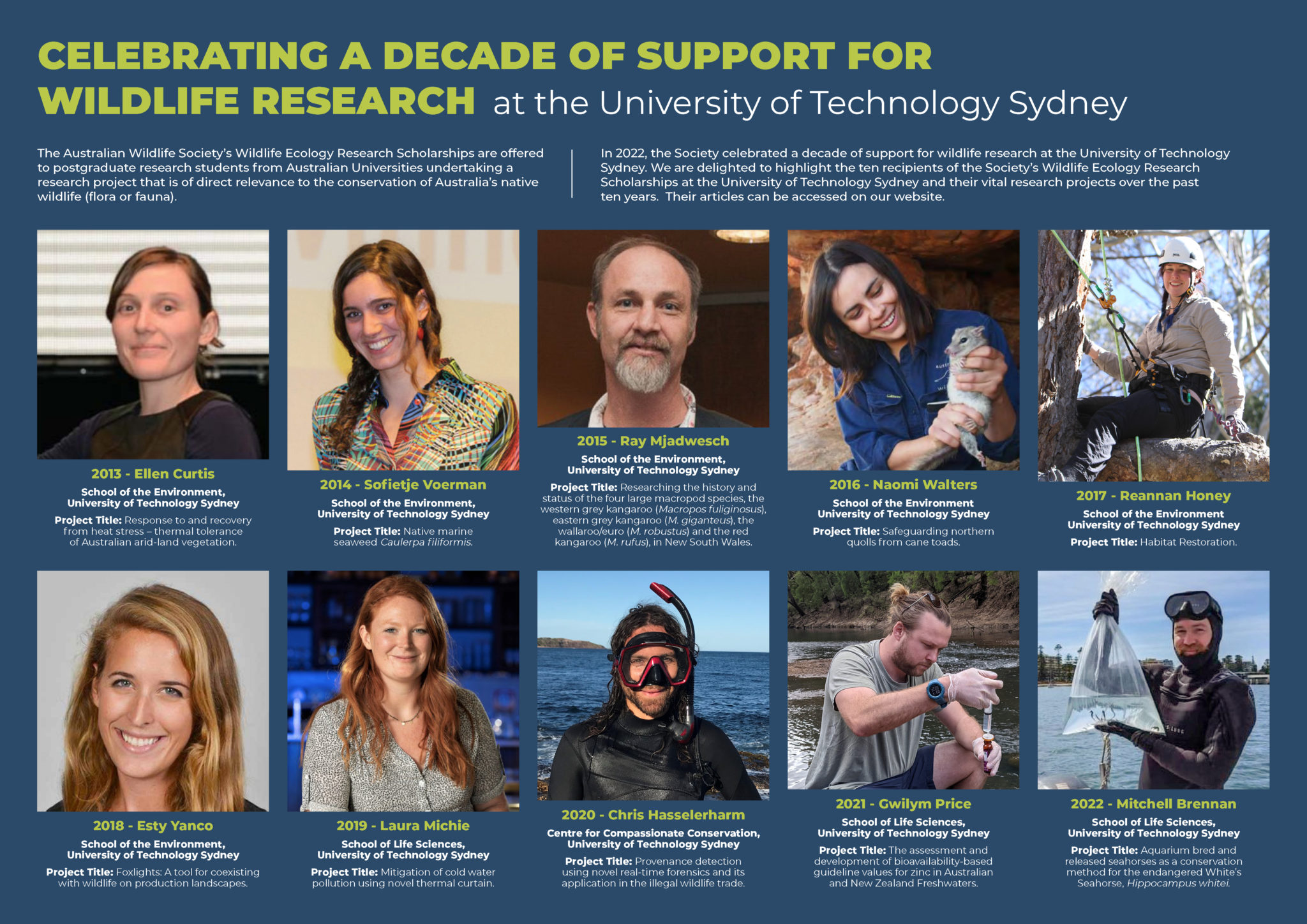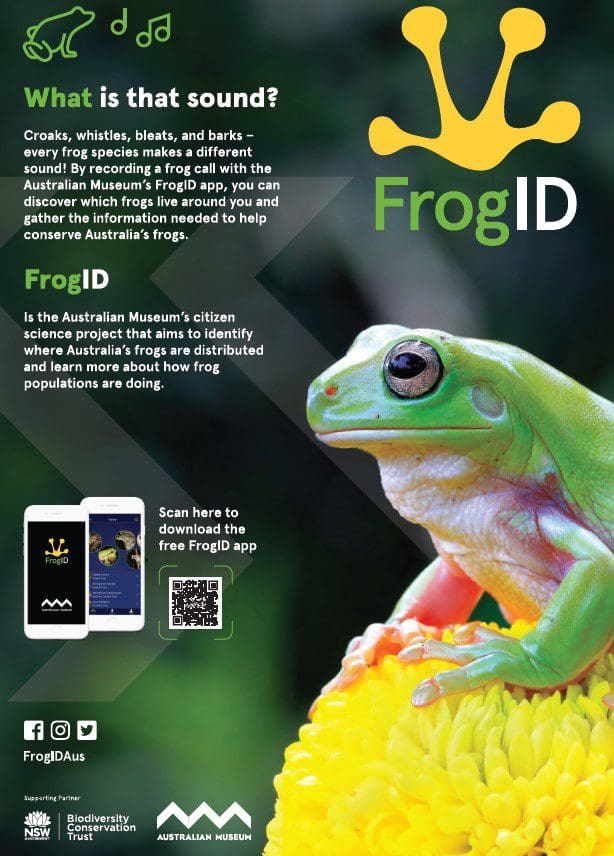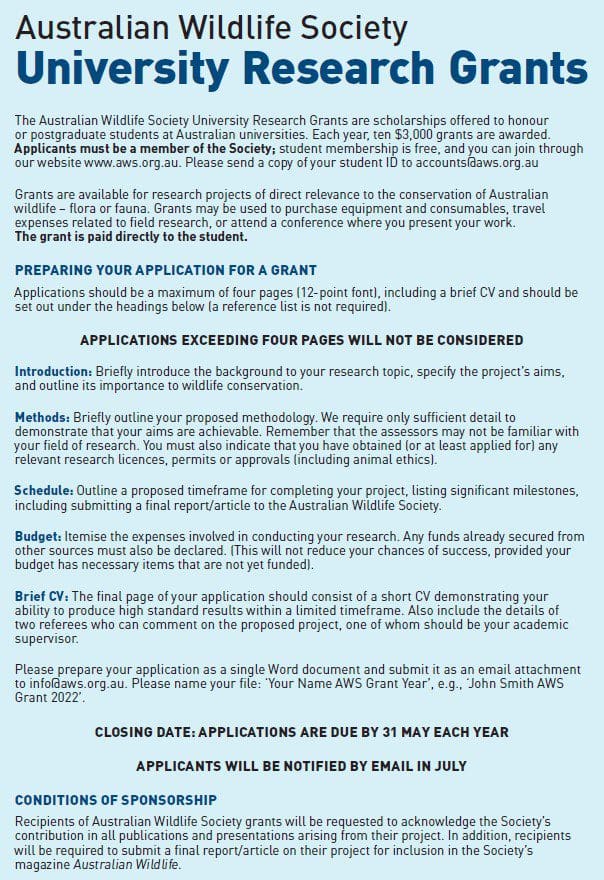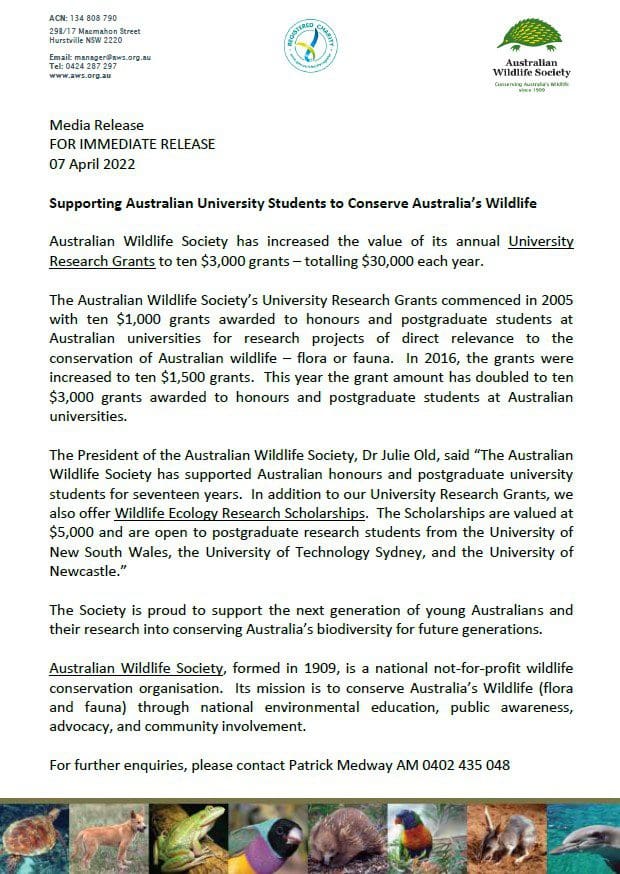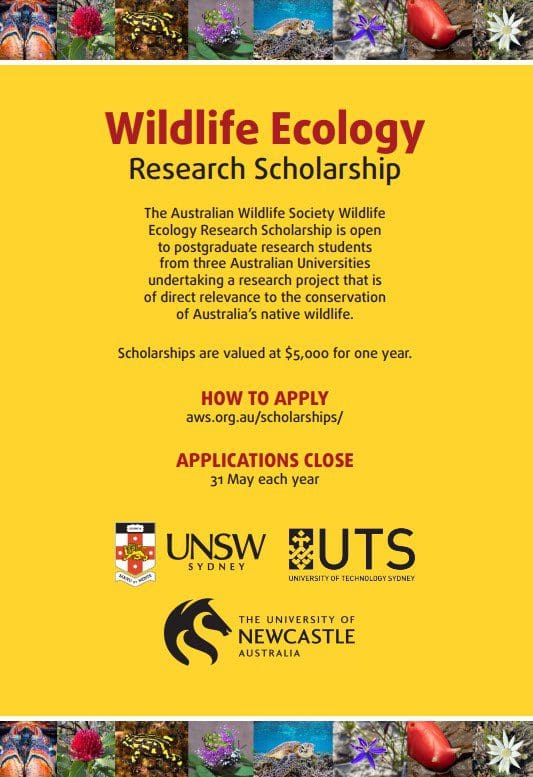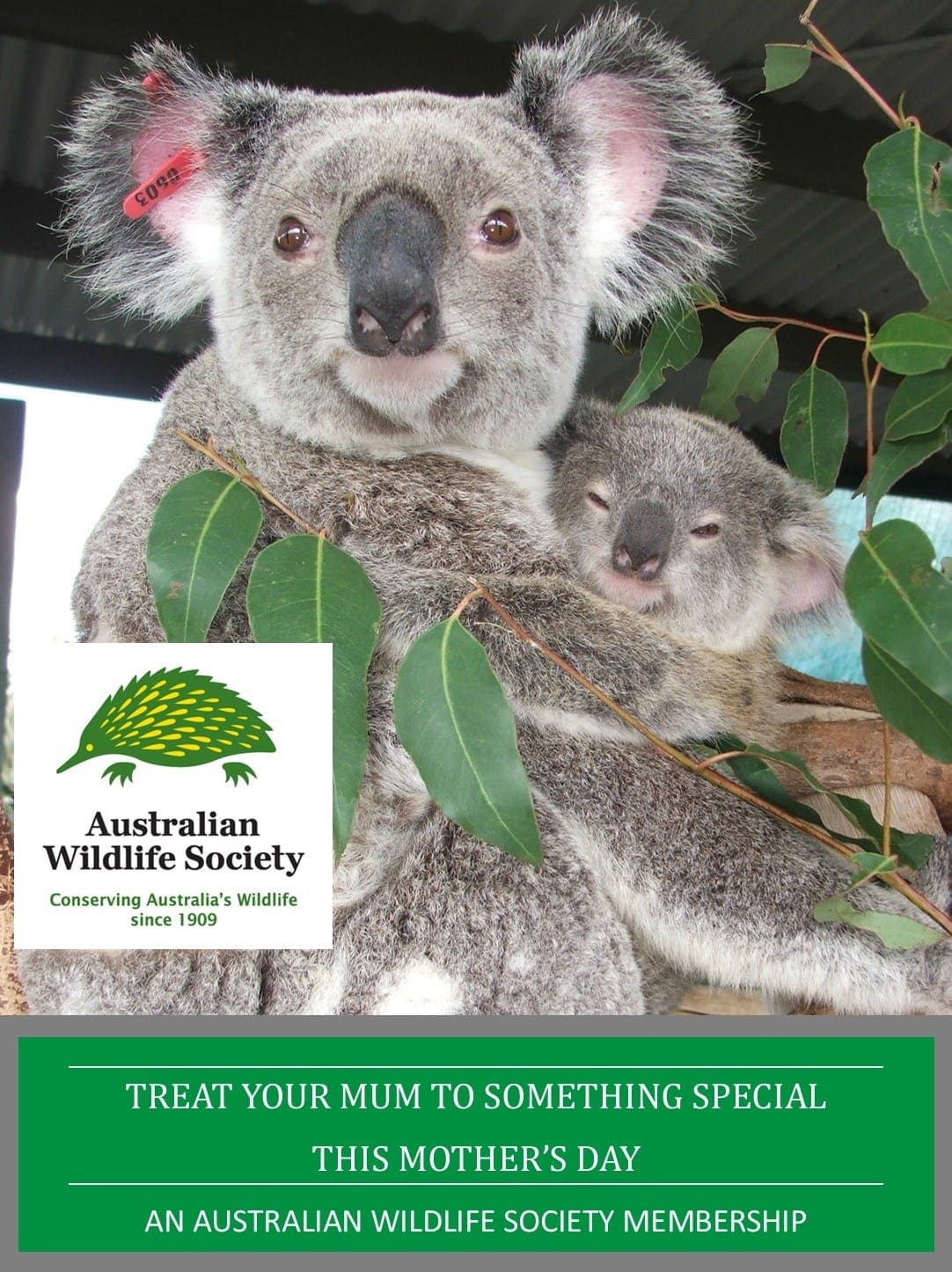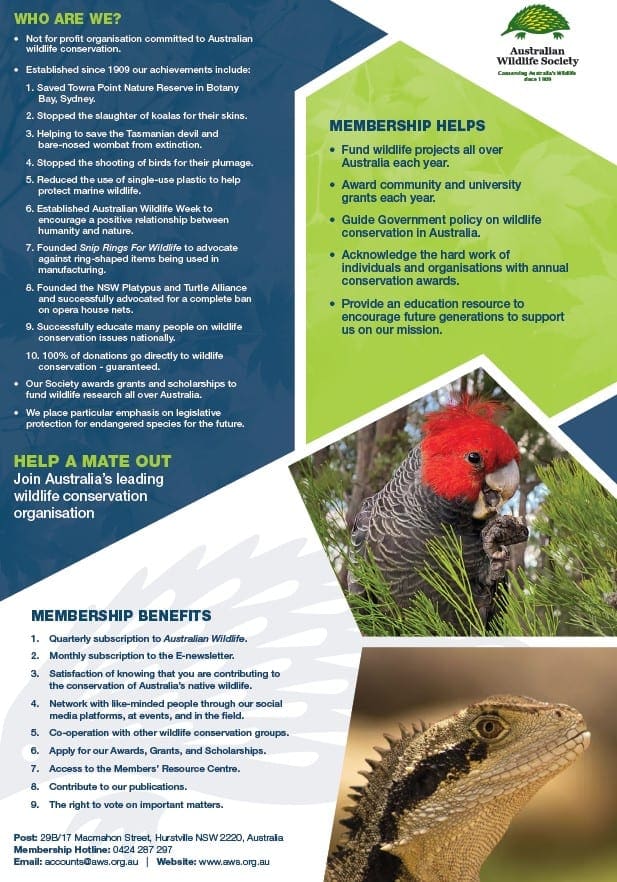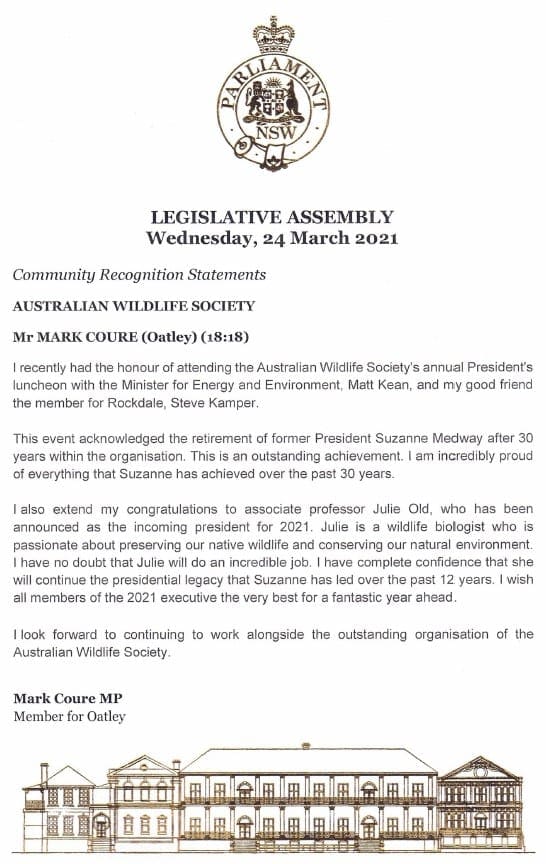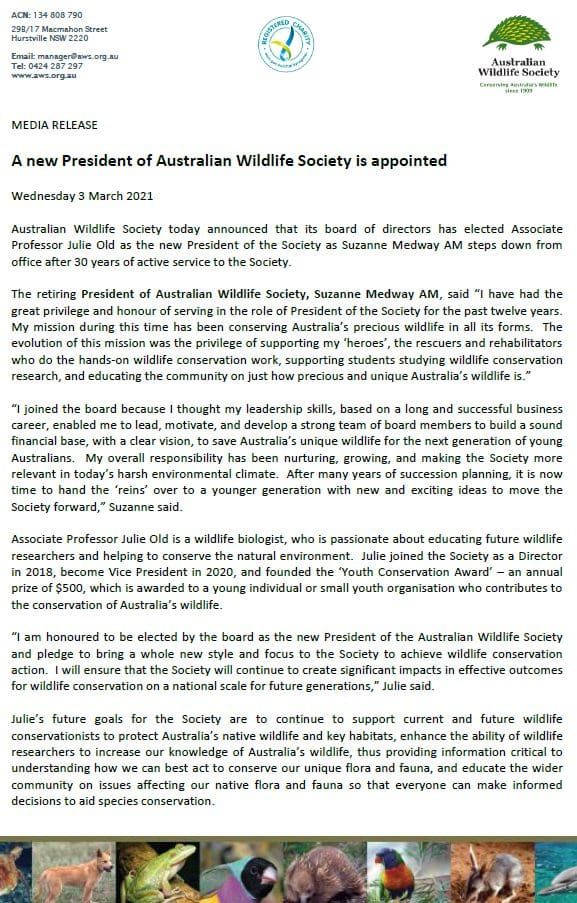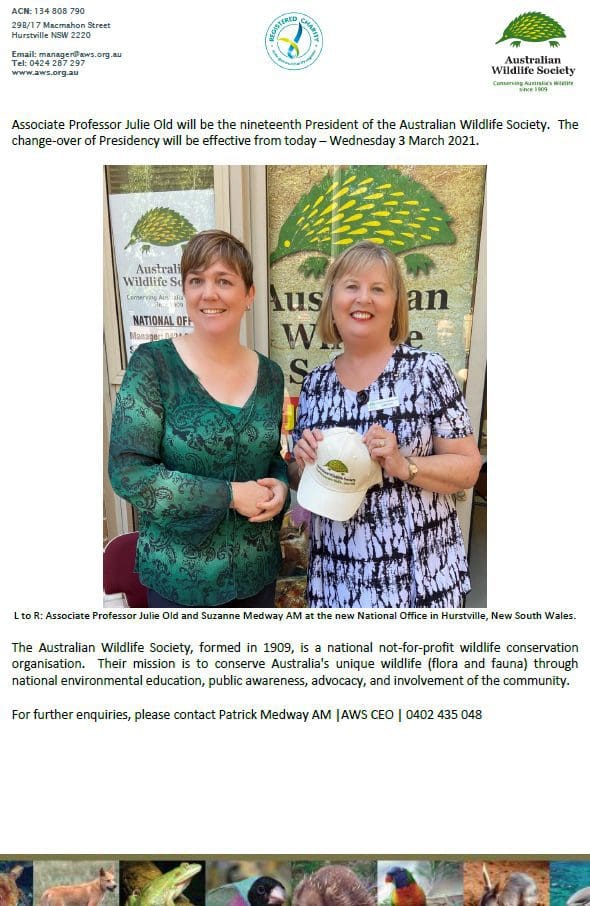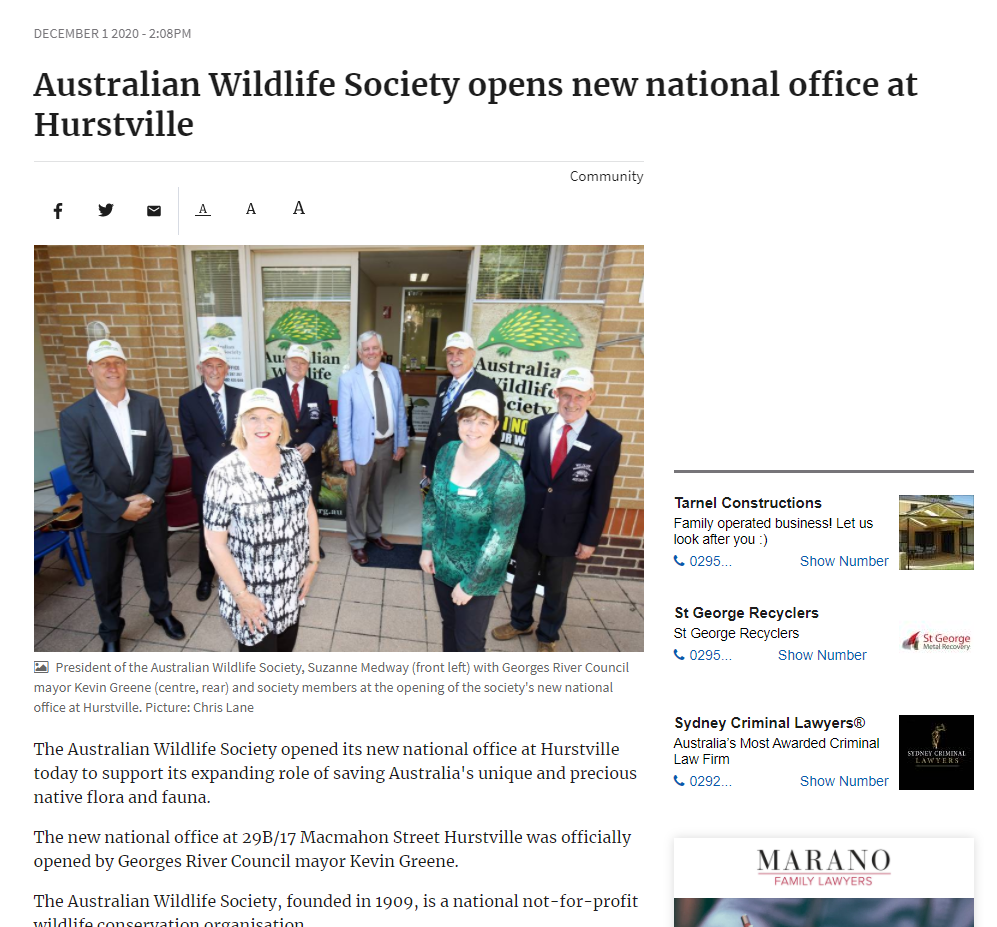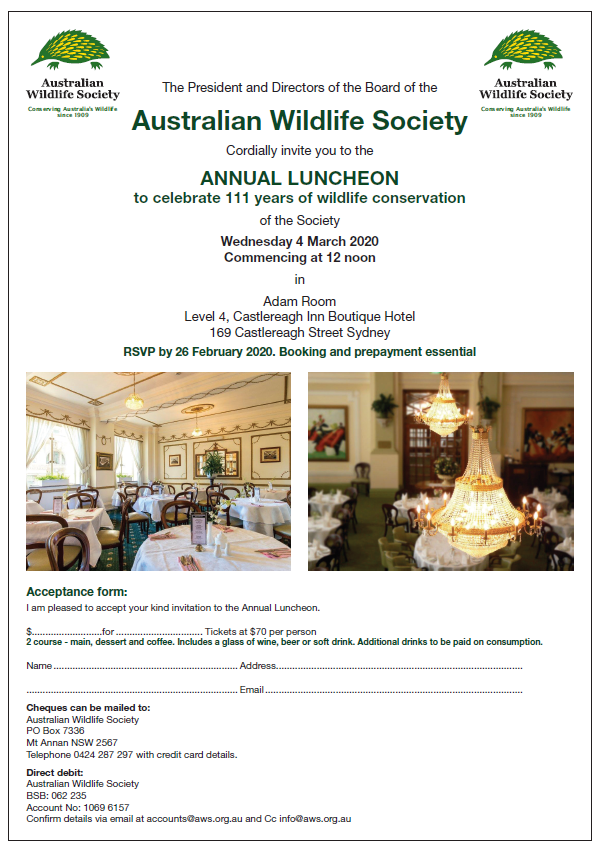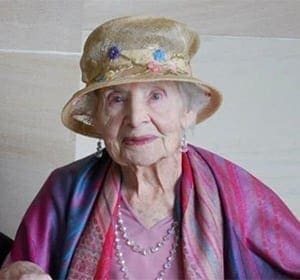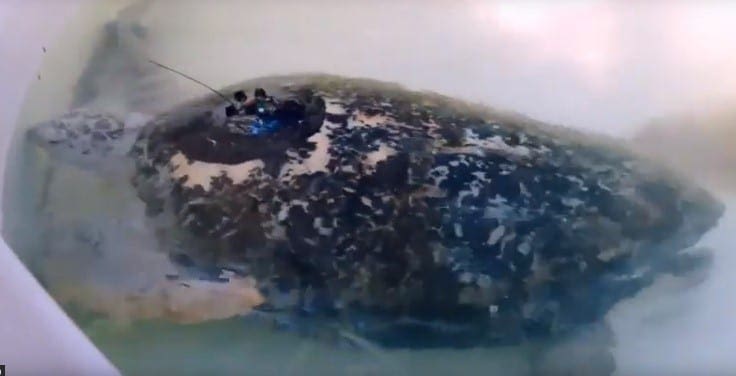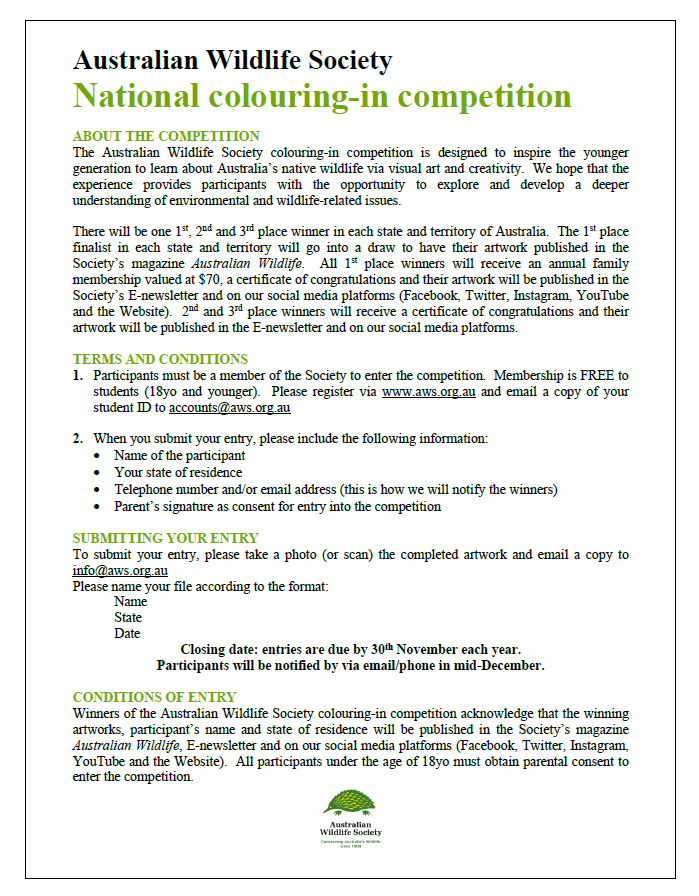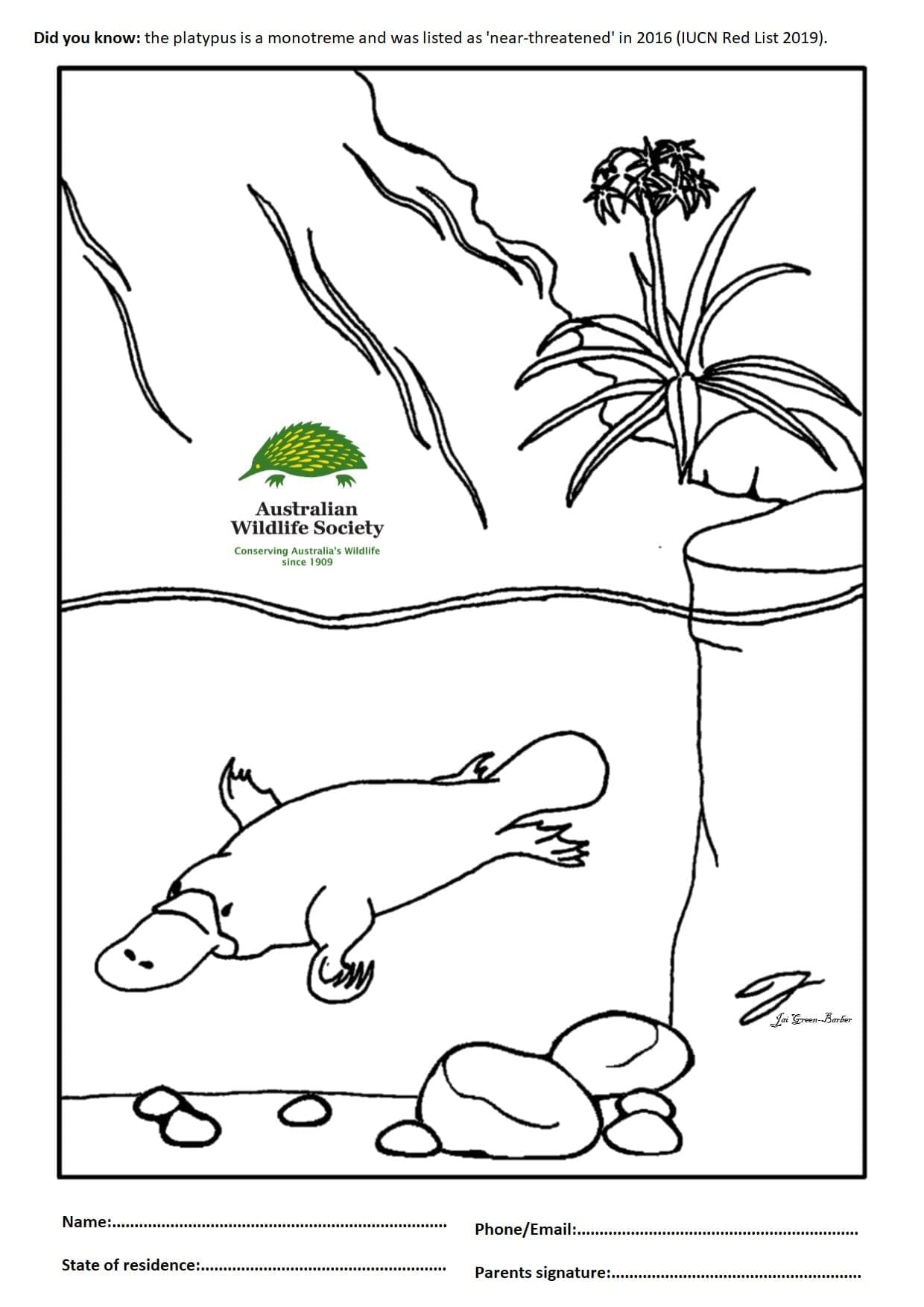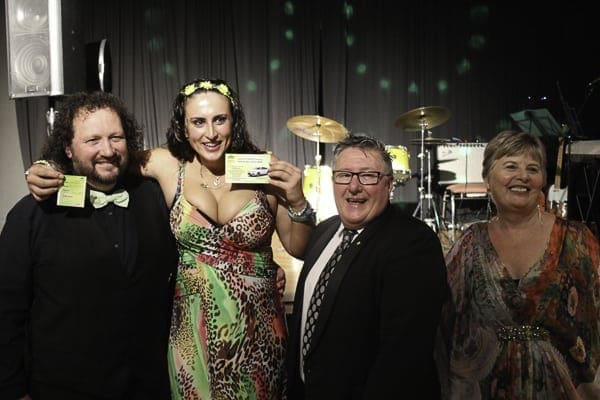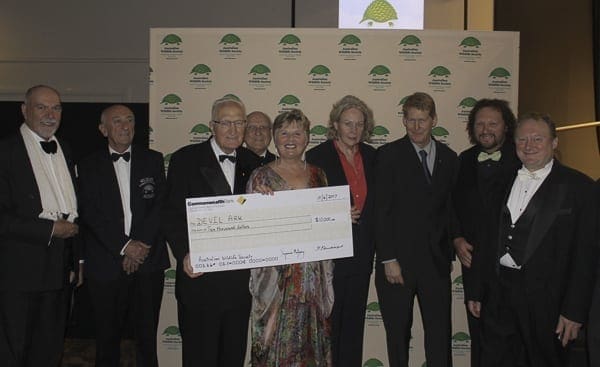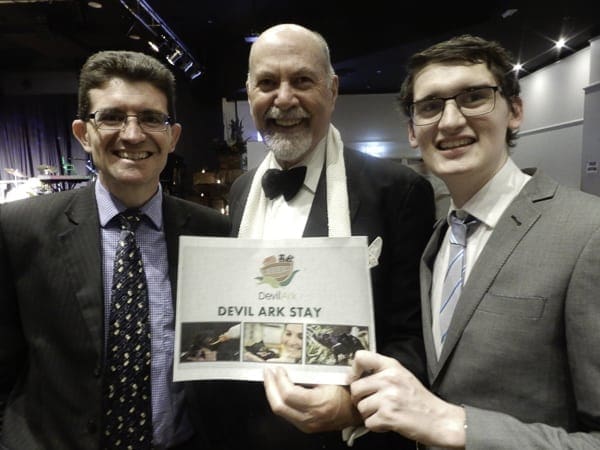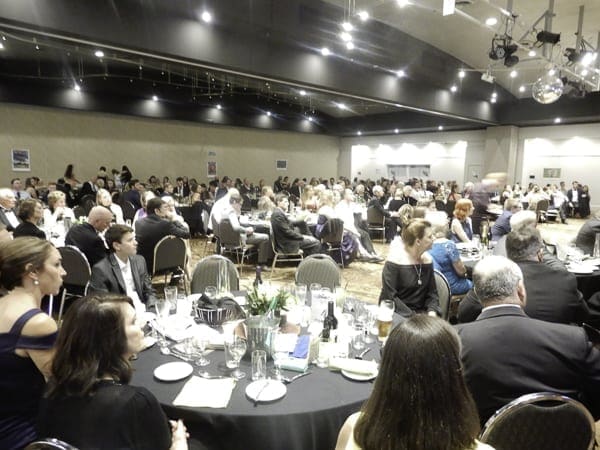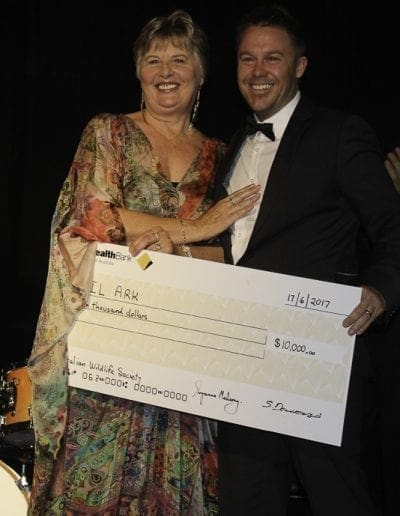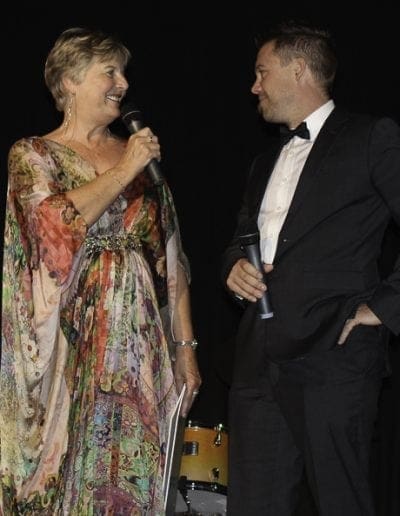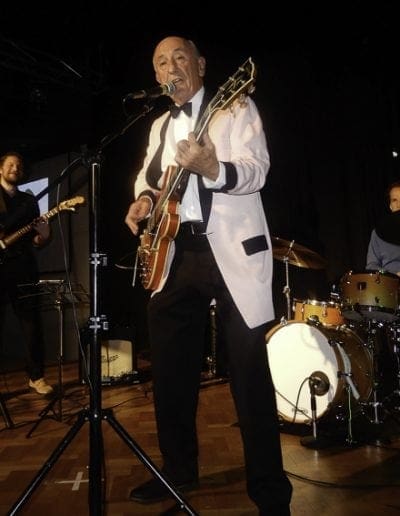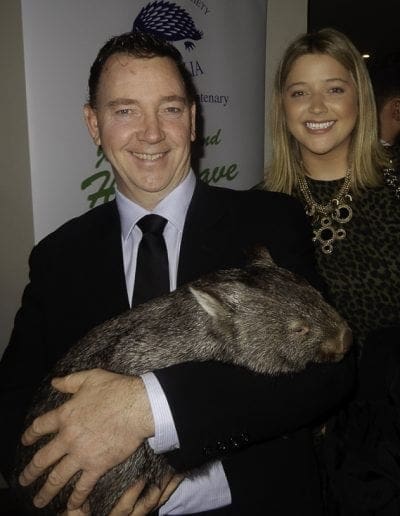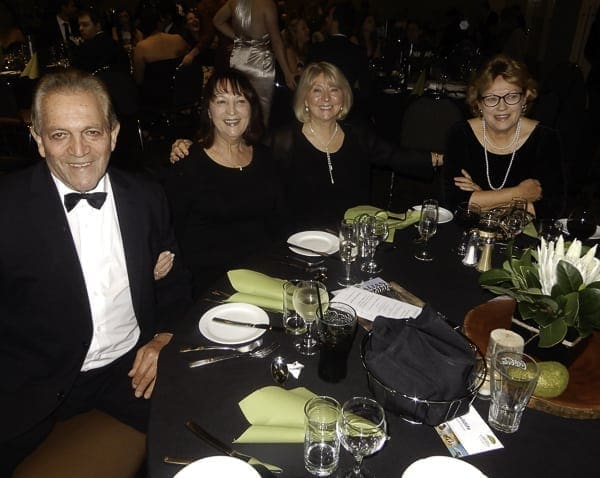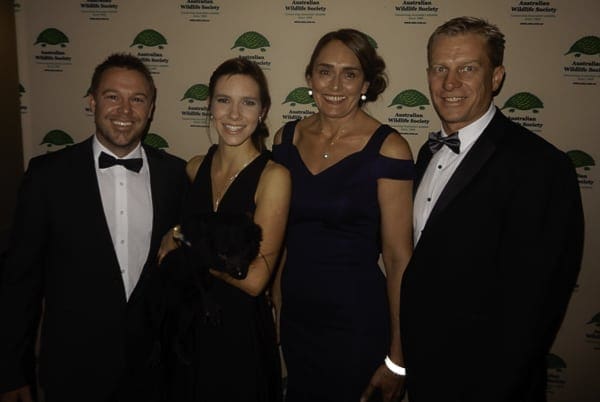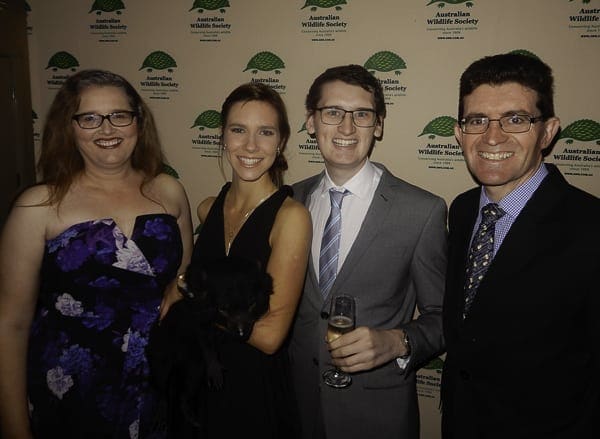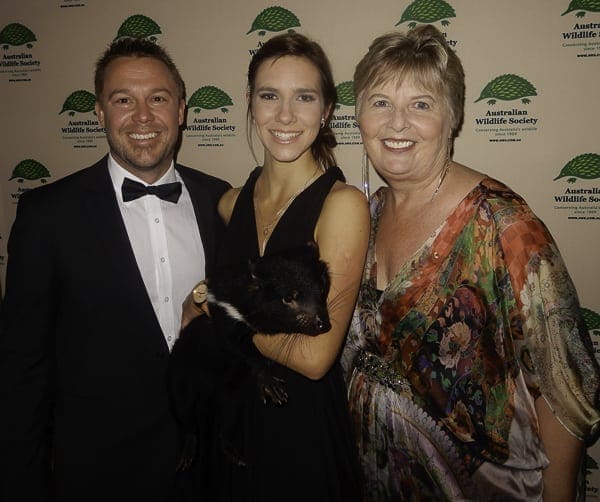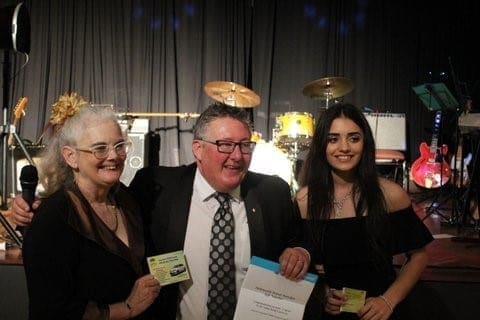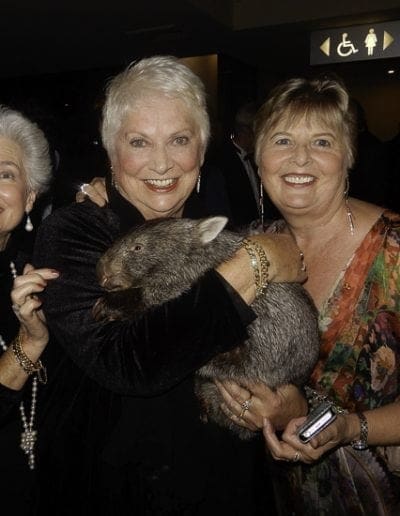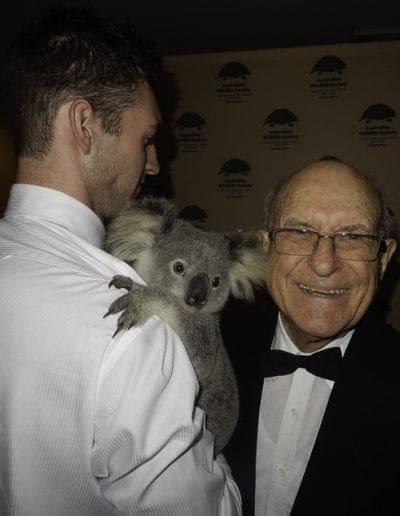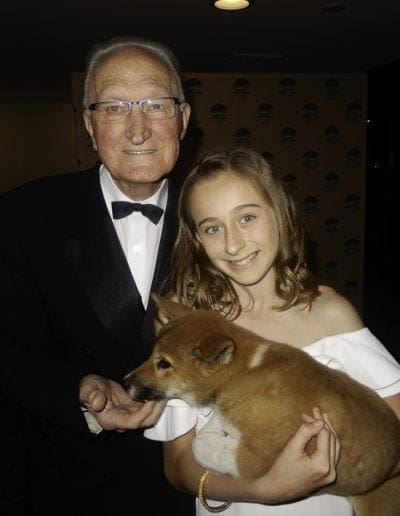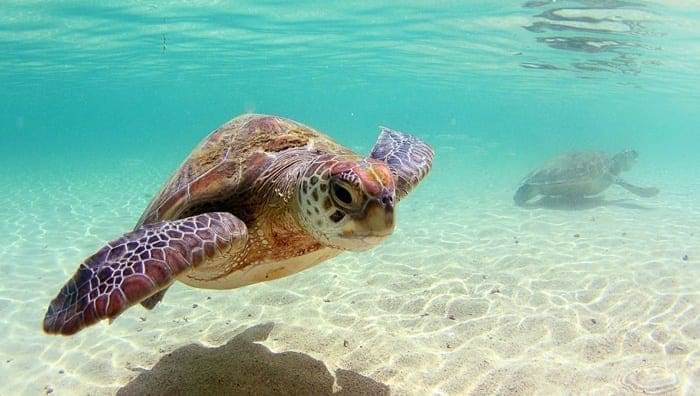Australian Wildlife Society News
To stay up to date, you can access our monthly e-newsletter here.
2023 News
The Society's Wildlife of the Year - Proteaceae
With a new year now upon us, we can announce the Wildlife of the Year for 2023. Keeping in mind that the Society aims to conserve both flora and fauna, this year, the Directors have chosen to highlight flora rather than fauna for the first time. The 2023 Wildlife of the Year is an iconic group of plants, the Proteaceae Family, a family which is distributed throughout all states of Australia and includes at least 1,100 species. Annie Nguyen, a volunteer member of our Conservation Committee, has written an article to introduce the Family to Society members.
Celebrating a Decade of Support at the University of Technology Sydney
In 2022, the Society celebrated a decade of support for wildlife research at the University of Technology Sydney. We are delighted to highlight the ten recipients of the Society’s Wildlife Ecology Research Scholarships at the University of Technology Sydney and their vital research projects over the past ten years. Their articles can be accessed HERE>.
2022 News
The Society's Wildlife of the Year - Australia's Amphibians
Inquiry Into Plastic Pollution in Australia's Oceans and Waterways
On Monday, 24 October 2022, the Minister for Environment and Water, Hon Tanya Plibersek MP, asked the Committee to inquire into and report on plastic pollution in Australia’s oceans and waterways. A copy of the Society's submission can be found below.
Australian Wildlife Week 2022
This year, the Society hosted an Art Display, Video Competition, and Online Webinar to celebrate Australian Wildlife Week. We hope you were inspired to implement conservation action to protect our native species and their fragile ecosystems for future generations.
Threatened Species Conservation and Mountian Pygmy-Possum Opening
On Wednesday, 7 September 2022, Threatened Species Day, the Society attended the Minister's Threatened Species Conservation: Powered by Partnerships event, hosted by the Taronga Conservation Society.
In 2020, the Society partly funded a new mountain pygmy-possum (Burramys parvus) breeding facility to help save the species from a changing climate and possible extinction. On Sunday, 11 September 2022, the official opening of the mountain pygmy-possum breeding facility took place.
The Queen's Platinum Jubilee Australia 2022
The Society was delighted to be invited to Government House, Canberra, on Saturday 11 June 2022 to celebrate the Platinum Jubilee of Her Majesty The Queen.
The Society has Increased its Annual University Research Grants
Australian Wildlife Society has increased the value of its annual University Research Grants to ten $3,000 grants – totalling $30,000 each year.
Cat Containment: Encouraging Responsible Pet Ownership
2021 News
MEDIA RELEASE - 15/09/21. Australian Wildlife Week Webinar

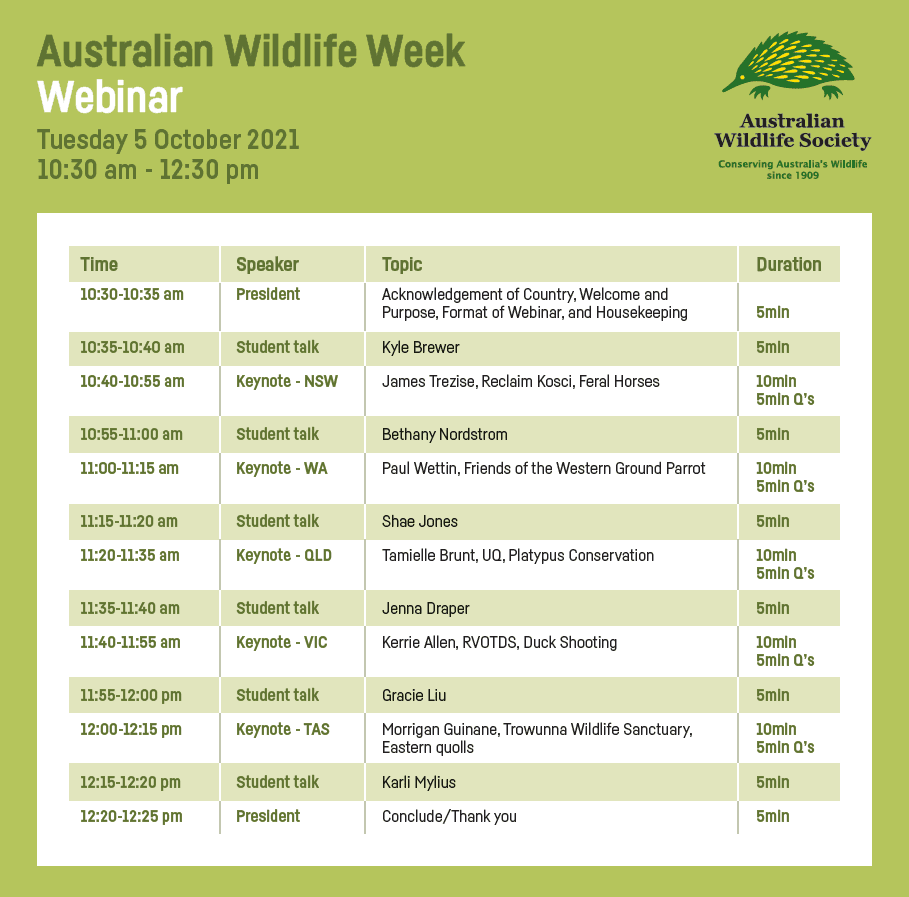
#SnipRingsforWildlife: A new Parliamentary Petition is launched
On Wednesday 19 May 2021, the Society met with Mark Coure MP, the Member for Oatley, New South Wales. The Society’s Chief Executive Officer, Patrick Medway AM, provided Mark with a brief overview of the Society’s wildlife conservation projects and business operations. Mark expressed a great interest in our wildlife conservation projects across New South Wales. The Society asked for Mark’s support to present the #SnipRingsforWildlife ePetition in Parliament on behalf of the Society. Mark has an ongoing commitment to reducing waste and understood the deadly impact that ring-shaped items have on native wildlife. Mark agreed to present the ePetition in Parliament to help protect wildlife from the risk of entanglement and dying horrific deaths from ring-shaped items. As the meeting concluded, Directors Wayne Greenwood and Ken Mason presented Mark with a history book of the wildlife conservation work of the Society since its inception in 1909.
The National Office is Blooming
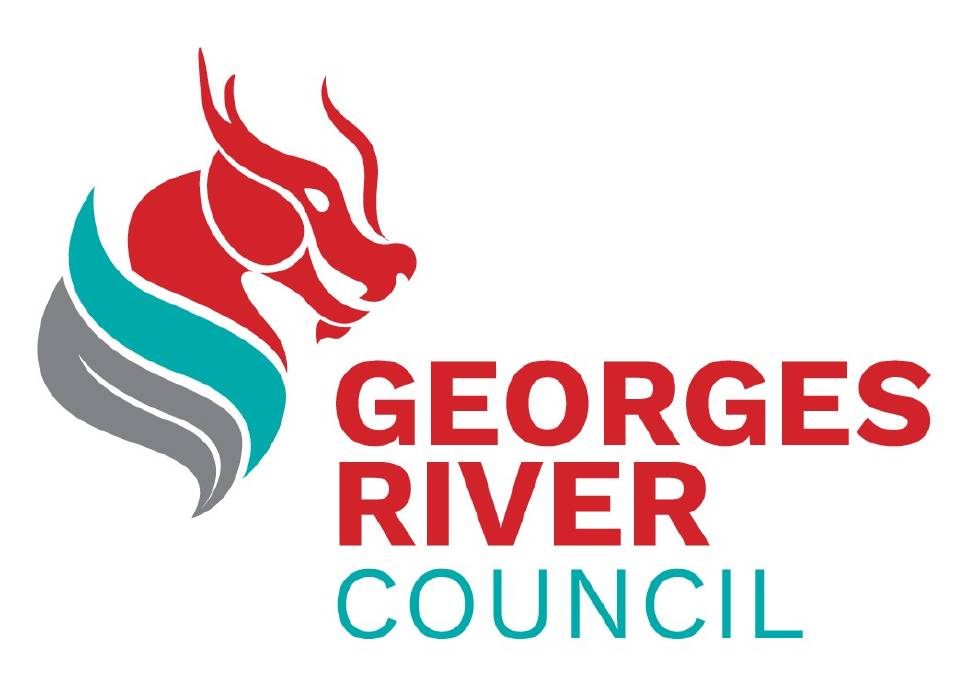
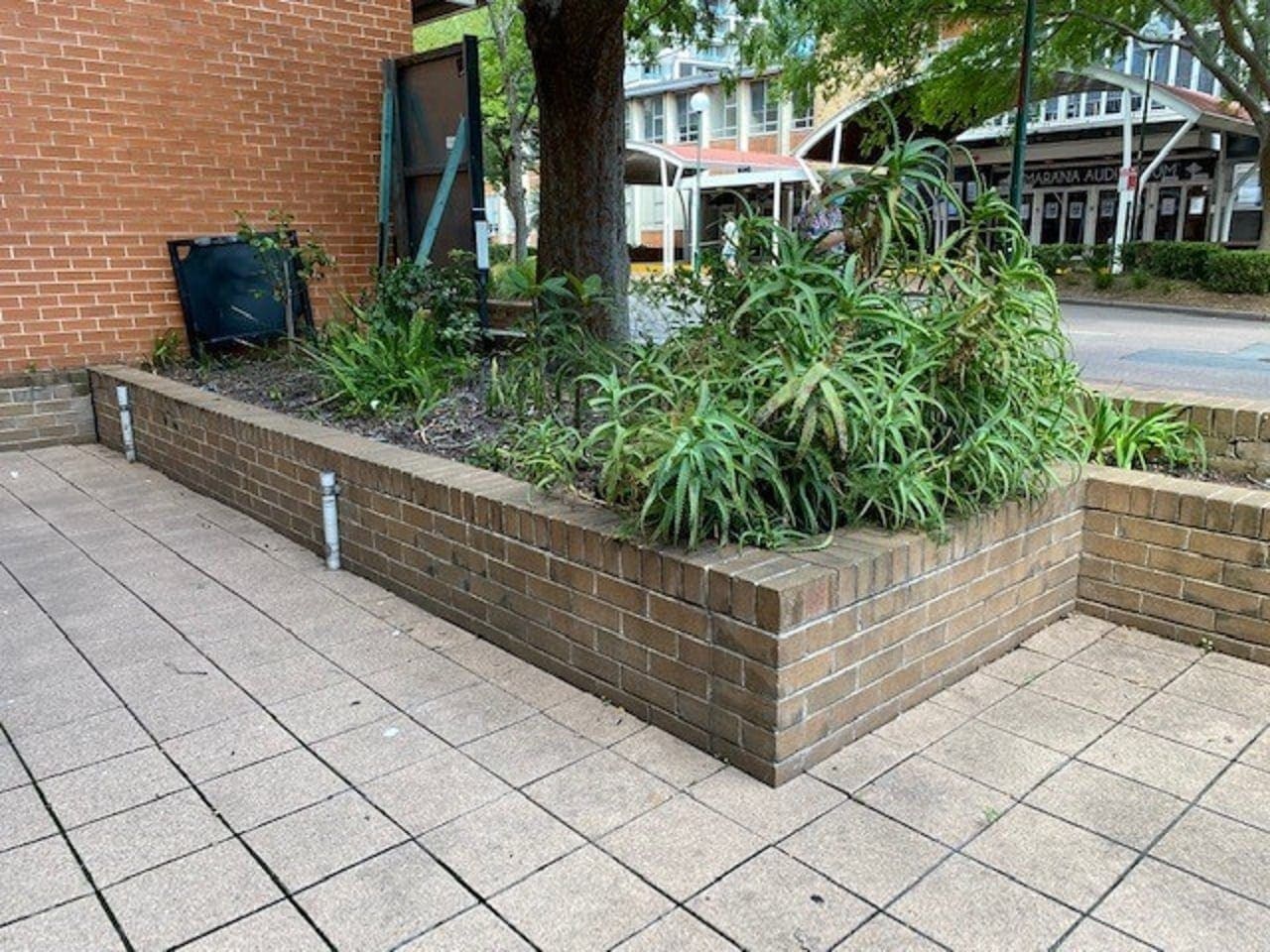
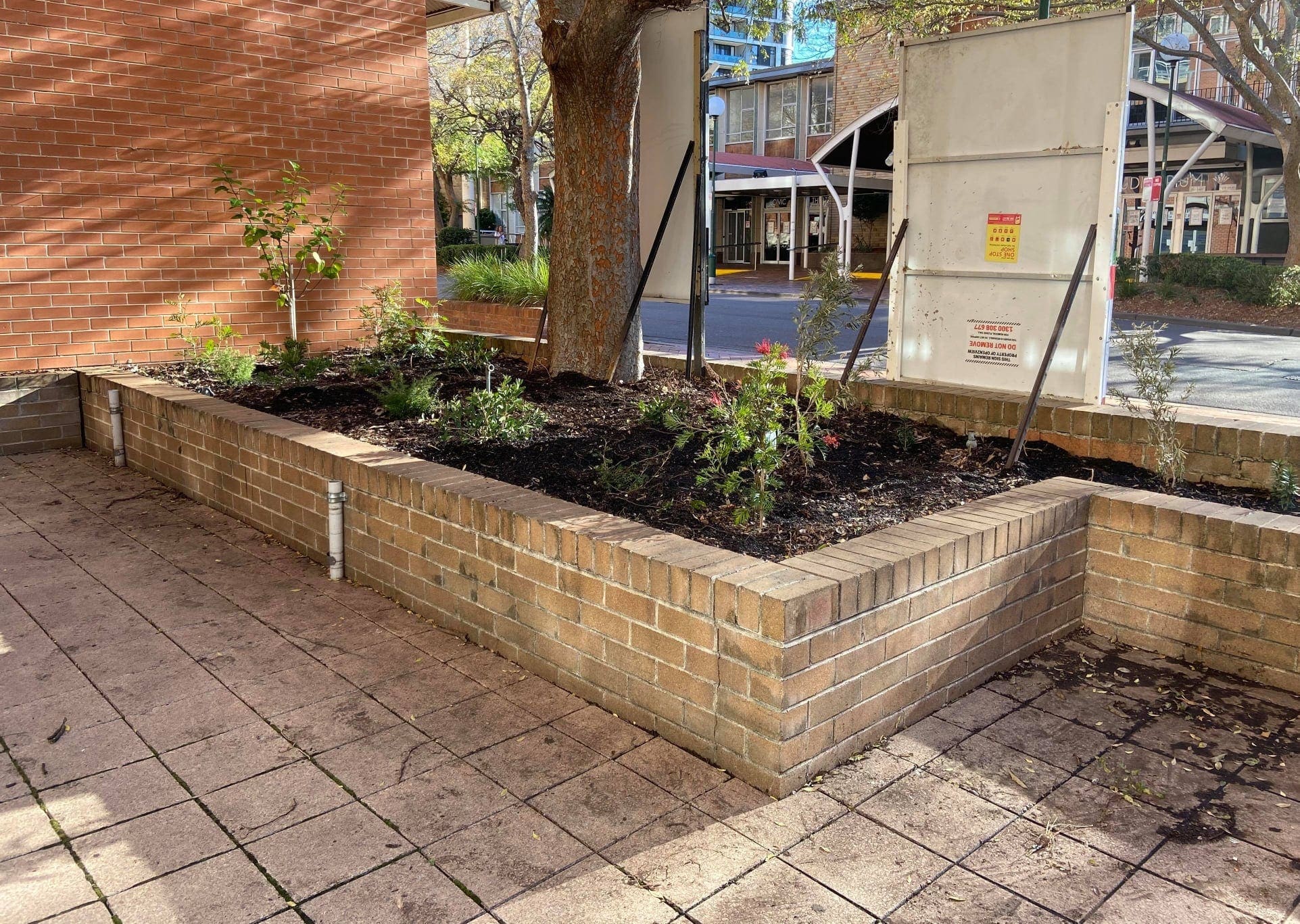

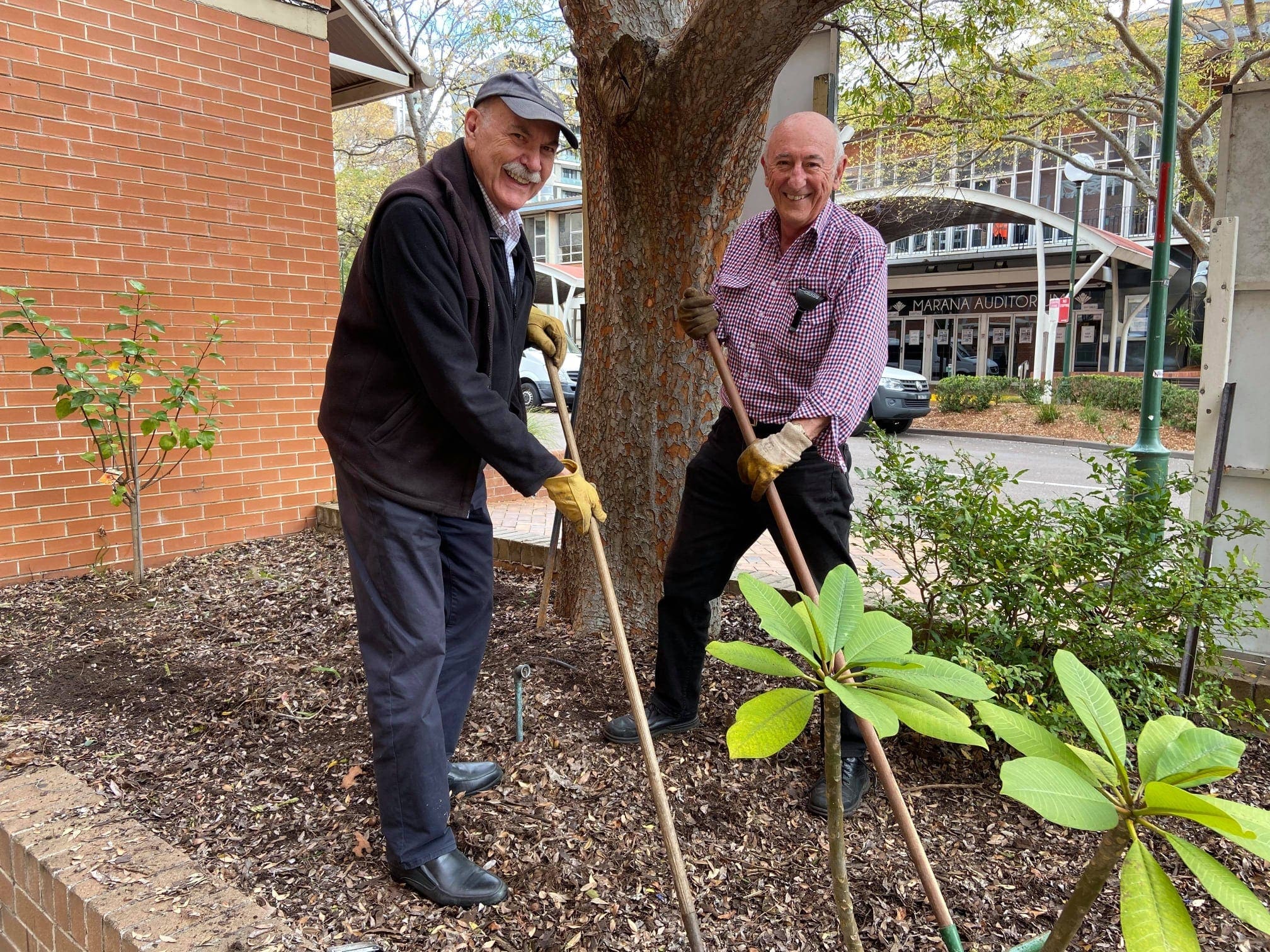
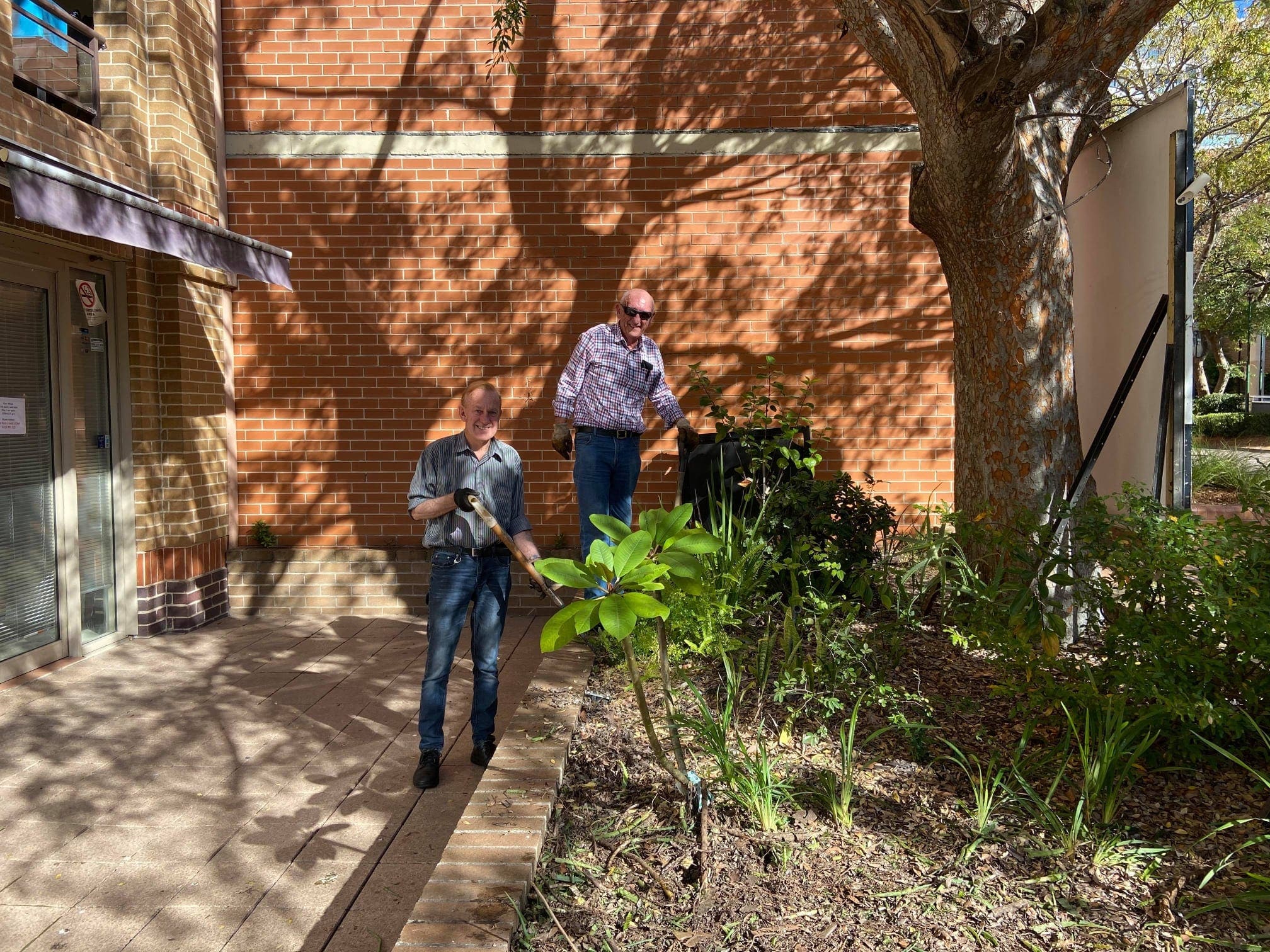
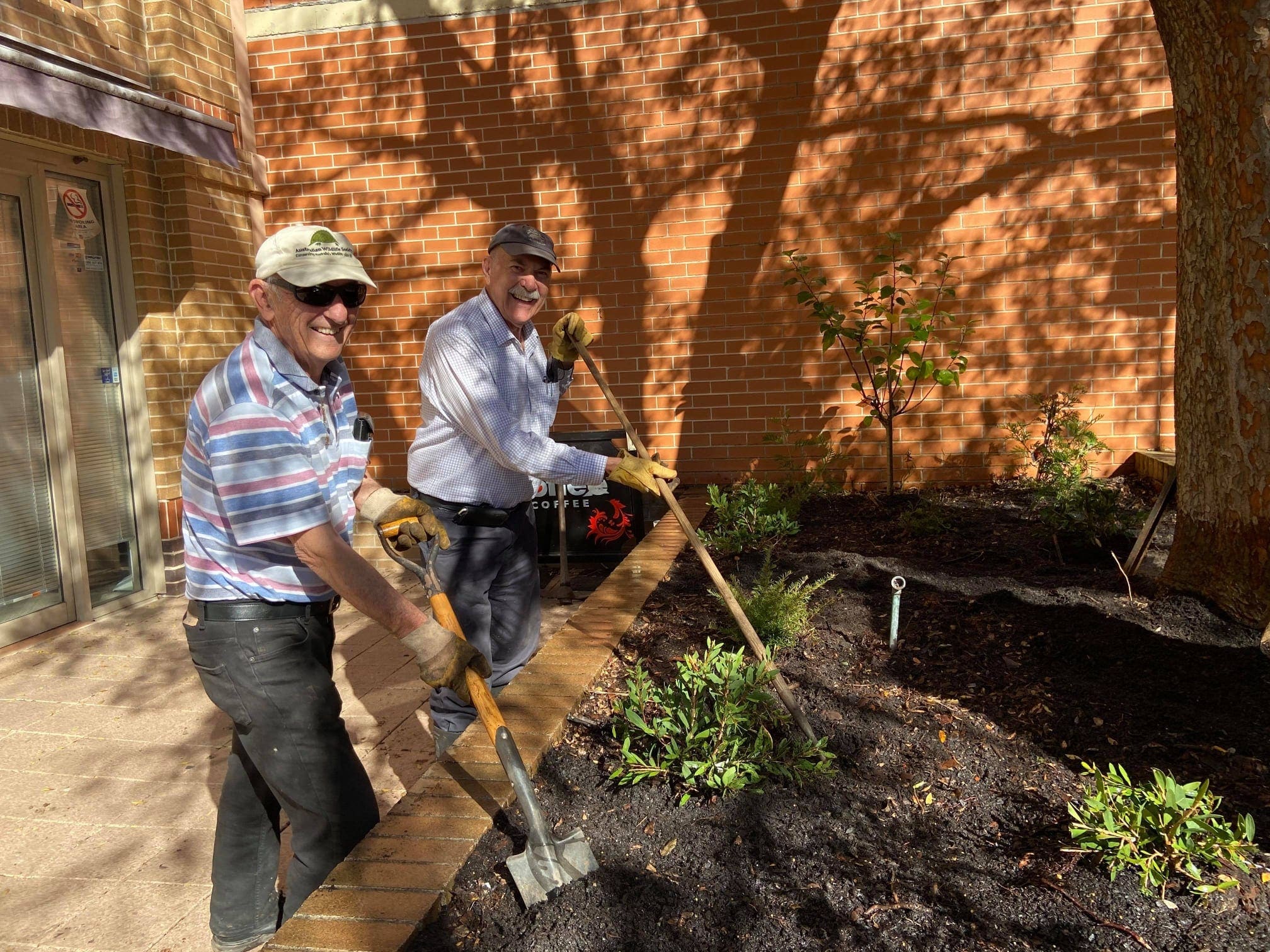
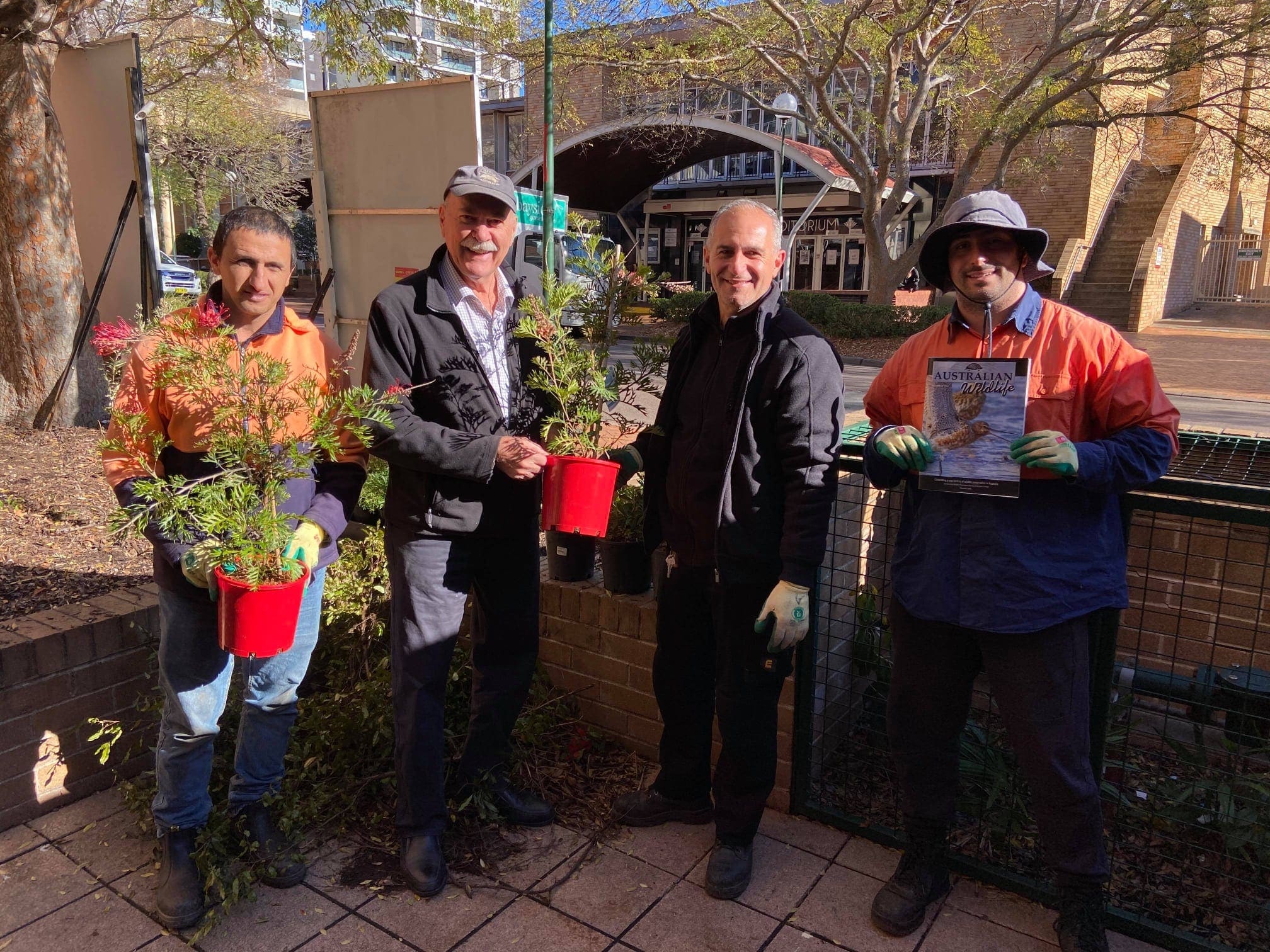
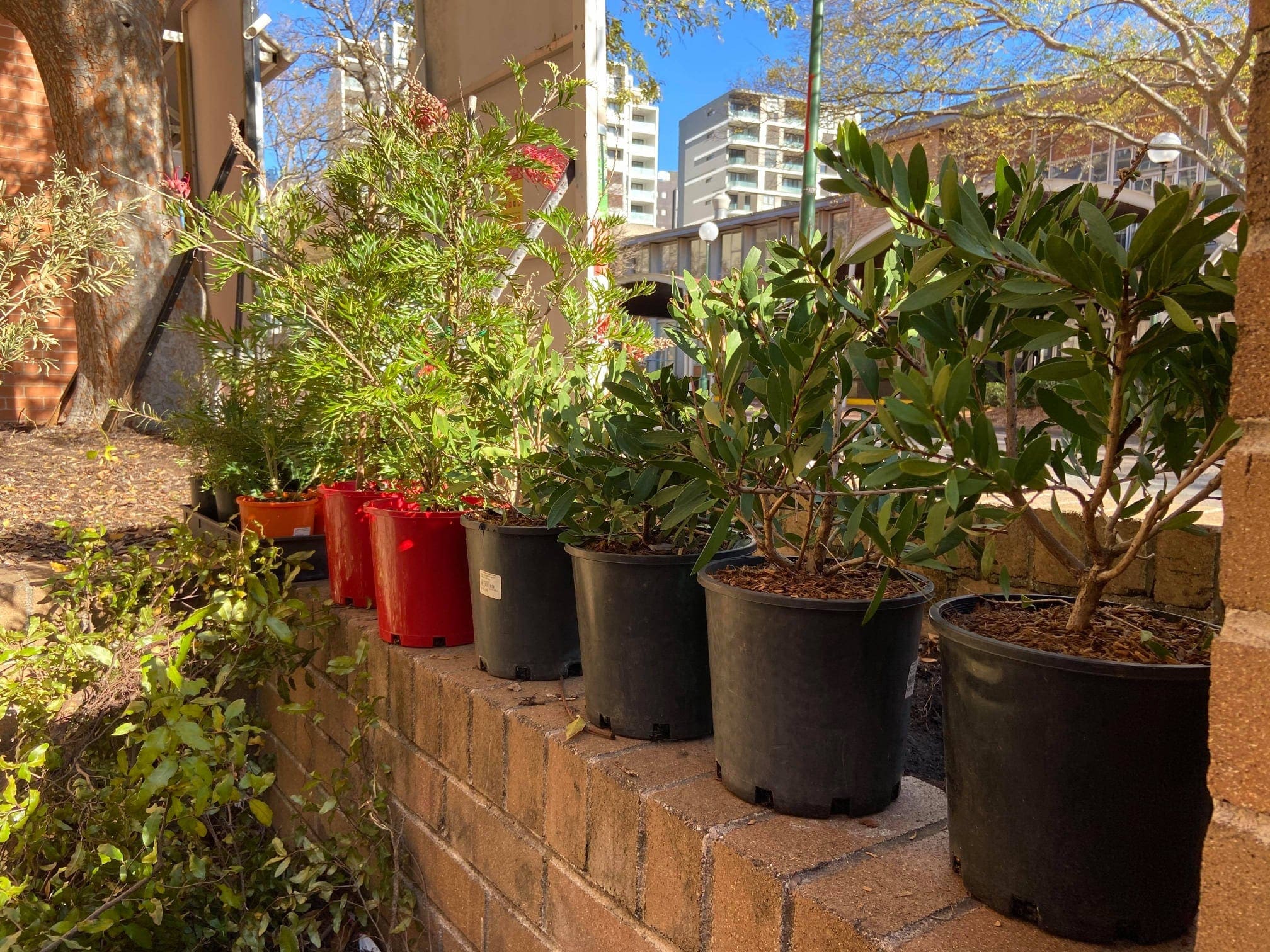
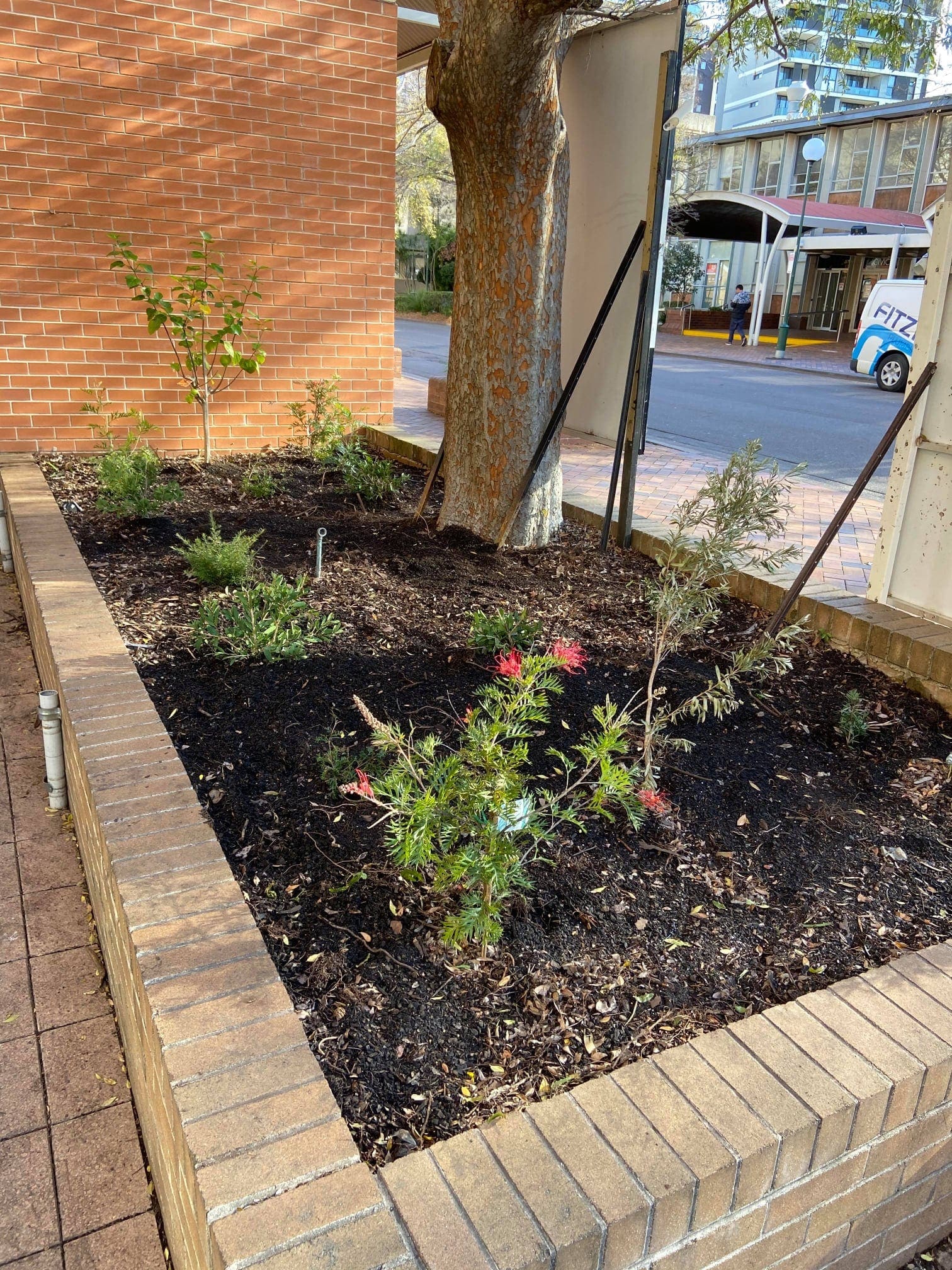
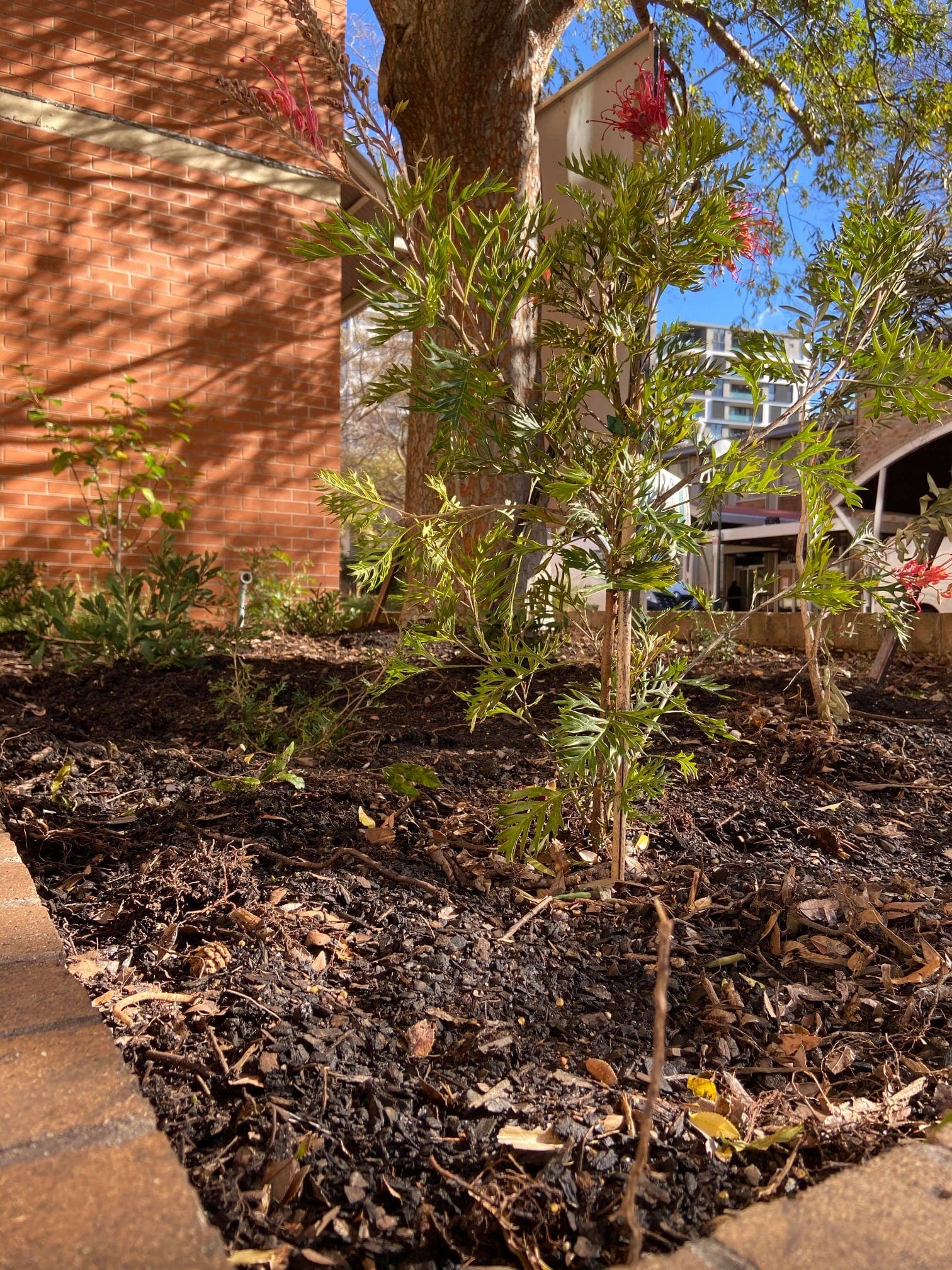
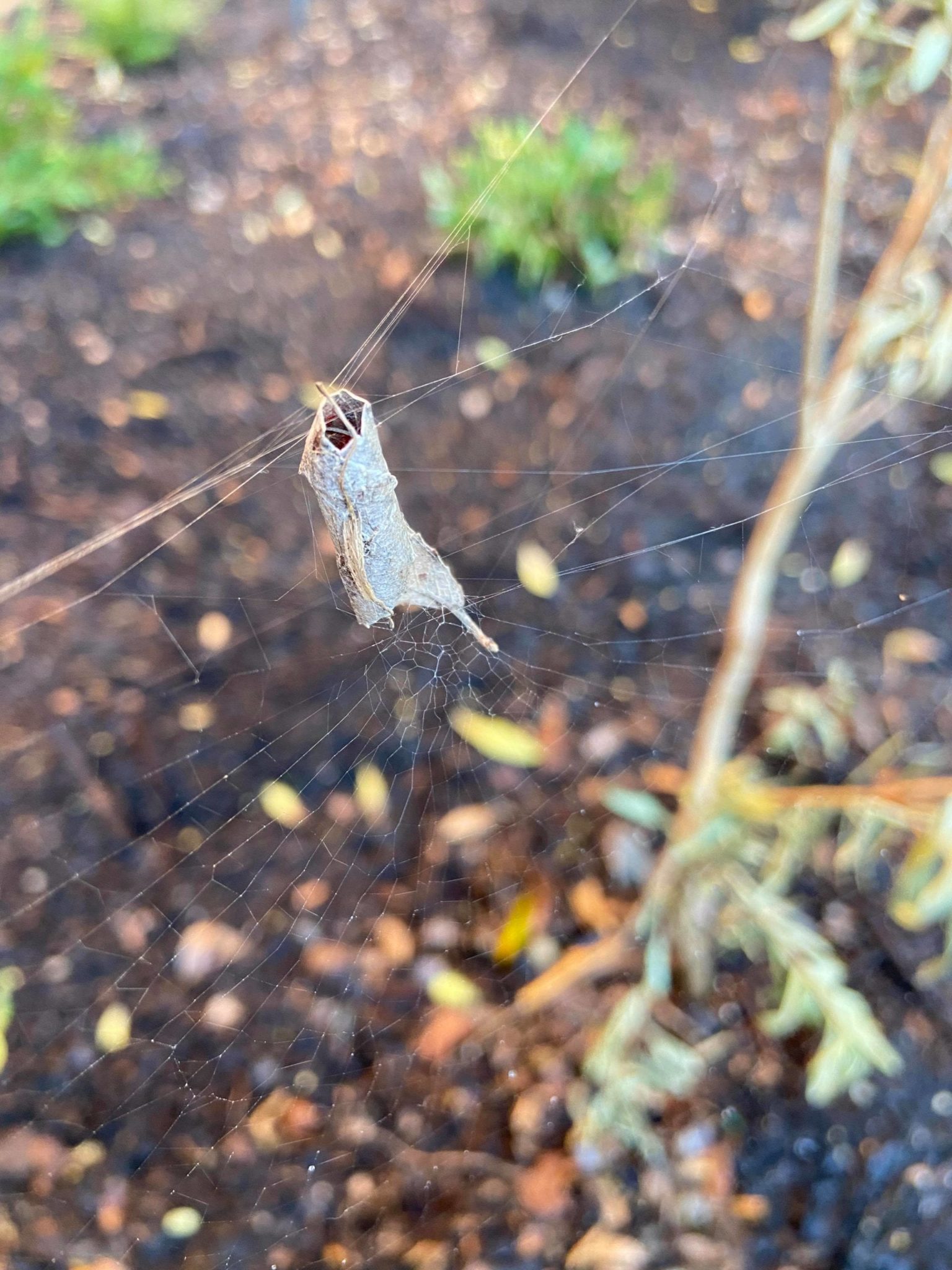
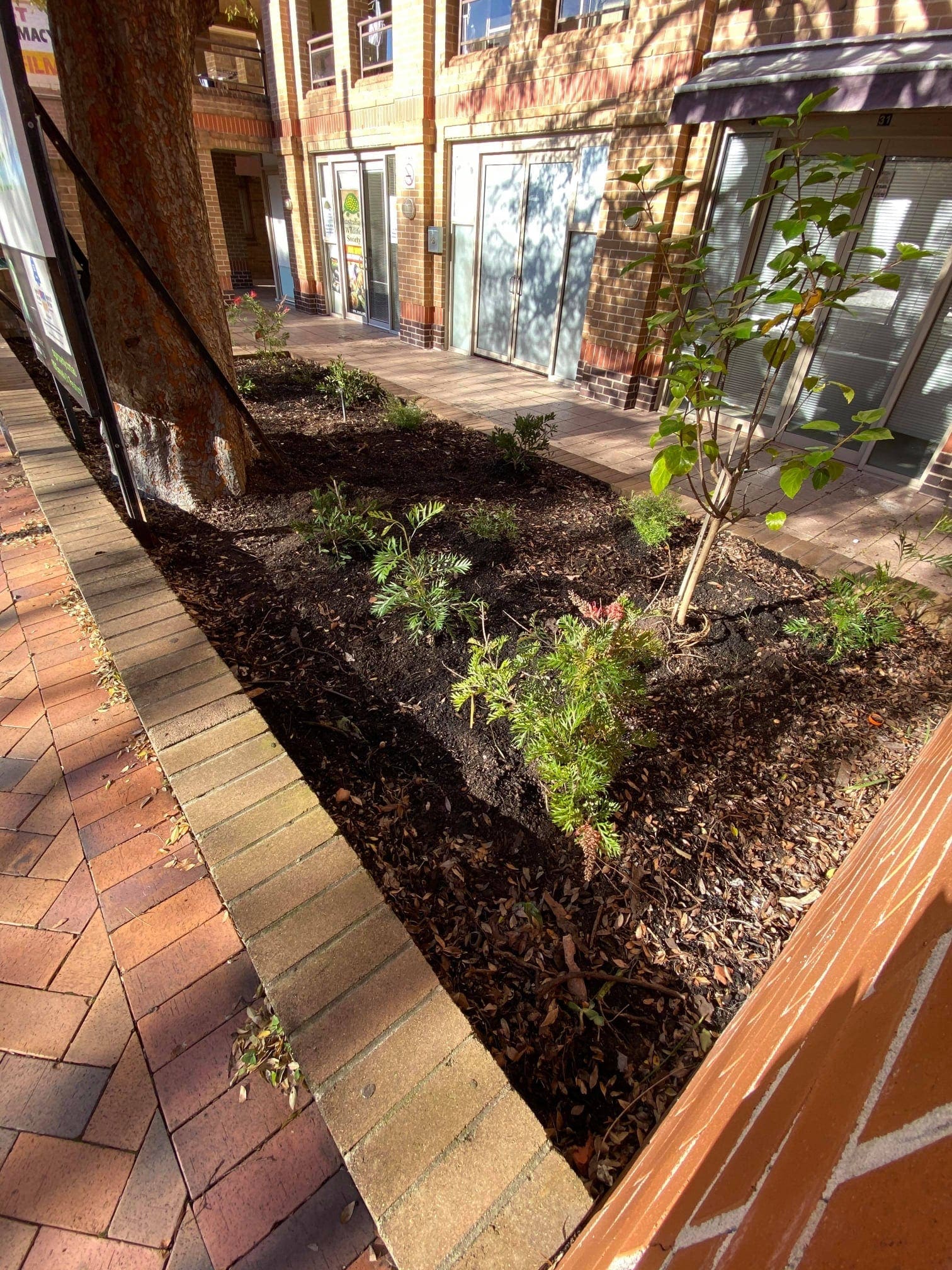
Little Ark Preschool Visit
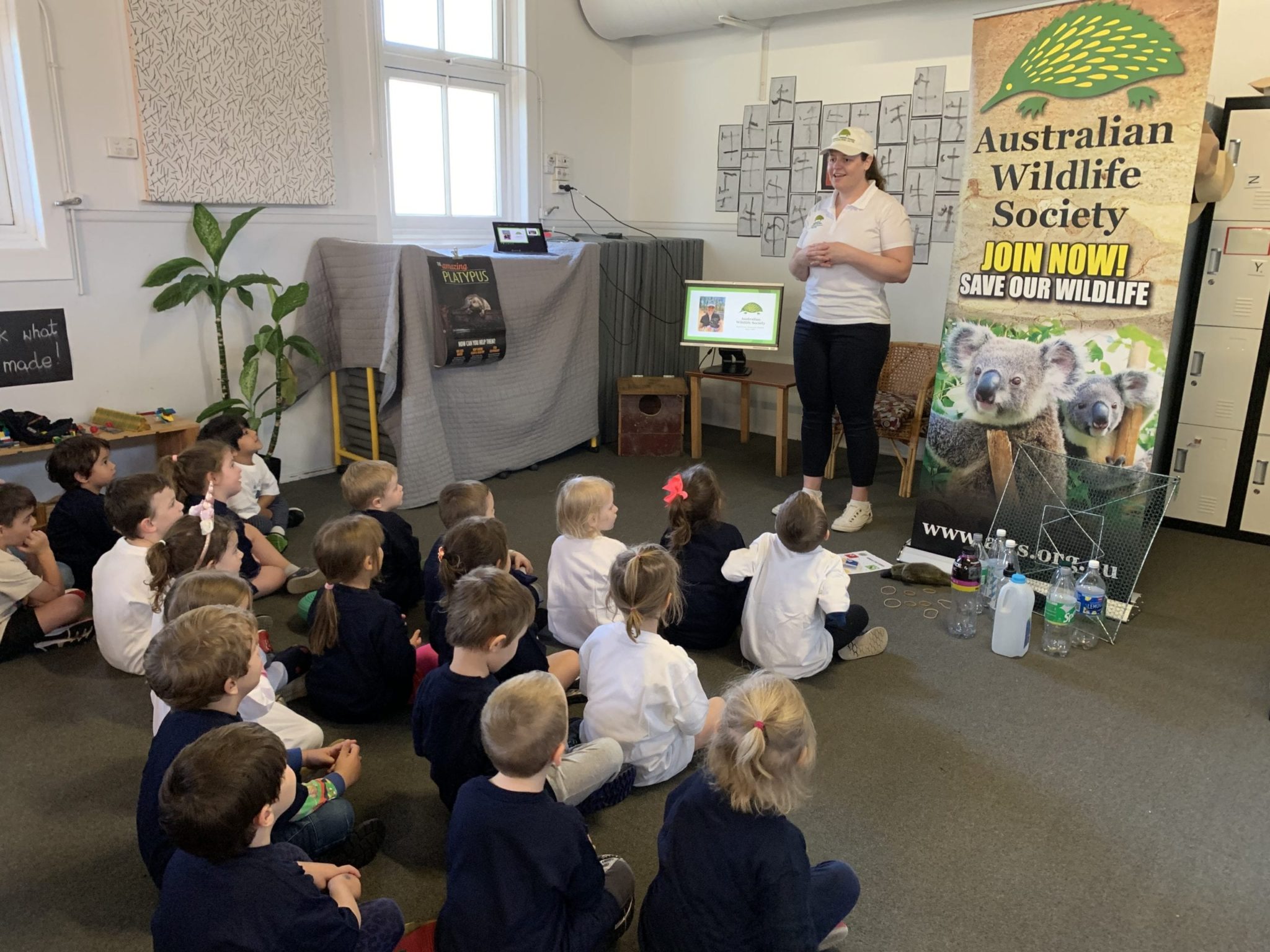
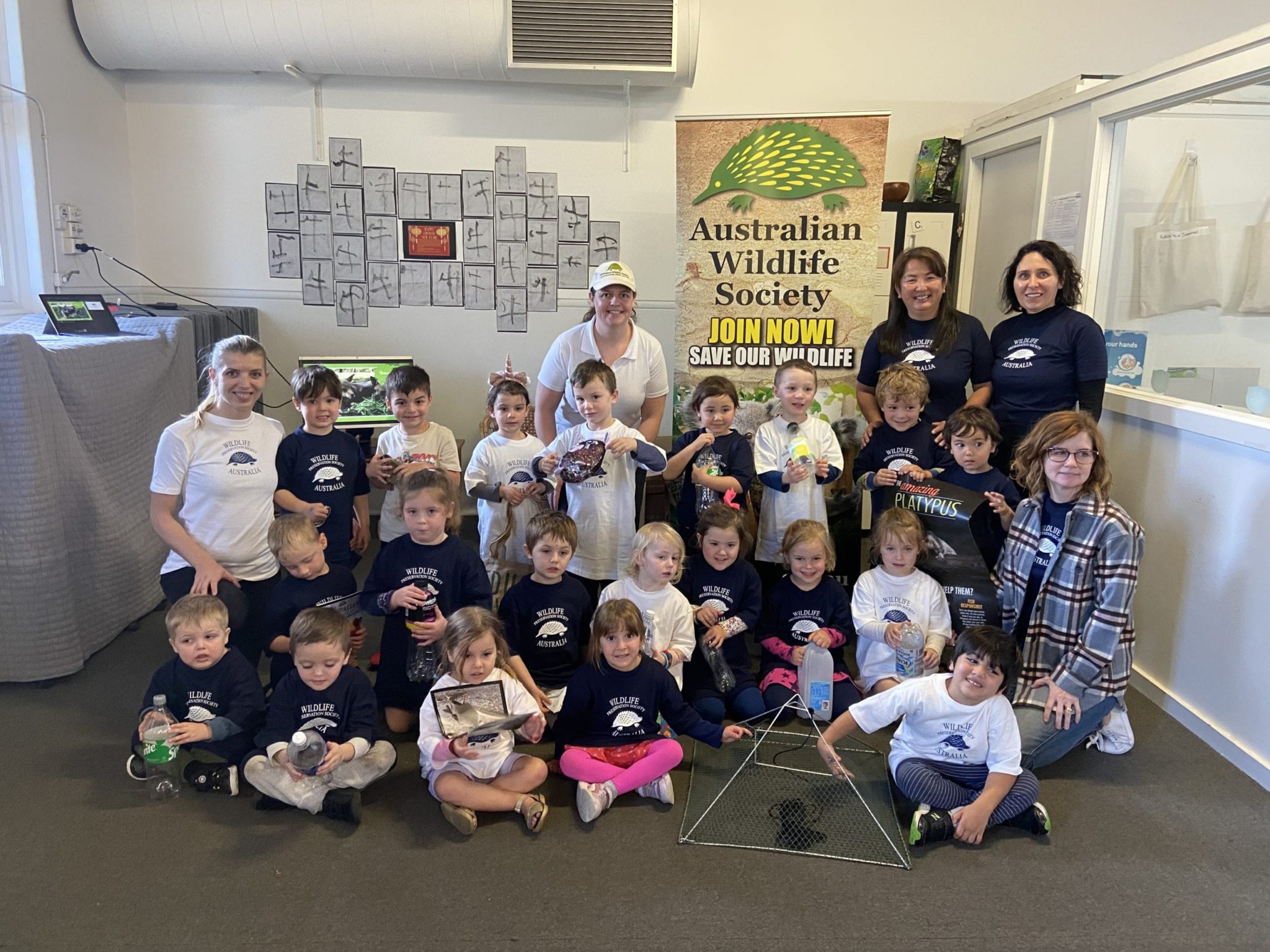
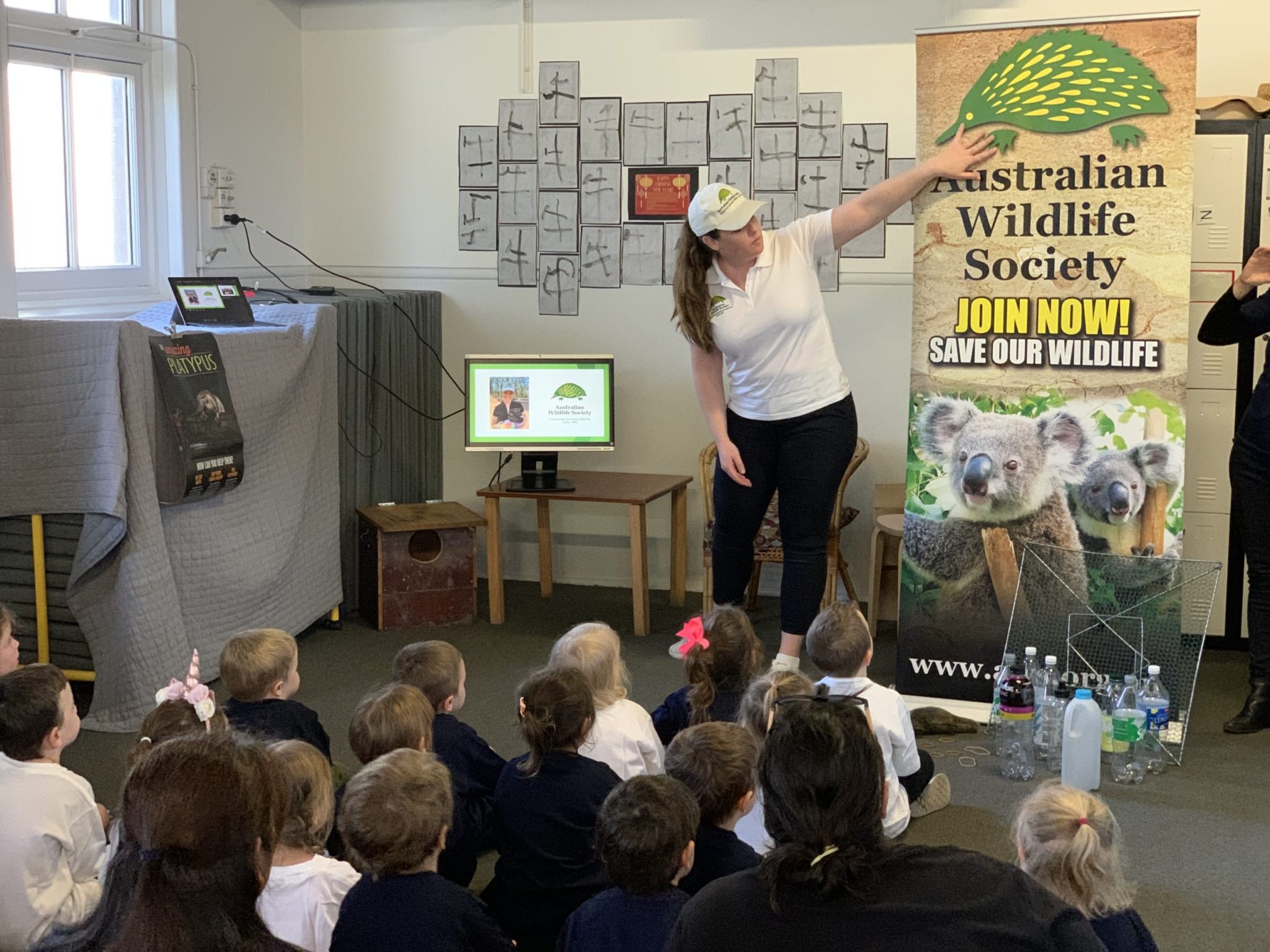
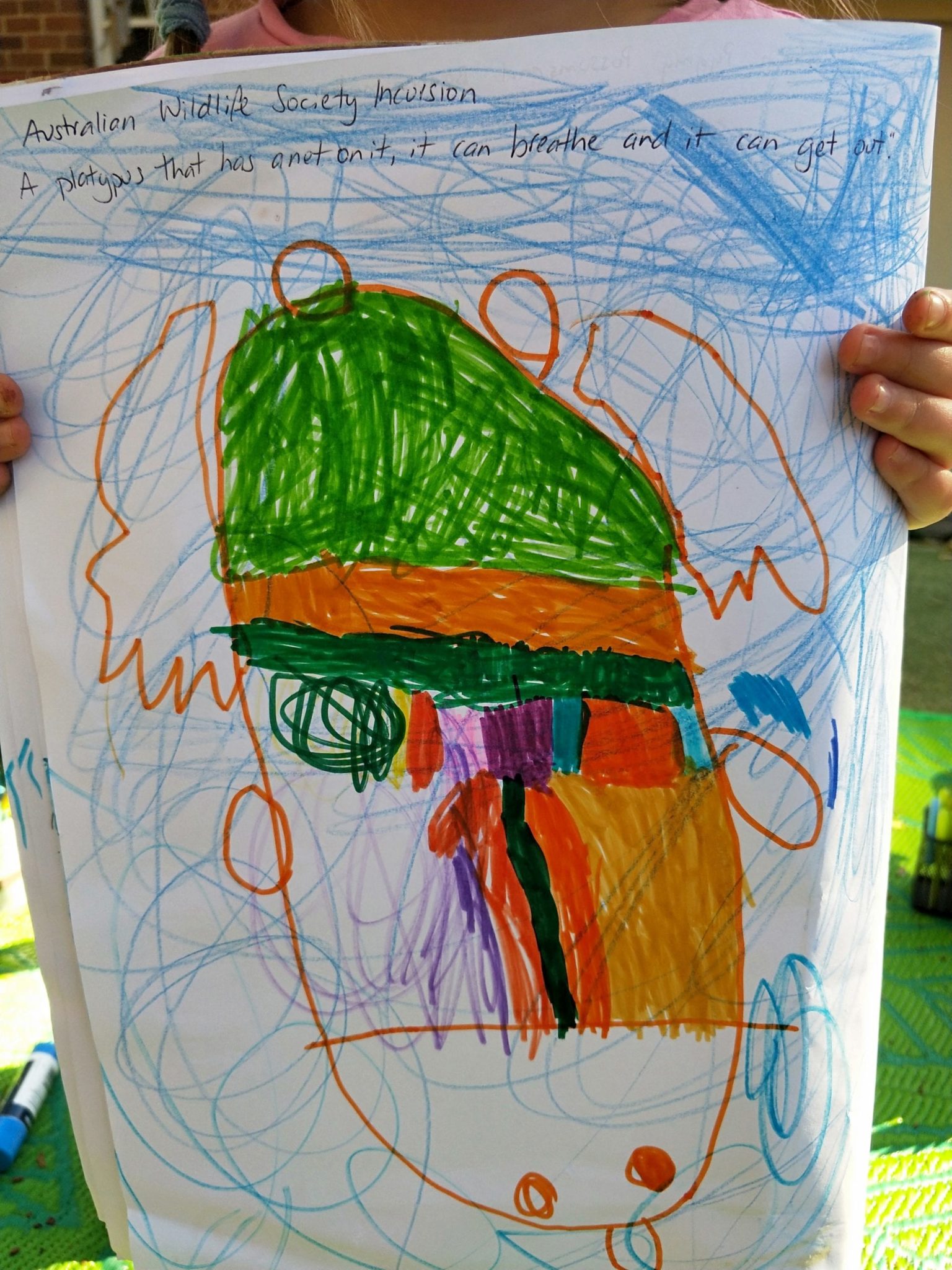
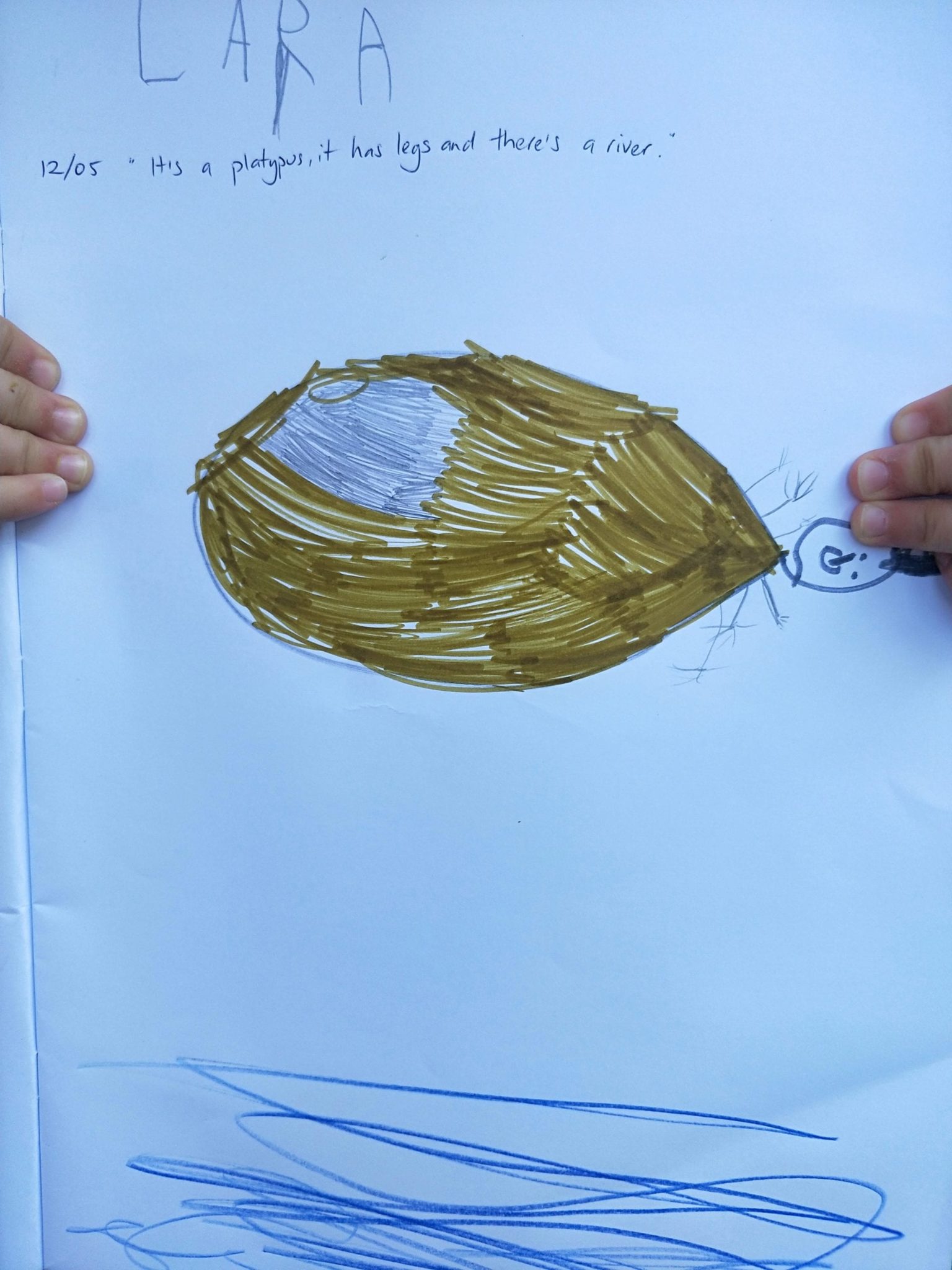
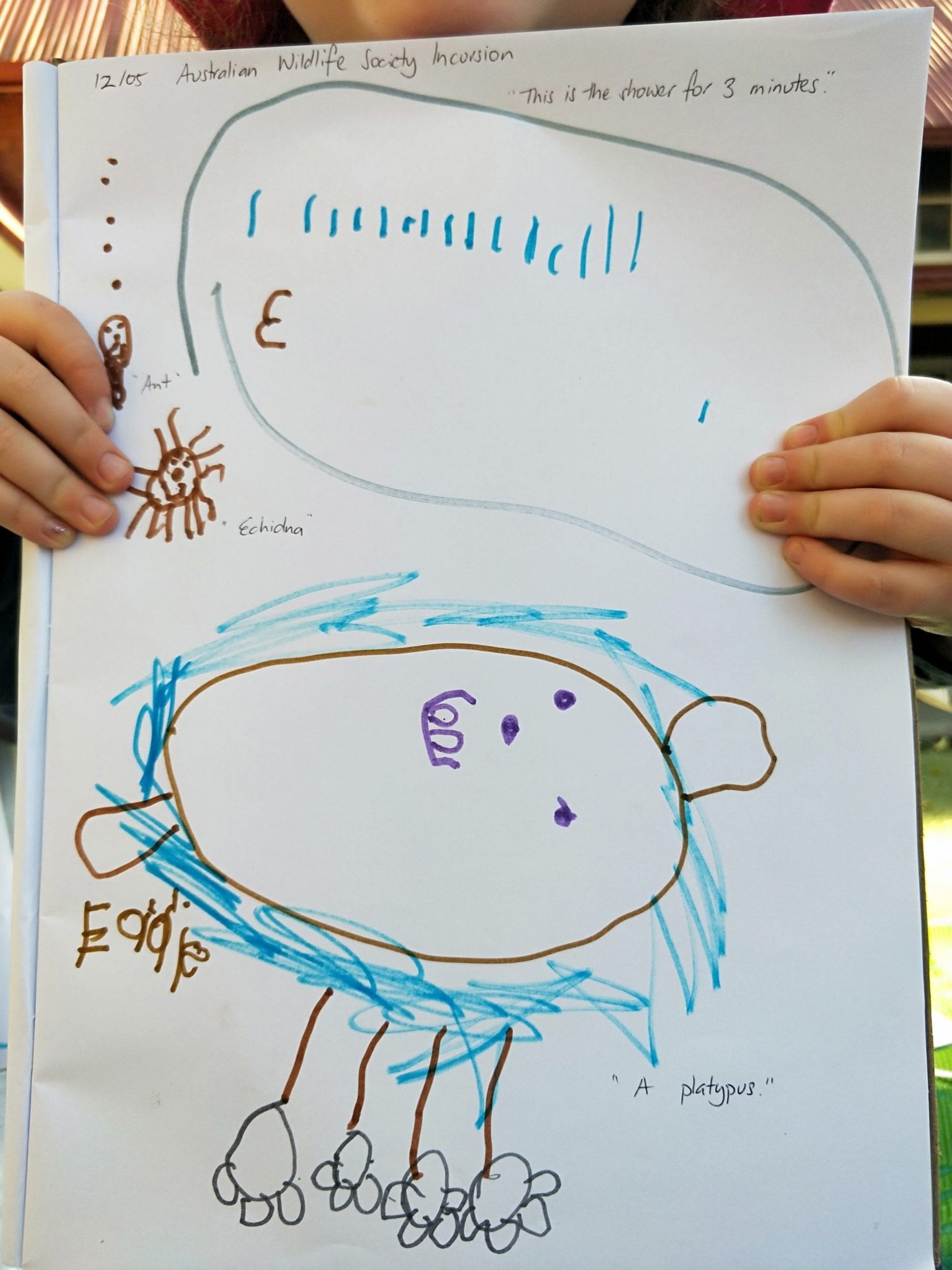
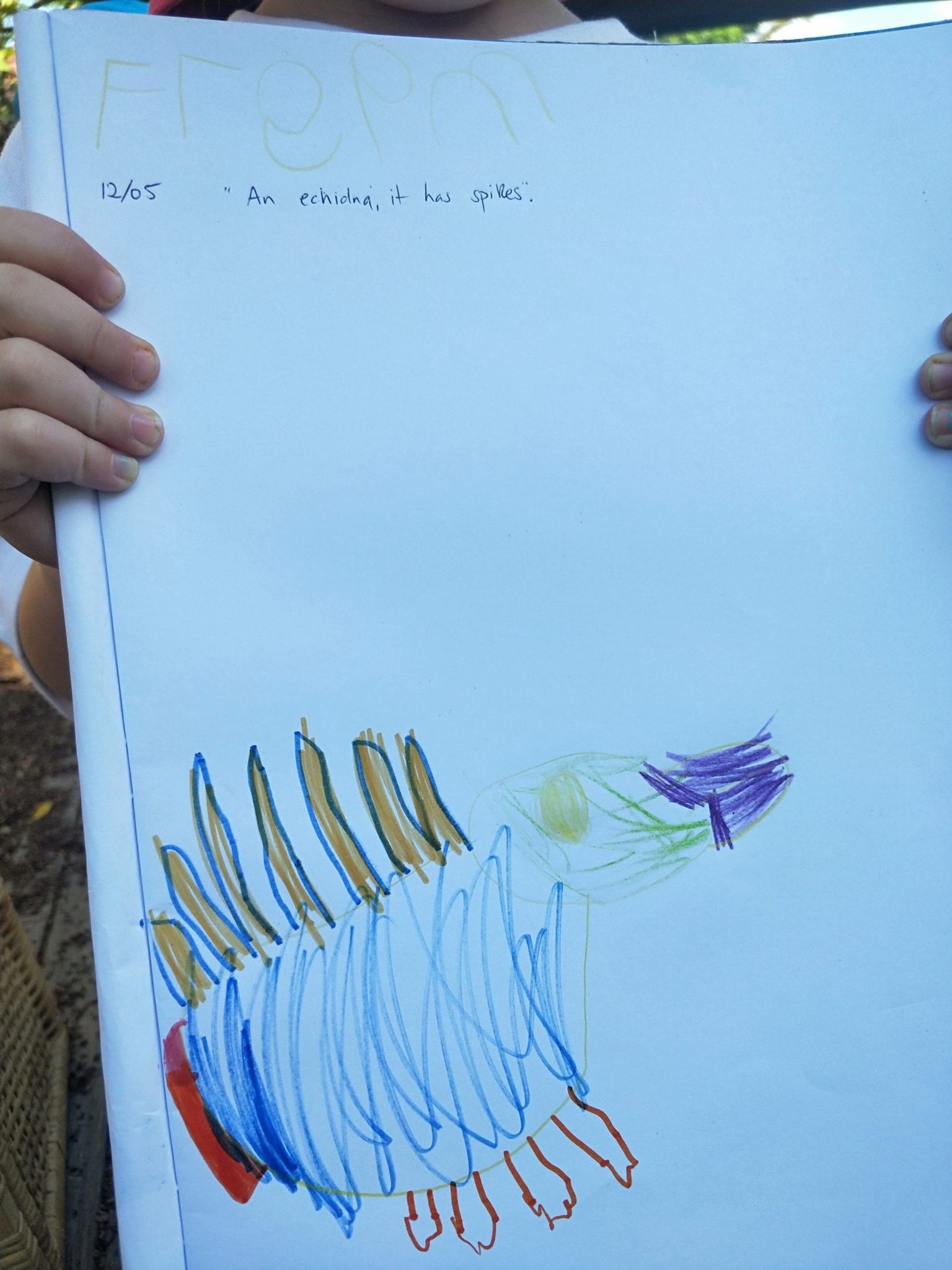
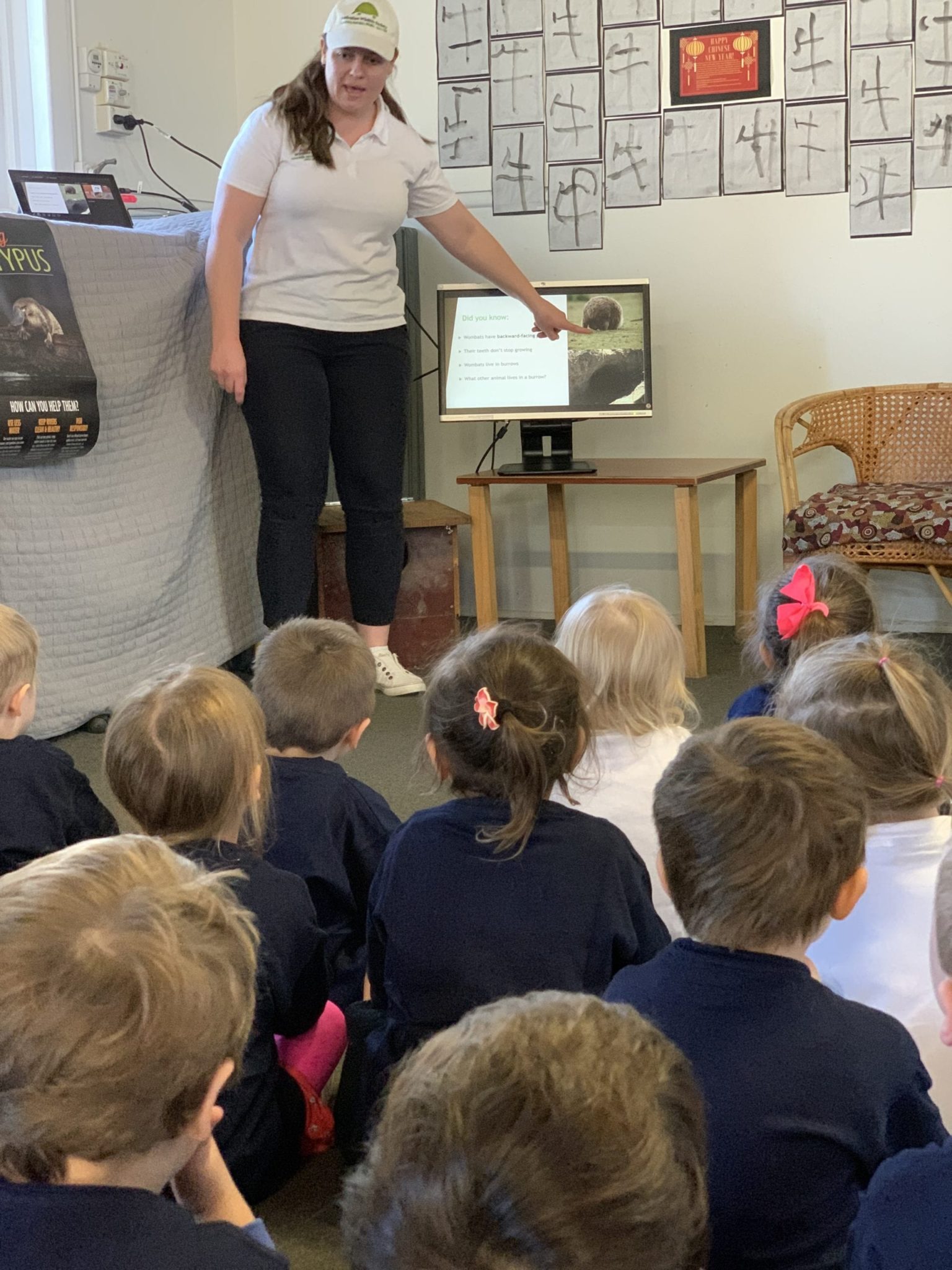
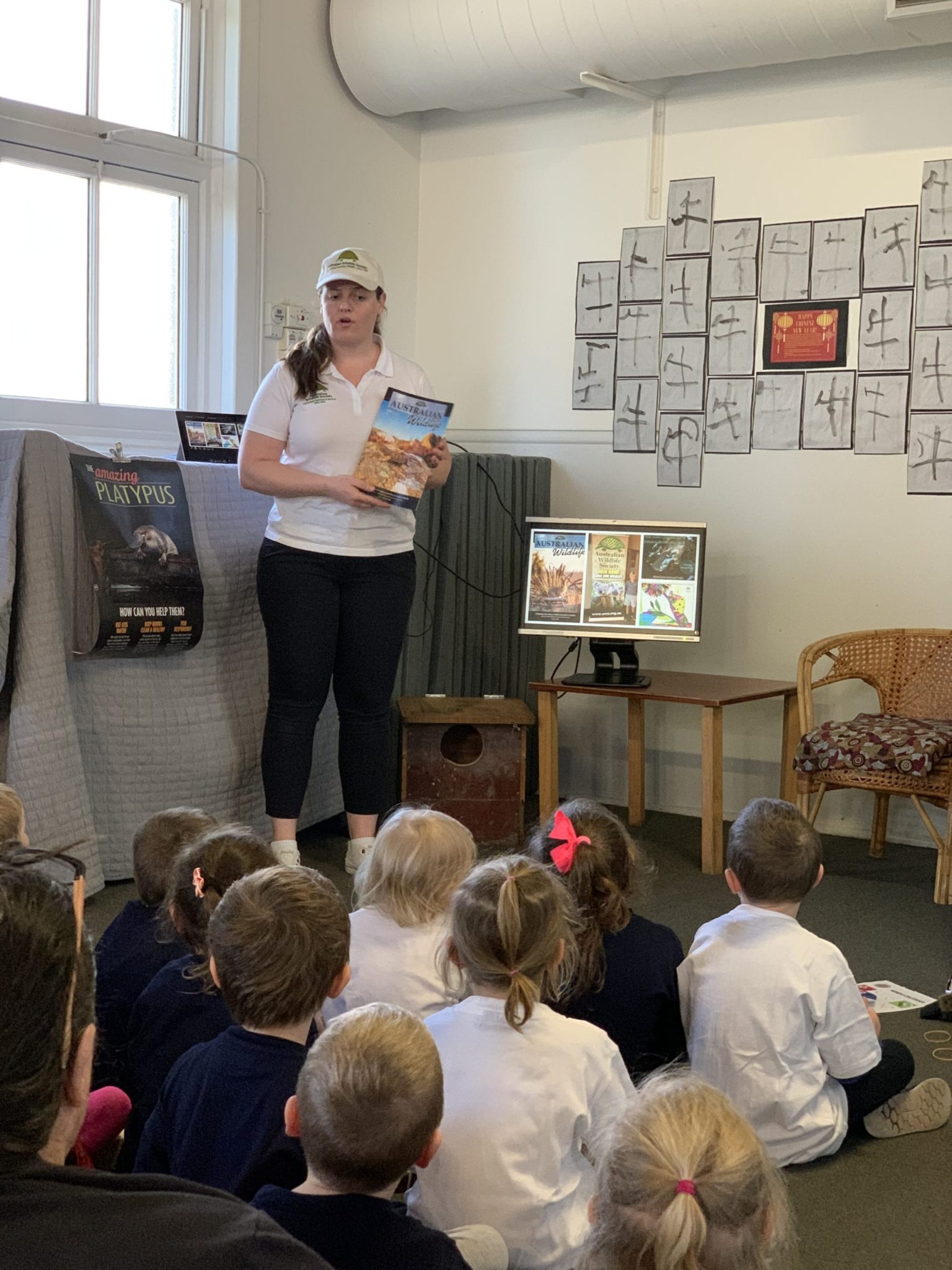
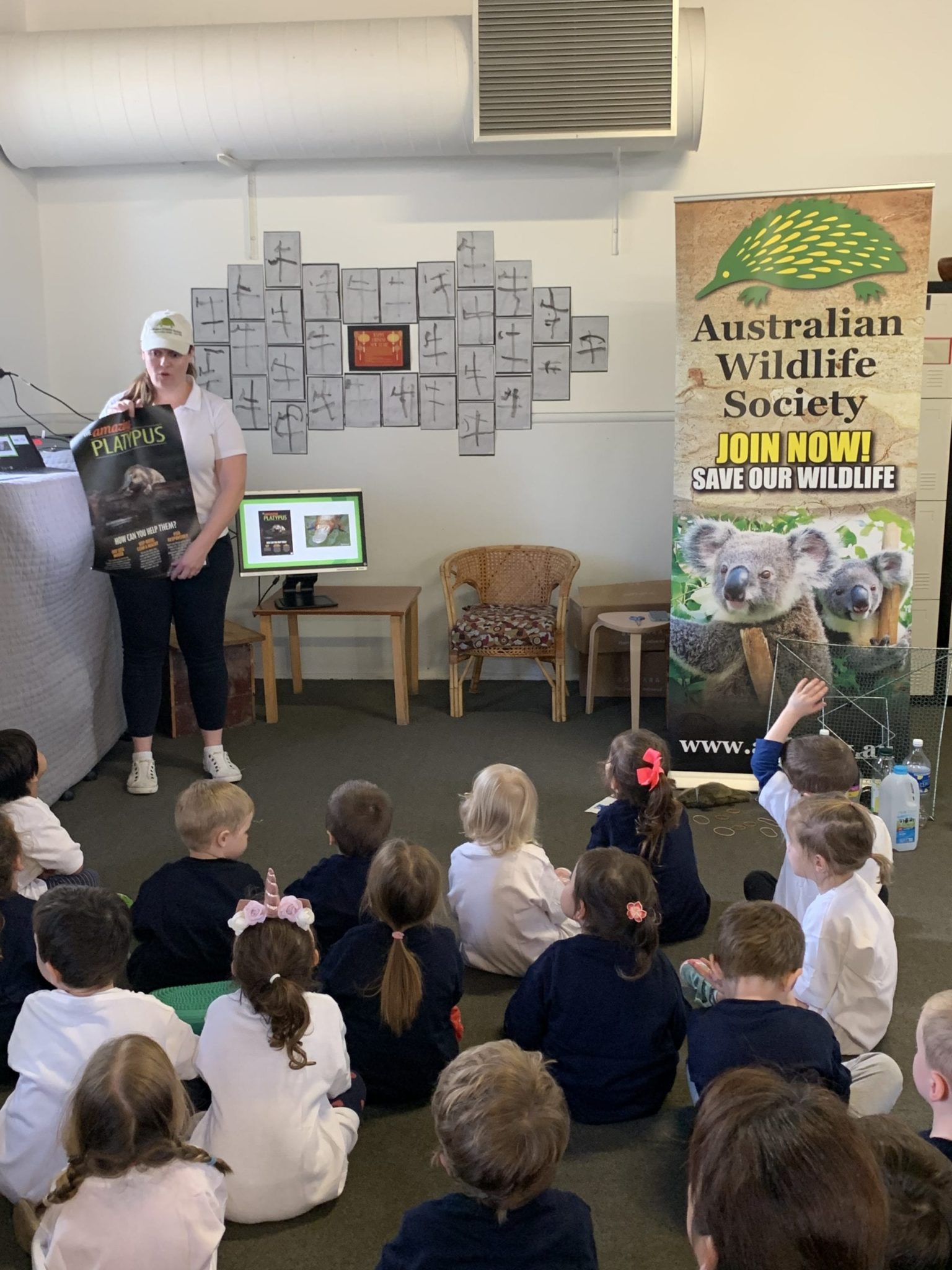
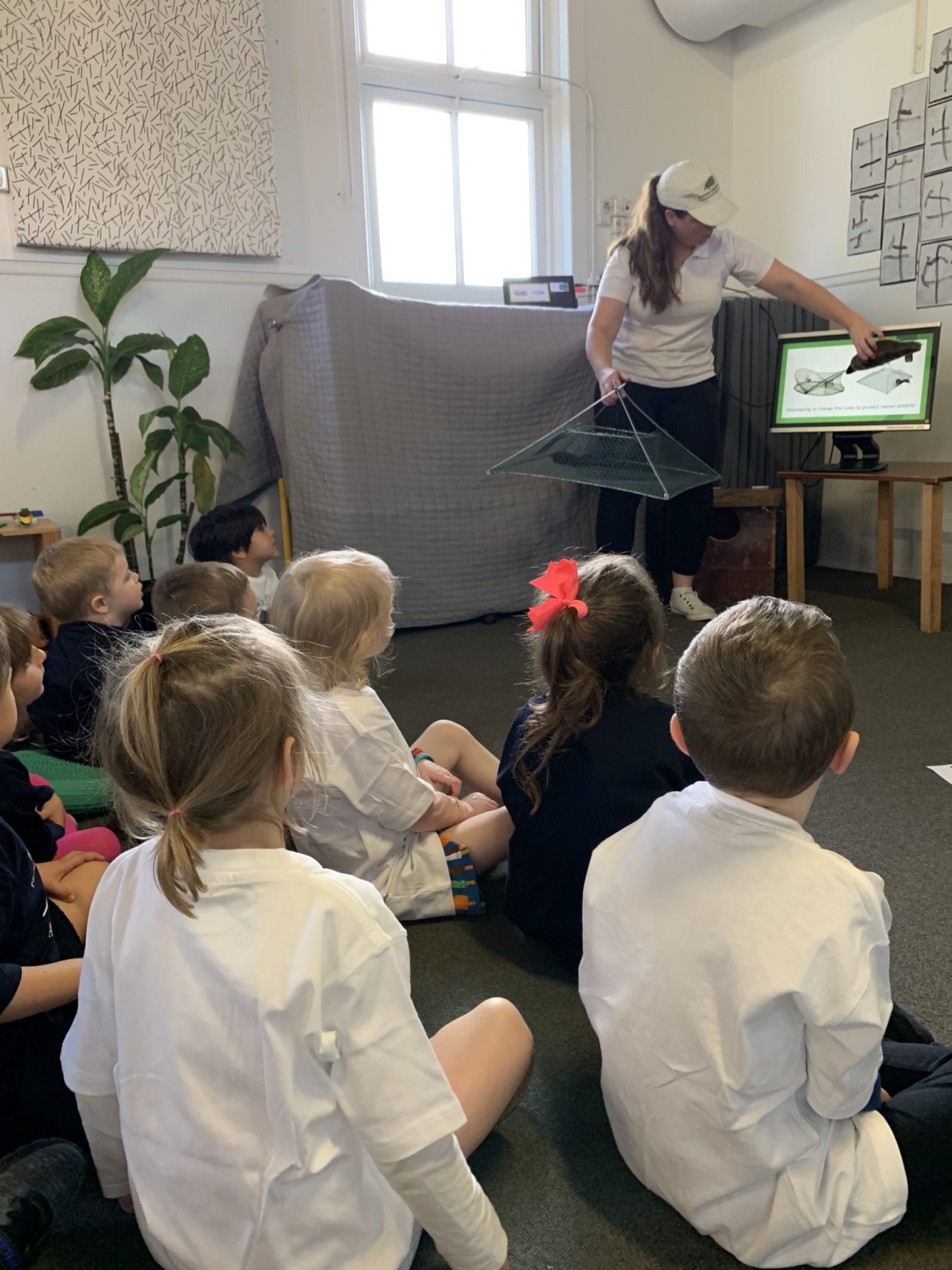
Spoil Mum this Mother's Day
MEDIA RELEASE - 22/04/21. Actions we can Implement this Earth Day
The Society is encouraging people to take action this Earth Day to mitigate the impacts of climate change and protect Australia’s native wildlife and habitats.
Thank you Mark Coure MP
The Society was delighted to receive a letter from Mark Coure MP honouring the retirement of the former President, Suzanne Medway AM, and welcoming the new President for 2021, Associate Professor Julie Old. We were proud to be recognised in the Parliament of New South Wales for our commitment to wildlife conservation across Australia. Thank you Mark for your confidence in our ability to achieve successful conservation outcomes for the preservation of Australia's wildlife for many years to come. We look forward to continuing to work alongside you in the future.
Honouring Suzanne Medway AM and her Commitment to Wildlife Conservation
MEDIA RELEASE - 03/03/21. A new President of the Australian Wildlife Society is Appointed
The Society announced that its board of directors elected Associate Professor Julie Old as the new President of the Society as Suzanne Medway AM stepped down from office after thirty years of active service to the Society.
A new Editor of Australian Wildlife is Appointed
2020 News
MEDIA RELEASE - 01/12/20. A New National Office Opens in Hurstville, New South Wales
The President of the Australian Wildlife Society, Suzanne Medway AM, is delighted to announce the opening of the Society’s new National Office at 29B/17 Macmahon Street Hurstville New South Wales 2220 to cope with the expanding work of the Society. The Australian Wildlife Society, founded in 1909, is a national not-for-profit wildlife conservation organisation. We are dedicated to the conservation of Australian wildlife through national environmental education, advocacy, and involvement of the community.
For the first time in over one hundred years, the board of the Society has decided to establish a new National Office to cope with the expanding work of the Society in wildlife conservation across Australia. We have always relied on our volunteer board of directors to carry the workload, but in recent times, governance compliance has become so complex that we employed a National Office Manager, just over one year ago and, this month, have employed a Clerical Assistant to ensure that we comply with the various regulations by several government agencies, such as the Australian Charity and Not-for-profits Commission. The new Clerical Assistant will help with the Society’s bookkeeping systems and national membership program. We are keen to expand our membership to continue our wildlife conservation work to save Australia’s native wildlife for future generations.
“We recently decided to offer free membership to all school students so they may be encouraged to develop a deeper understanding of environmental issues, gain the necessary skills to make informed decisions and take action to improve the environment. Students are a key group in our membership and make significant contributions to the conservation movement through innovative projects and ideas. It is students who can drive lasting and sustainable change, who will become the next ambassadors in environmental conservation and hopefully the successors to the current board of the Society” Suzanne said.
We believe that everyone can play a role in the conservation of Australia's wildlife and this belief is reflected in the Society’s magazines, newsletters, and structure of our membership. We encourage everyone interested in wildlife conservation to join the Society to help save Australia’s unique and precious native flora and fauna.
We welcome everyone to visit the new National Office and collect a free issue of Australian Wildlife (while stocks last).


Australian Wildlife Society Information Session 2020
We welcome you to access our video, should you wish to know a little bit more about who we are, what we do and what the Society has to offer.
Helping Bushfire-affected Wildlife
The scale and severity of bushfires sweeping the country is currently testing the resources of wildlife rescue groups. Many groups have issued public pleas for financial support and donated goods, to help them meet the needs of native wildlife that are suffering from the impact of these fires. Wildlife rescue groups and wildlife hospitals simply cannot keep up and need extra support to help native wildlife going through this traumatic moment in history. The treatment and rehabilitation of wildlife is an intensive and long-term process and recovery can take up to 6-9 months. Australian Wildlife Society wanted to do more to help wildlife rescue groups and native wildlife affected by the bushfires in New South Wales, Victoria and South Australia. If you have also been wanting to help, here is your chance! We are asking you to join the echidna hunt to help us raise funds for wildlife rescue groups that are rehabilitating native wildlife affected by the bushfires.
Did you know that the echidna is the symbol of our Society and that the echidna is featured on the 5 cent coin? If you are interested in collecting 5 cent coins to participate in this fundraising process, please deposit the funds at your nearest Commonwealth Bank of Australia or via electronic funds transfer using the account details below. Once the coins have been banked, please let us know your details and how much has been banked (info@aws.org.au), and we will send you a tax-deductible receipt. Donations of $2 or more are fully tax-deductible. To help spread the word, share the message via your social networks and don't forget to tag us. Invite friends, colleagues, and local businesses to join the echidna hunt to raise funds for wildlife affected by the bushfires. 100% of donations will be distributed to wildlife rescue groups that are rehabilitating native wildlife affected by the bushfires.
Account Name: Wildlife Preservation Society of Australia trading as Australian Wildlife Society
Bank: Commonwealth Bank Of Australia
BSB: 062-235
Account: #10696157
Description: Wildlife in fires
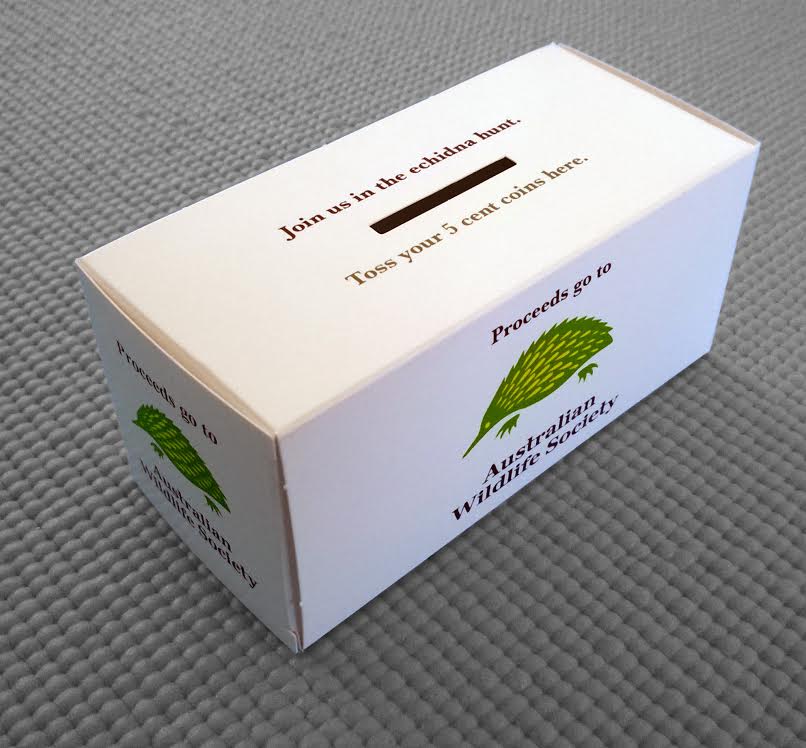
How wonderful are human beings when they band together to support one another and Australia's wildlife. Thankyou to everyone who has contributed to our 'wildlife affected by fires' initiative so far. Please keep an eye out for our E-newsletters (https://www.aws.org.au/e-news-bulletin/) and on our website for the latest updates regarding the initiative. Information on where the funds have been distributed will be updated as it takes place. We will also continue to provide current updates via our social media platforms (Facebook, Twitter and Instagram). Thankyou kindly for all your support.
Initiative update 11.02.20 - Metropolitan School Frankfurt, Germany raises funds for AWS: A big thankyou to the Grade 2 students of Metropolitan School Frankfurt, Germany and their teacher Ronke Bearzi. As one of their daily activities, Ronke's students watch CBBC Newsround where they learn about events happening around the world, while developing international-mindedness and global citizenship. After learning about the recent and devastating bushfires occurring in many parts of Australia, the Grade 2 students decided to take action. The students held a second-hand toy sale, in their school playground, to raise funds to help bushfire affected wildlife. The Society is overwhelmed and honoured by the students support and conservation action. Thankyou!
Australian Wildlife Society Annual Luncheon
You're invited to the annual luncheon. Please join us.
2019 News
102 Squats for Turtle Conservation
In 2015, Margaret Deas, Conservationist and oldest member of the Australian Wildlife Society, did 102 squats on her 102nd birthday, to raise funds for turtle conservation. Margaret raised nearly $6,000. The funds went into rehabilitating an 80-year-old Green Sea Turtle (Chelonia mydas) at Cairns Turtle Rehabilitation Centre. The turtle was found floating in the Great Barrier Reef/Cape York Peninsula region, suffering from a severe case of starvation from consuming marine debris (such as plastic and fishing line). The plastic blocked the turtle’s intestine causing an accumulation of gas which caused the turtle to float to the surface of the water. Jenny Gilbert and the team at Cairns Turtle Rehabilitation Centre found the turtle and predicted that the turtle was floating for some time before it was rescued. They brought the turtle back to the centre and begun rehabilitation.
In 2016, Margaret Deas passed away aged 103 years old. Margaret had a passion for wildlife and aimed to encourage the younger generation to support and love Australian wildlife as she did. Cairns Turtle Rehabilitation Centre named the turtle Margaret, in honour of Margaret Deas and her support towards turtle conservation. Margaret, the turtle, was a resident at the centre for approximately three years. In 2019, Margaret made a full recovery and was ready to be released. Margaret was fitted with a radio tracker, so Cairns Turtle Rehabilitation Centre can keep an eye on her progress, and she was released back into the wild.
The Green Sea Turtle
Green sea turtles are one of the world’s largest species of turtle, weighing around 65-130kg and measuring between 1-1.2m long. They have a strong, tear-drop shape shell, called a ‘carapace’, which covers most of their body, except for their head and four flippers. The Green Sea Turtle is listed as Endangered, under the IUCN red list. Despite the fact that sea turtles are listed as an endangered species, they are still killed for their meat and eggs. Their numbers are also reduced by boat propeller accidents, fishnet-caused drowning, and the destruction of their nesting grounds by human encroachment.
Do you love Green Sea Turtles like Margaret?
With your support, we can save Australia's precious marine sea turtles. Join the Australian Wildlife Society and/or donate today. Every dollar donated will go directly to Cairns Turtle Rehabilitation Centre to rehabilitate turtles, just like Margaret. Donations of $2 or more are fully tax-deductible.
Margret Deas
Margaret the turtle fitted with a radio tracker
Exciting Announcement
Our partner, Zero Co, have officially gone live with their crowdfunding campaign! They’ve got an audacious mission to eliminate single use plastic packaging from every Aussie kitchen, laundry and bathroom and we are definitely on board. The best news is that they are giving AWS $5 from every $129 Starter Box if you buy one using our referral link below. It’s time to win the war on waste at your place! Head on over to Kickstarter to Buy A Box of @Zero.com.au to help get this amazing Aussie project off the ground LINK...
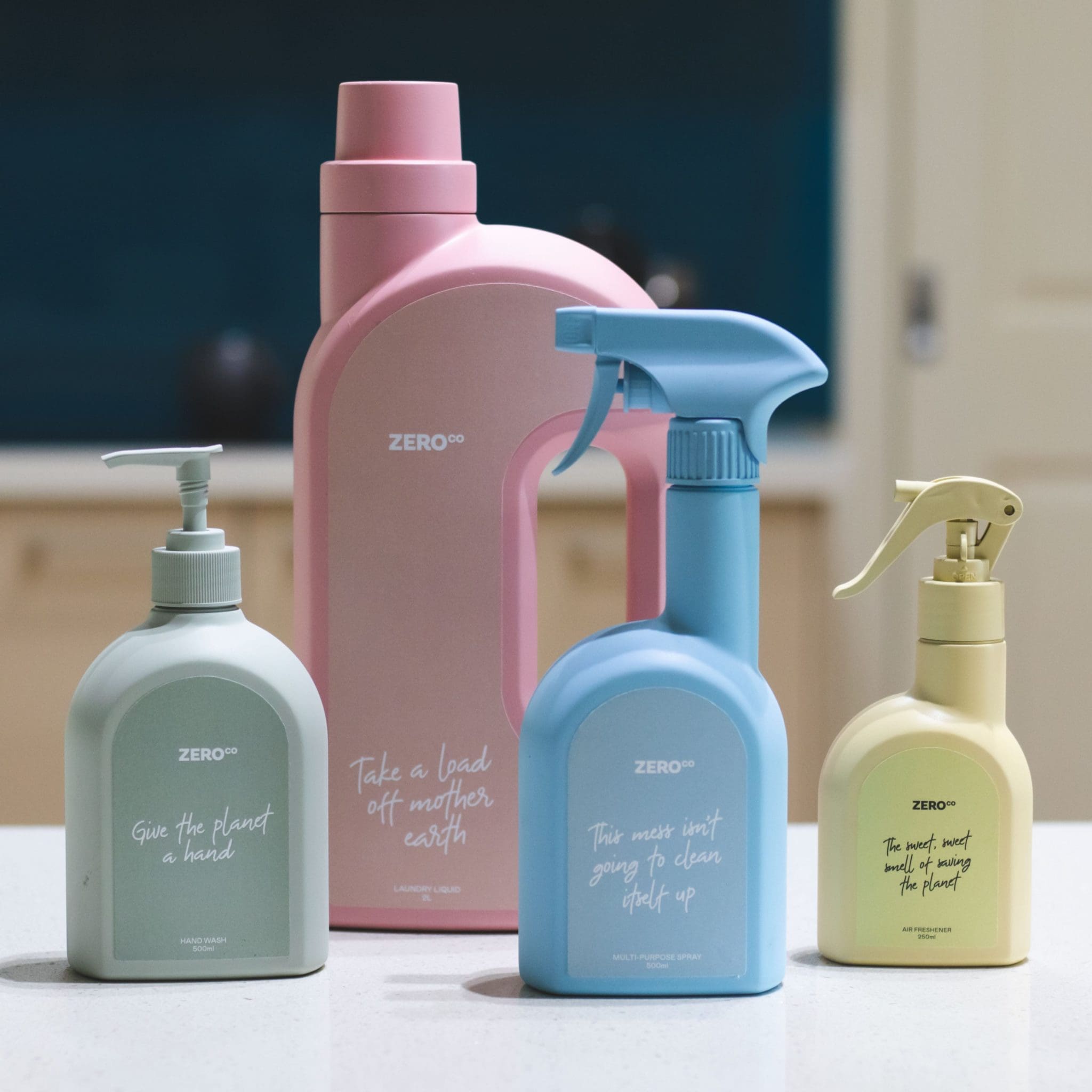
National Colouring-in Competition
Threatened Wildlife Photographic Competition Winners for 2019
The Australian Wildlife Society Threatened Wildlife Photographic Competition is a national competition that awards and promotes endangered Australian wildlife through the medium of photography. The Australian Wildlife Society invited photographers to raise the plight of endangered wildlife in Australia. Our Society aims to encourage the production of photographs taken in Australia, by Australians, which reflects the diversity and uniqueness of endangered Australian wildlife. The annual judges’ prize of $1,000 was won by Robert McLean. The annual peoples’ choice prize of $500 was won by Claudia Santori.
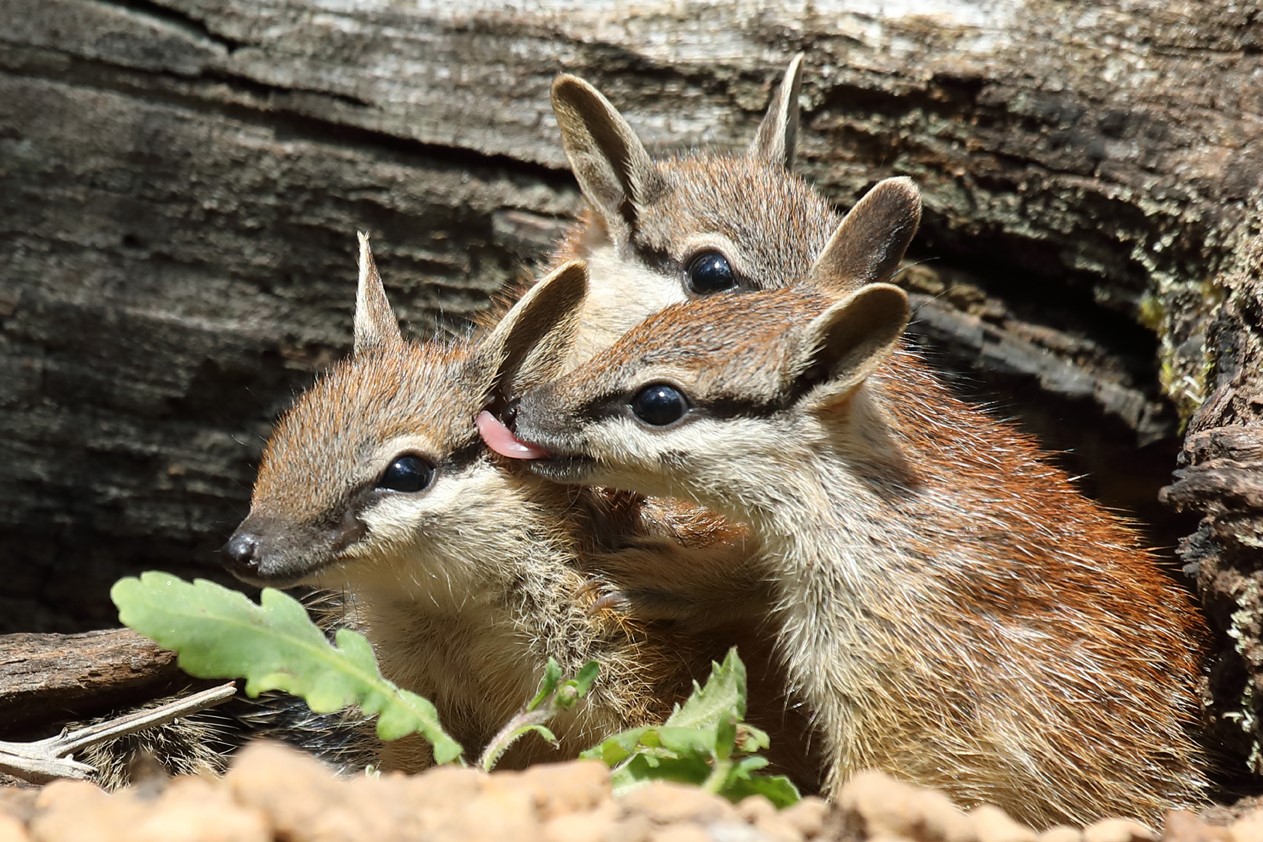
Numbat (Myrmecobius fasciatus)
Image by: Robert McLean
The winning entry was a photo of a Numbat (Myrmecobius fasciatus). Numbats are endemic to south-west Western Australia and are one of Australia’s most endearing marsupials. A group of young seek out the sunshine, at the entrance to their burrow, in Perup Nature Reserve in Western Australia. The Numbat is under threat from habitat loss and introduced predators like foxes and feral cats. With an estimated population of fewer than 1000 individuals.
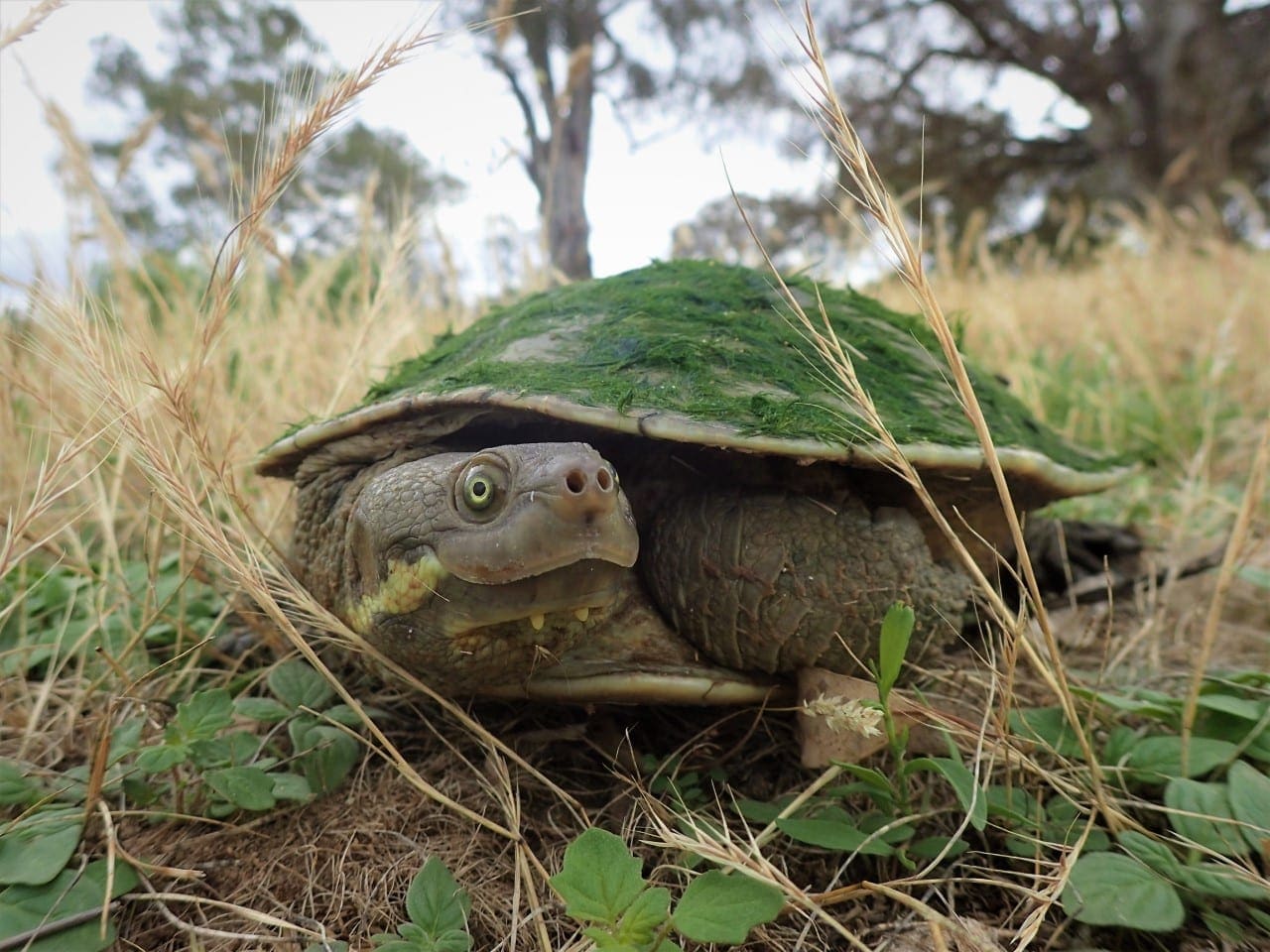
Short-necked turtle (Emydura macquarii)
Image by: Claudia Santori
The winning entry was a photo of a short-necked turtle (Emydura macquarii) or Murray River turtle. The short-necked turtle is just one of the freshwater turtle species experiencing significant population declines throughout their native Australian range. It is currently listed as Threatened in Victoria, with up to 69 percent declines recorded in some locations in the Murray River since the 1970s. While adult individuals are naturally very hardy, nest predation by invasive foxes is having a significant impact on juvenile recruitment. Other factors, such as highway collisions and development of wetland areas, are also contributing to their vulnerable state. Short-necked turtles are crucial for healthy ecosystem functioning, they “clean-up” waterways from animal carrion such as dead fish. This photo was taken by a wetland in southern NSW.
110th Annual Gala Ball
The 110th Birthday Gala Ball was held in the Grand Ballroom of the Western Leagues Club, Campelltown on Saturday 27 July. It was another outstandingly successful evening, with some 180 guests enjoying the festivities of music and dancing. A special thank you to all our sponsors who contributed to the fund raising for the evening, and especially to our special-guest sponsor WALKDEN and The Mayor of Camden Theresa Fedeli for attending the event. We thank director Trevor Evans for arranging the special visit of a dingo, koala and snake to help highlight the plight of our wildlife and all those facing the threat of extinction for many species of Australia’s precious wildlife.

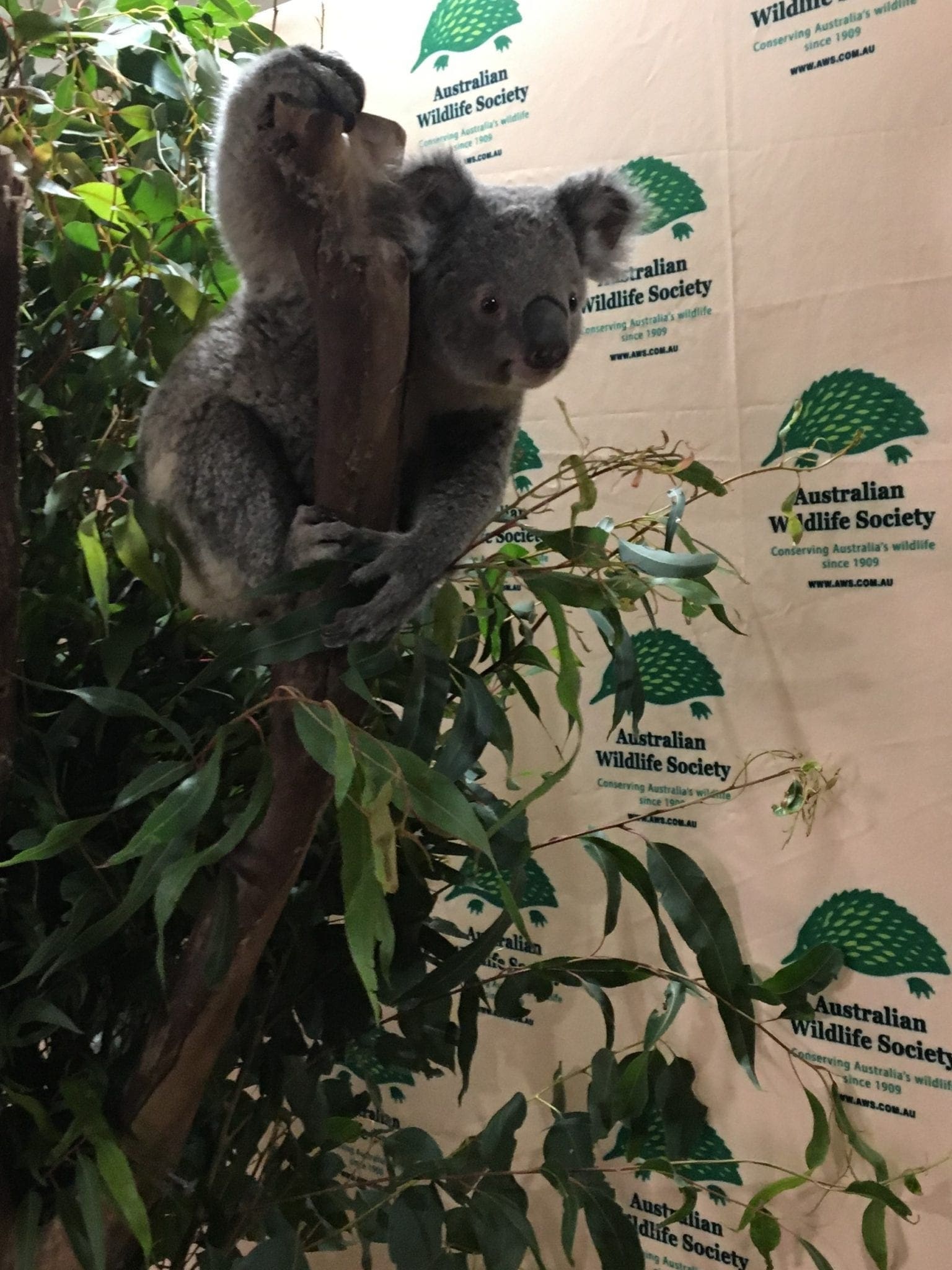
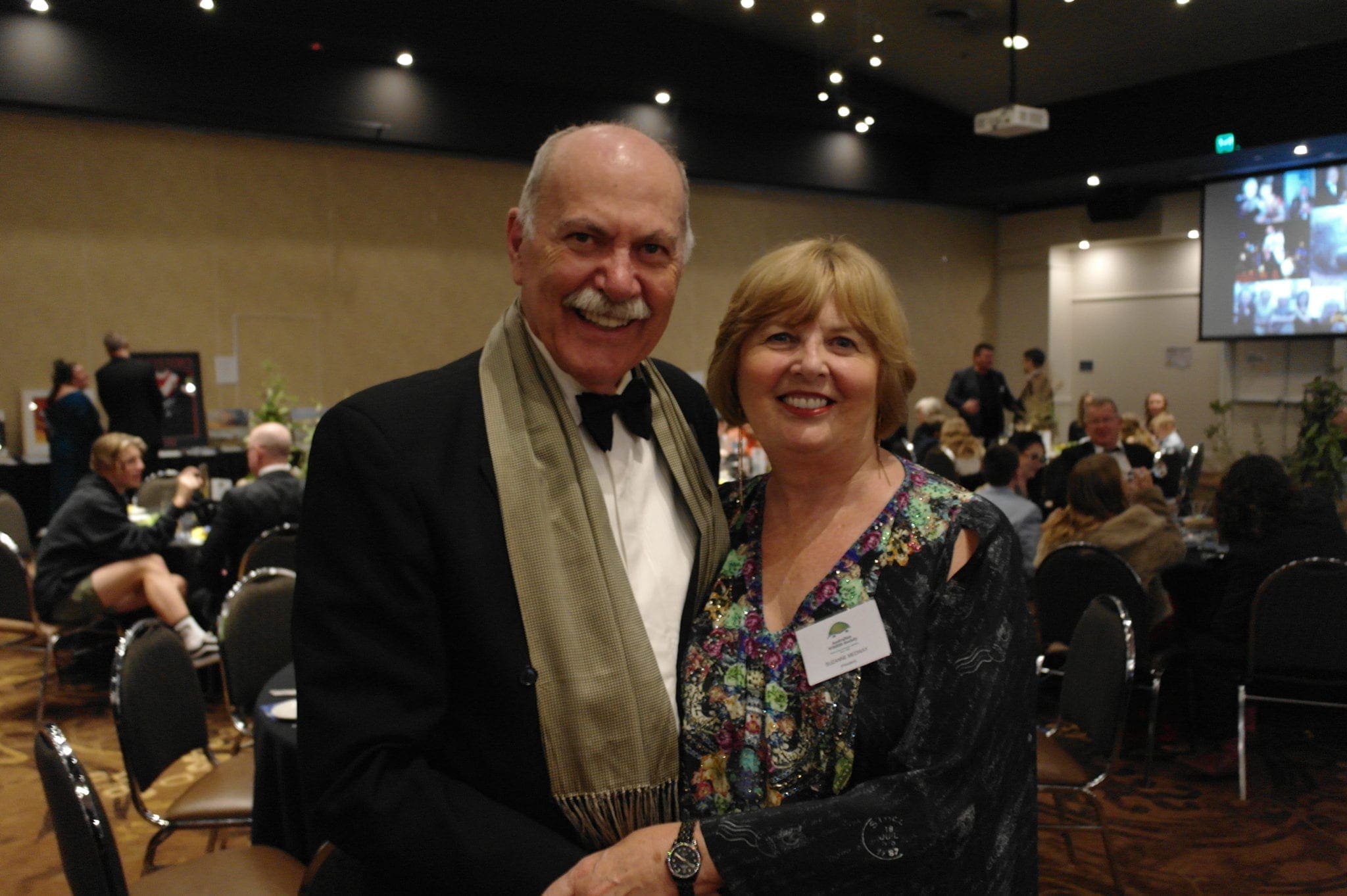
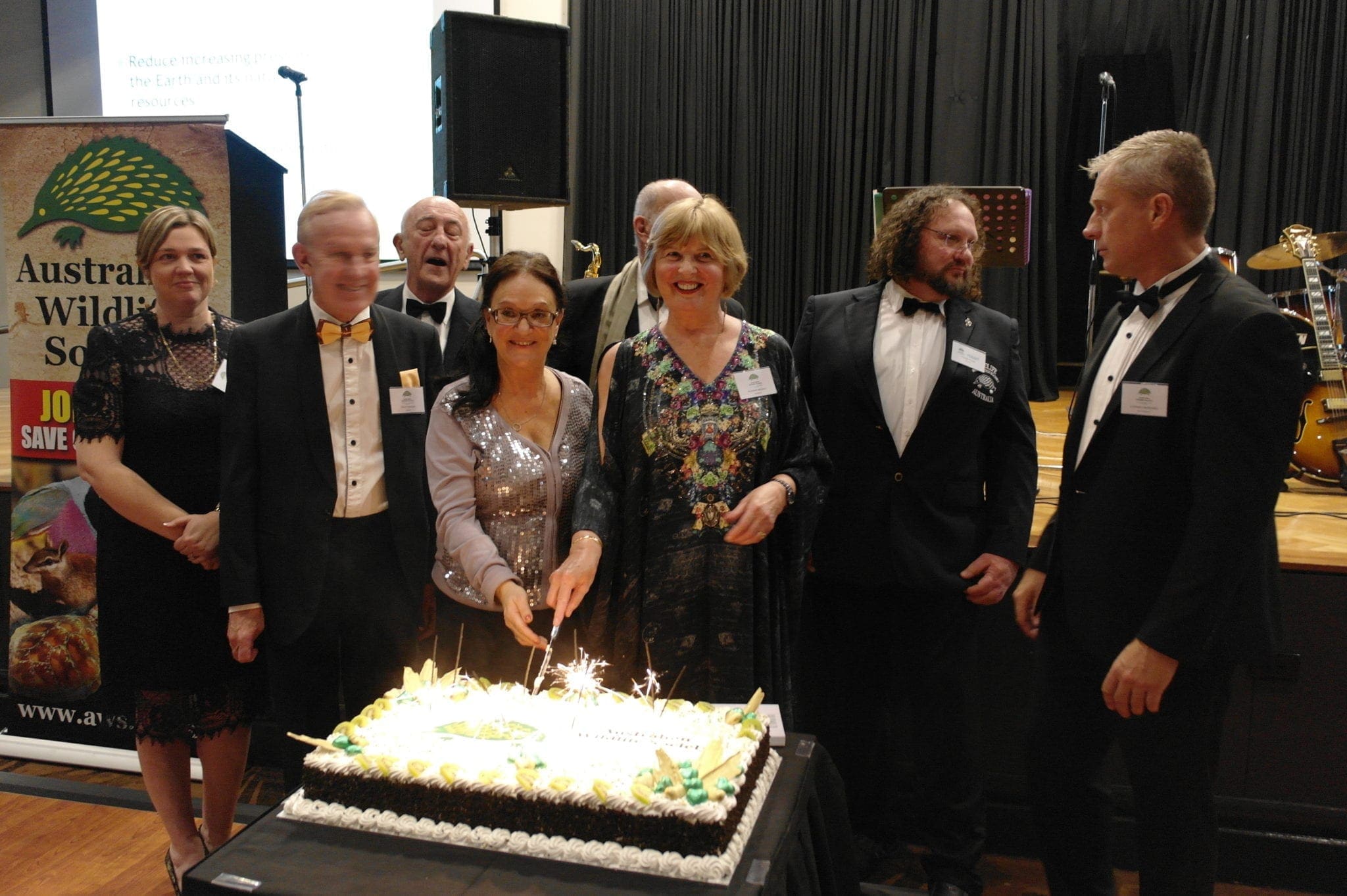

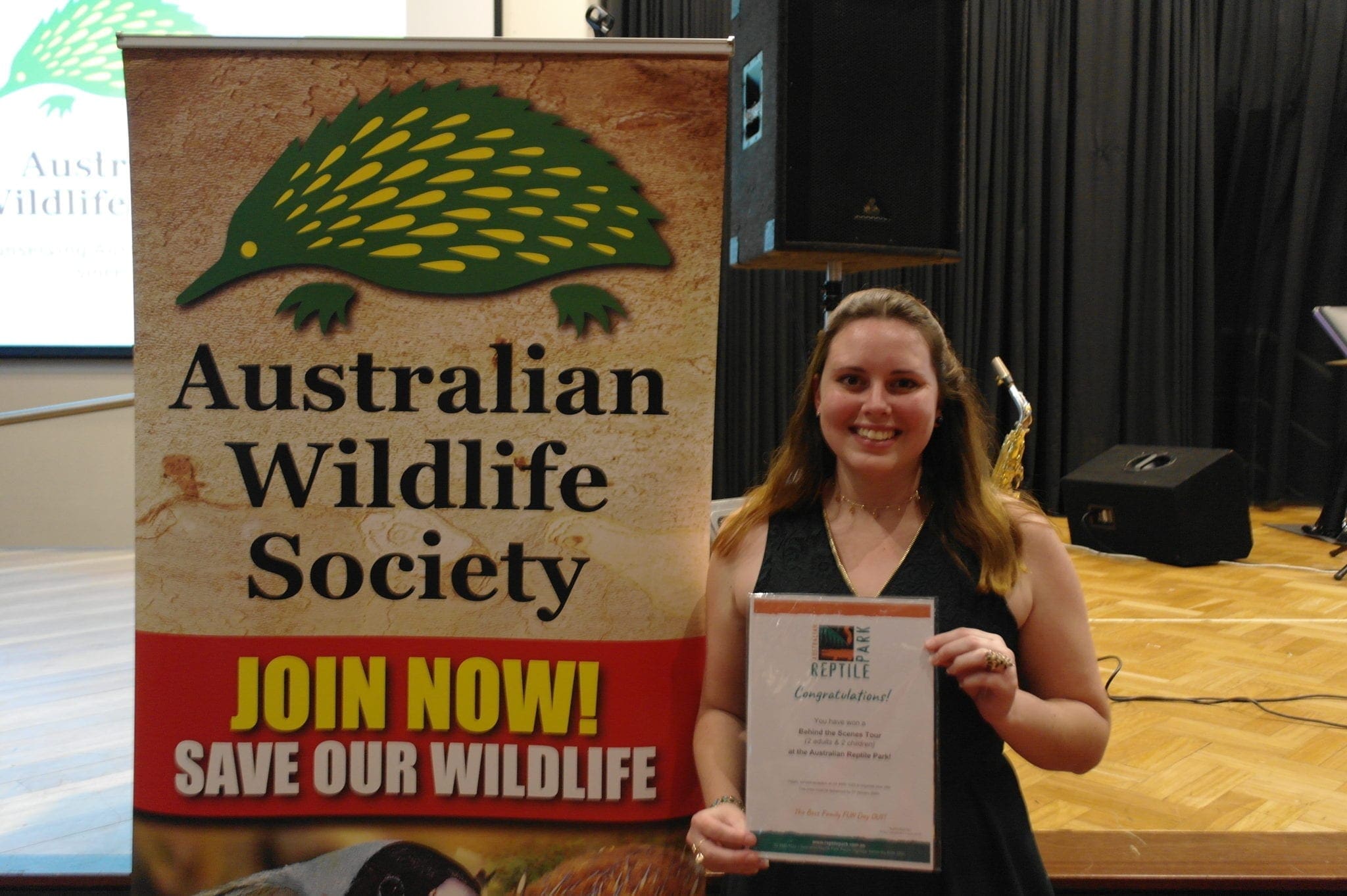
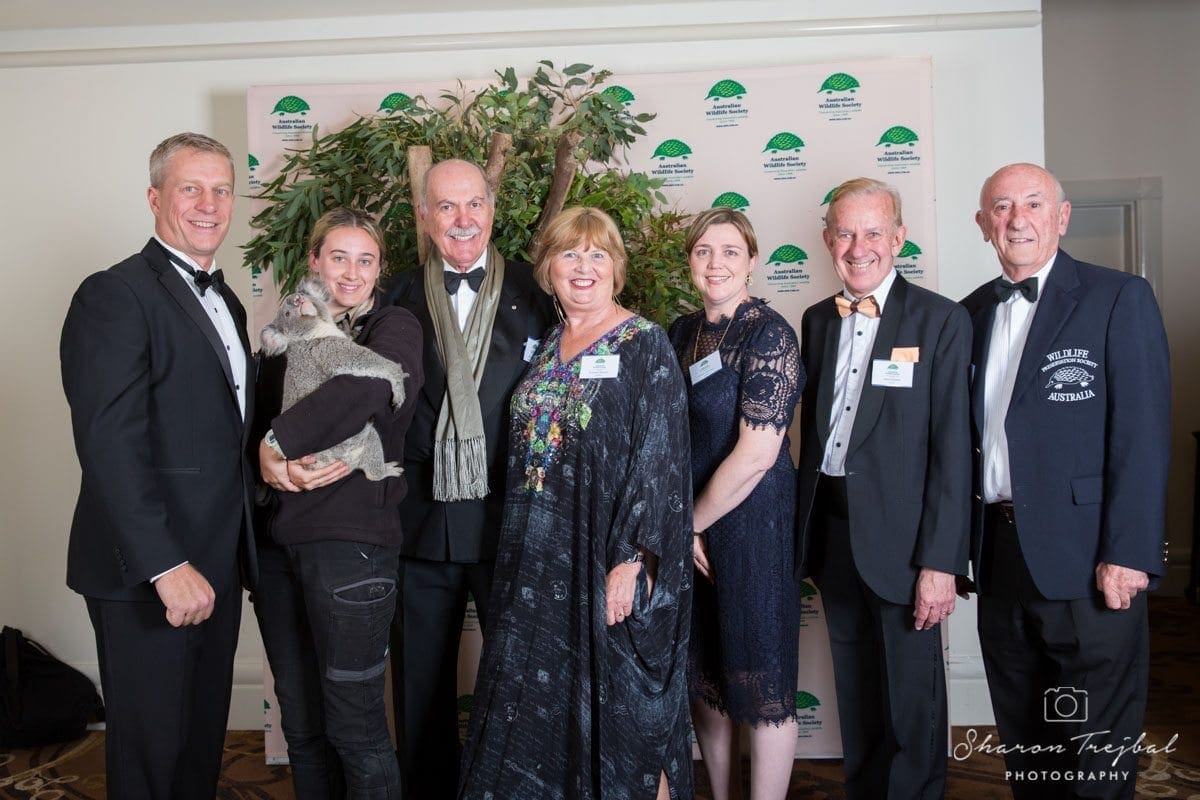


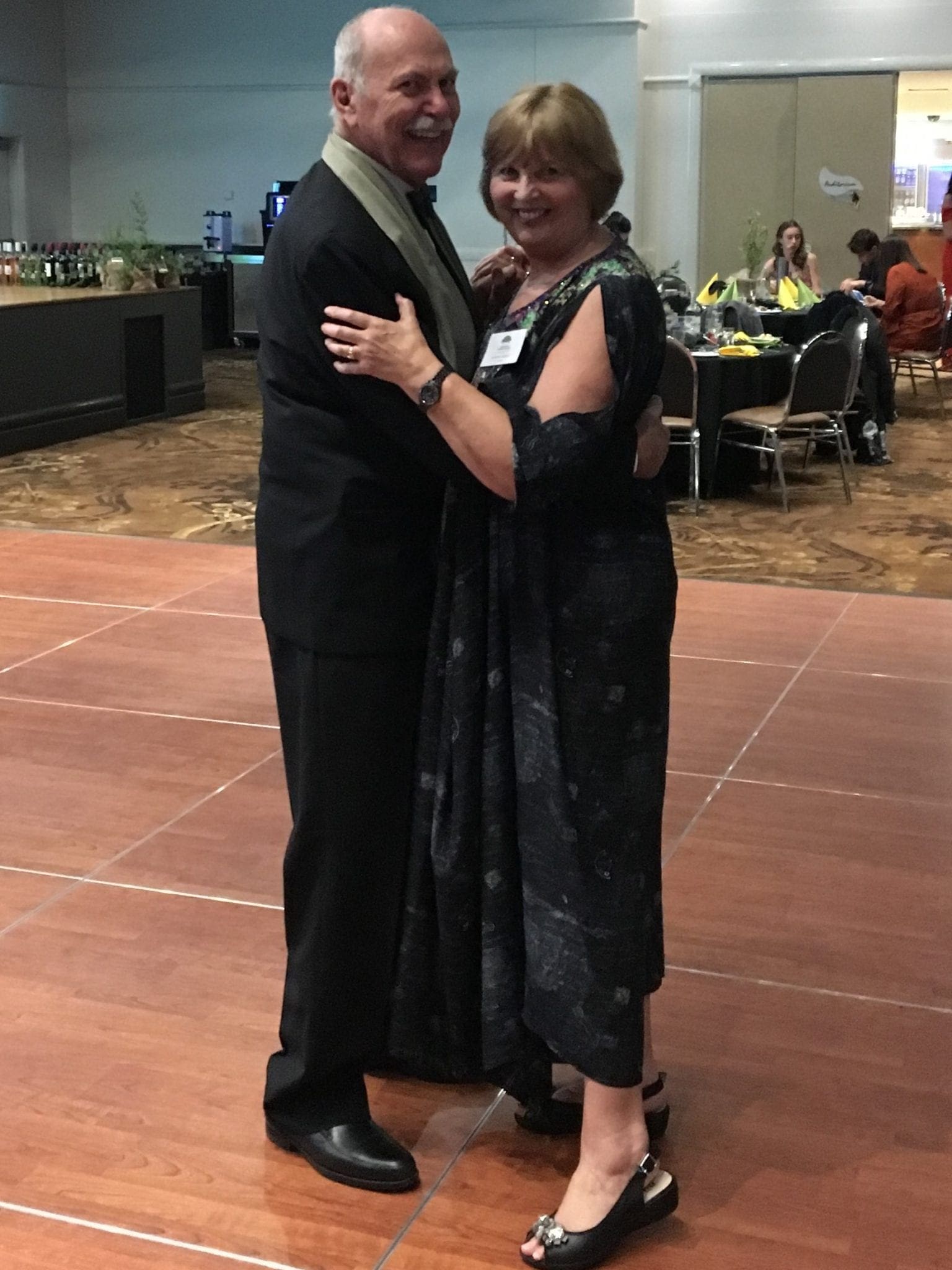
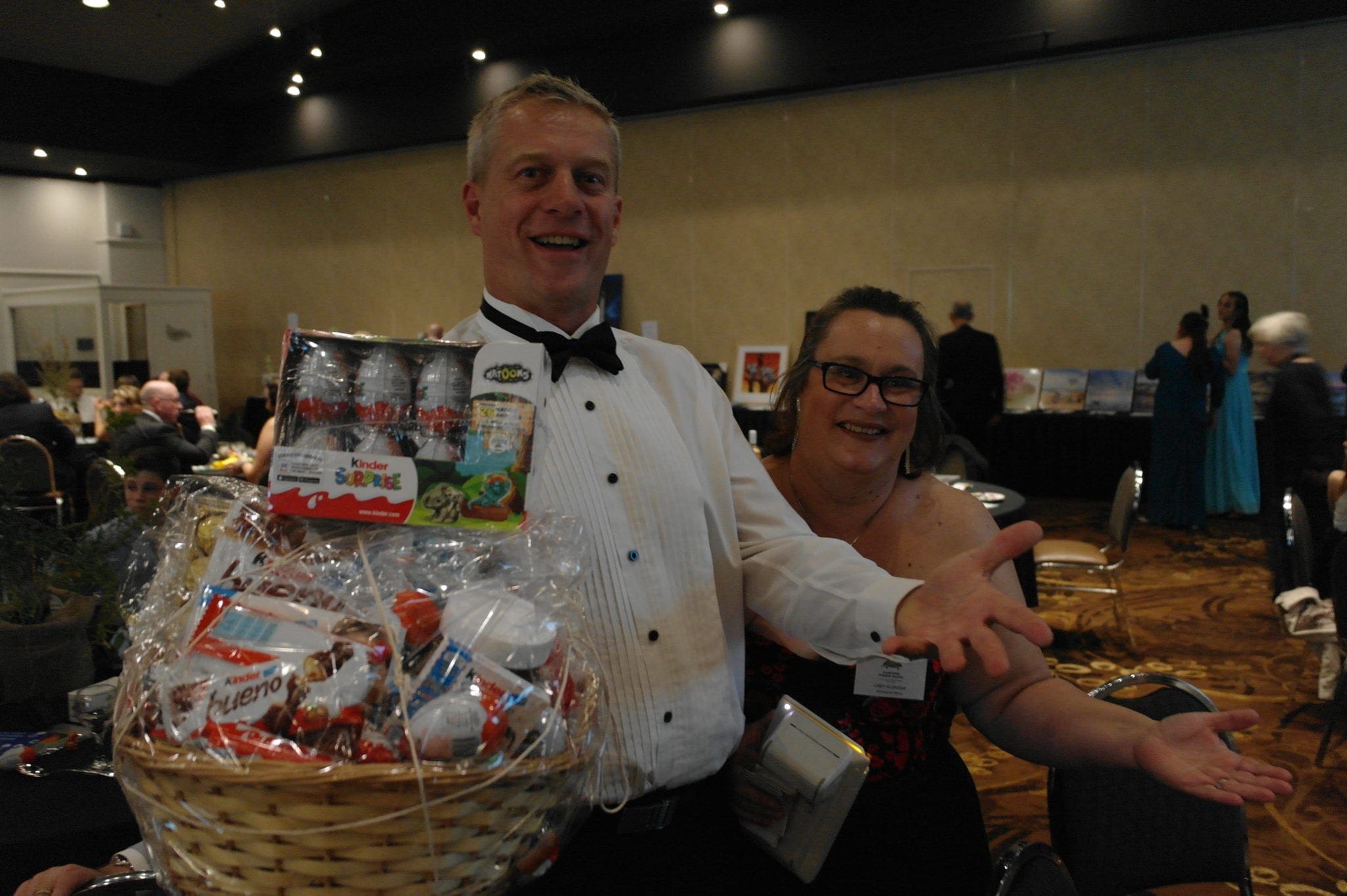
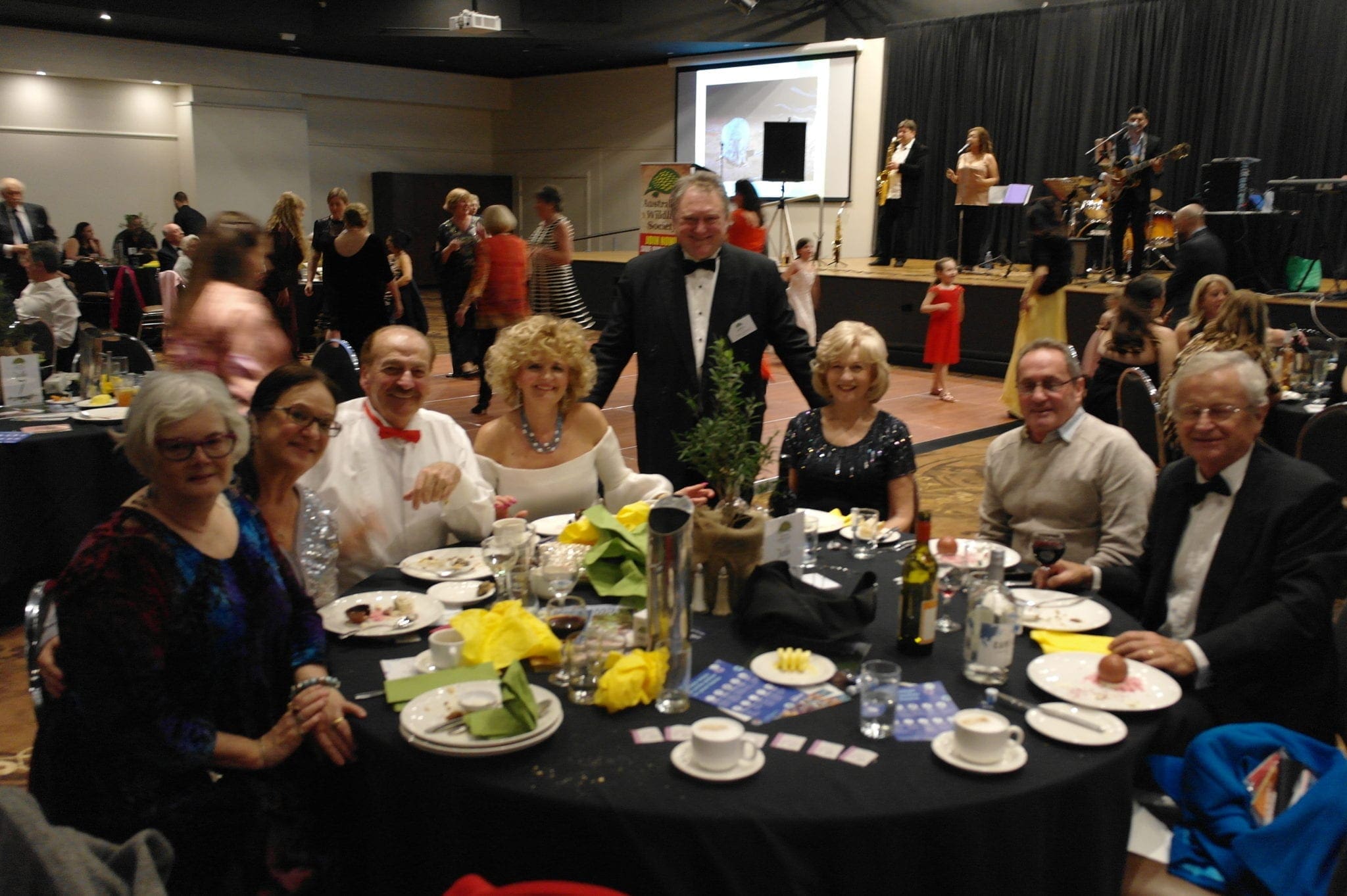



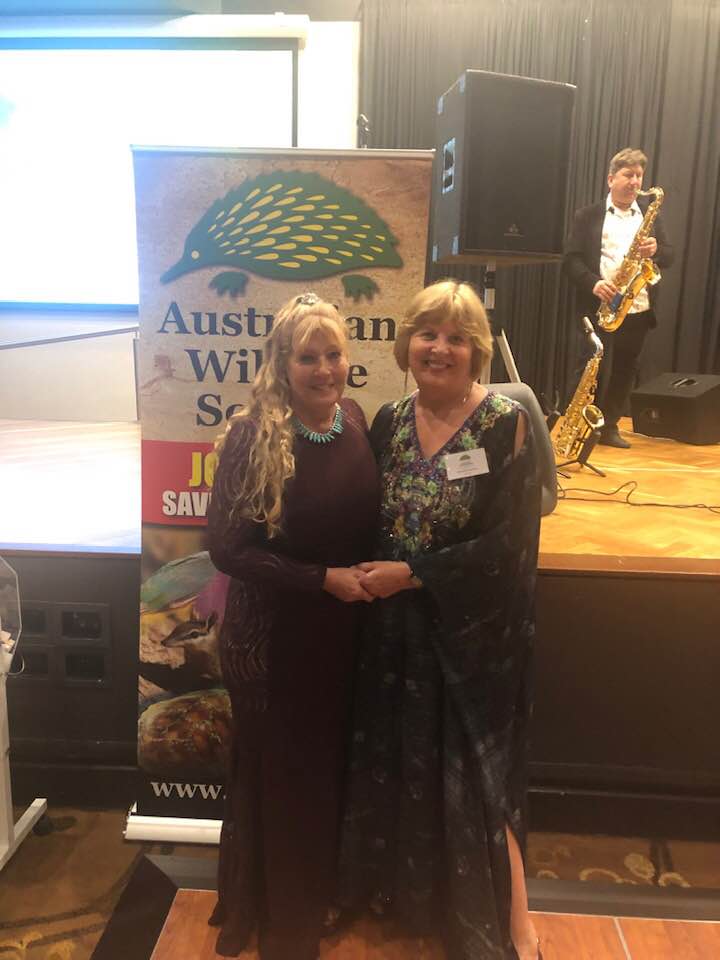
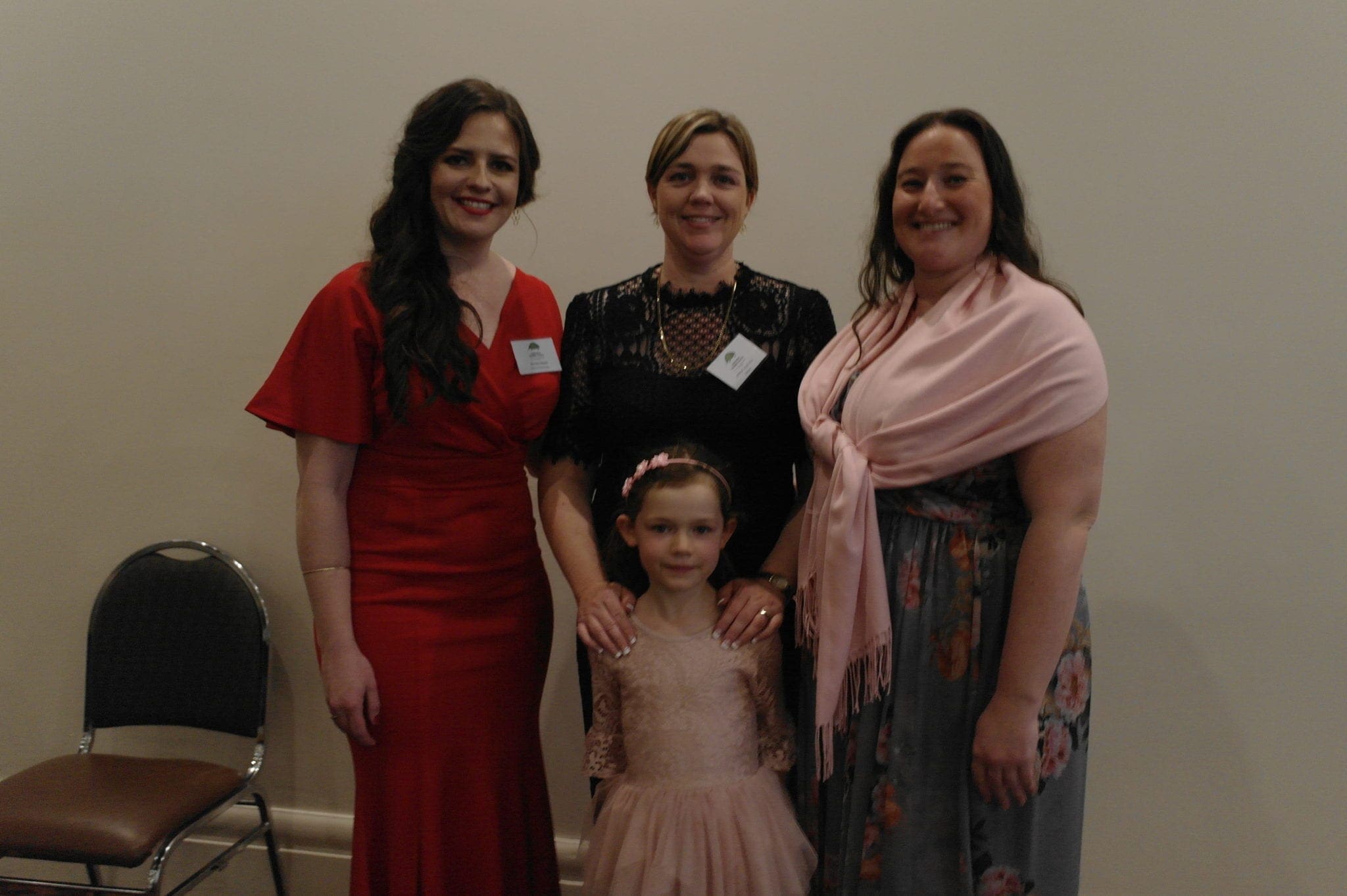
Australian Wildlife Society 110th Birthday Video Compilation
MEDIA RELEASE - 10/07/19
FERRERO AUSTRALIA SUPPORTING AUSTRALIAN WILDLIFE SOCIETY
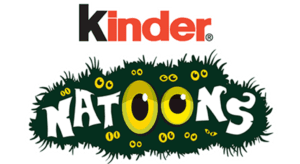
Sydney, 10/07/2019: As part of the new Natoons Kinder Surprise animal toy range launch, Ferrero Australia has partnered with the Australian Wildlife Society, which sees the charity secure a $70,000 sponsorship.
The sponsorship will help fund a number of wildlife conservation programs across Australia and New Zealand, and help protect endangered native animals. At the same time, the Kinder Surprise Natoons range will help educate the next generation on the importance of native wildlife through fun and educative online resources.
Patrick Medway, Chief Executive Officer of the Australian Wildlife Society said: “We would like to acknowledge the generous support of Ferrero Australia. The sponsorship helps us raise awareness of native endangered wildlife species. The groups selected by the Australian Wildlife Society will see much needed funding of a number of critical conservation programs”.
The programs are as follows:
- New South Wales - the Friends of the Koala based in Lismore. The Australian Wildlife Society admires their dedication and hard work saving and rehabilitating critically endangered injured koalas in the north coast of New South Wales;
- South Australia - Wombats SA who look after the Moorunde Nature Reserve just north of Adelaide as a habitat for the critically endangered Southern hairy-nosed wombats;
- Victoria - the Platypus Education Group whose aim is to educate, engage and excite children, and the community, about the endangered platypus that live in the local creeks;
- Northern Territory are helping save the endangered great bilby from extinction;
- Western Australia are helping the Native Animal Rescue group which is dedicated to the rehabilitation and release of sick, injured, orphaned and displaced wildlife, particularly the endangered black cockatoo;
- Queensland are contributing to save the endangered Lumholtz’s tree-kangaroo with the help of the Tree Kangaroo and Mammal Group Inc at Atherton who rehabilitates, orphaned, injured or displaced tree kangaroos for release back into the wild, and also the Currumbin Wildlife Sanctuary Queensland who have been successfully breeding the Goodfellow’s tree kangaroo to assist the endangered species;
- Tasmania - the Trowunna Wildlife Sanctuaryto educate the wider community of the plight of the Tasmanian devil through a range of programs;
- And New Zealand are funding conservation programs for the kiwi through Massey University (Palmerston North and Albany), NZ Dept of Conservation, and Manaaki Whenua Landcare Research. The endangered kiwi is an iconic nocturnal bird, where adults are found to live for decades but chicks are vulnerable to predators.
For further information visit: www.kinder.com and www.aws.org.au
2018 News
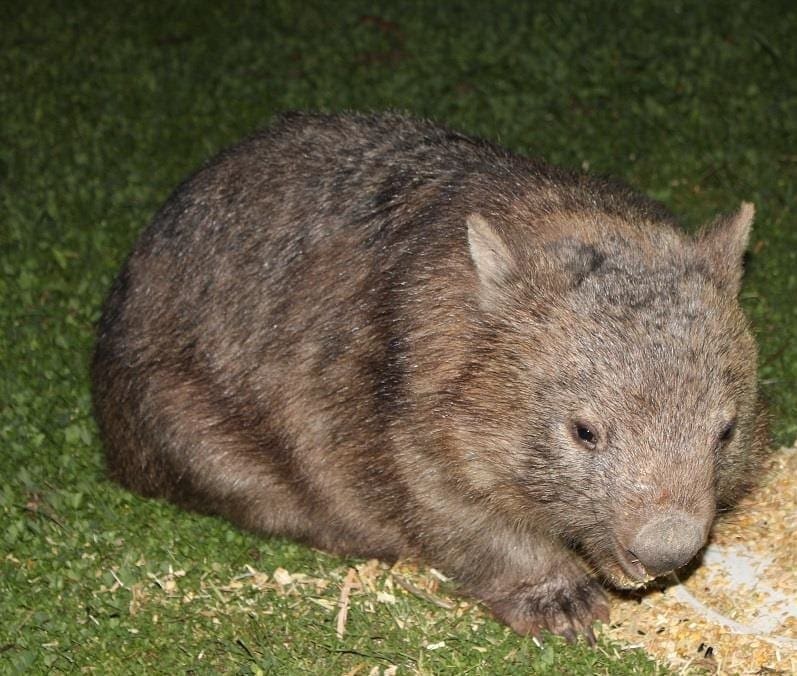
Fidel
Fidel the Splendid Wombat
This is the story of a small pink creature - a bare-nosed wombat who came into our lives and captured our hearts. My name is Christine and with my partner Larry we share our home “Wombat Creek Native Animal Refuge” with many different animal species. How were we going to look after this tiny orphan? Fortunately, somewhere in my bookshelf, I knew there was a manual about raising a baby wombat. MORE »
2018 Gala Ball very successfull Thank You to all those who attended
The 2018 Gala Ball was held again in the Grand Ballroom of the Western Leagues Club, Campelltown on Saturday 7 July. It was another outstandingly successful evening, with some 220 guests enjoying the festivities of music and dancing. A special thank you to all our sponsors who contributed to the fund raising for the evening, and especially to Damion Stirling of Wollondiilly Council for being our special guest speaker. to raise the awareness of the local koala populations. We thank director Trevor Evans for arranging the special visit of dingos, koala and snake to help highlight the plight of our wildlife and all those facing the threat of extinction for many species of Australia’s precious wildlife. MORE »
From the Directors Report (September)
The Board made a number of significant decisions at the August meeting which I am pleased to report to members.
Change to Membership. The Board agreed to establish a free Class B membership for students and schools across Australia. Our aim is to encourage all students to be more active in the Society and to make special resources available to them. This will be a work in progress and will take some time to activate. It will also involve setting up on our website a Members Only section whereby each of you will be provided with an access code. Look forward to further announcements about this in the future. On the subject of membership, it was encouraging to see that new members approved at the Board meeting came from several Australian states as well as from overseas.
Feral Deer. We were disturbed to read a report from the NSW Invasive Species Council that feral deer are putting drivers at risk on some roads. Many collisions with deer have been reported in recent years, many serious, including one death. The Illawarra district is apparently the worst area with the F6 Freeway being particularly dangerous. We have known for years that deer numbers in the Royal National Park have been multiplying despite calls for them to be culled. They are not cute Bambis, they are feral and not only do a lot of damage but compete with our native animals for food. This is but one further example of the dangers of introducing foreign fauna or flora into this country.
Feral Horses. While we are talking of feral animals it is appropriate to remind you that we wrote to the NSW Environment Minister expressing our dissatisfaction at the response we received to our initial complaint at the NSW Government’s decision to protect brumbies in the Kosciusko National Park. We do not call them brumbies, they are feral horses. At this stage, we have received no response to our second letter.
Platypus. Following the success of the Platypus Alliance, of which we are a partner, in Victoria, it is pleasing to be able to report that the Victorian Government has now instituted a buy-back scheme to buy back so-called Opera House nets and replace them with wildlife-friendly nets. We have already informed you that we were now directing our attention to Queensland. During a recent visit to that state, the CEO and I met with the committee from the University of Queensland who have set up the Platypus Alliance in Queensland. Our Society has provided $500 in seeding money to them to get the work underway. We hope to be able to report a similar success to Victoria in the near future.
Echidna Research. During the Queensland visit, we were pleased to learn of research into the echidna being undertaken at Currumbin Wildlife Sanctuary. This is being undertaken by Kate Regester-Dutton, one of the Platypus Alliance organisers, as part of her UQ studies. The echidna, as you will know, is the emblem of our Society, but, surprisingly, little is known about its biology compared with other Australian animals.
Land Clearance. We were disturbed to learn of the proposal to clear a swathe of North Queensland forest to make way for agriculture. This forest, the size of the Sydney and Melbourne CBD combined is one of the last refuges of the golden-shouldered parrot. The destruction of this forest area would almost certainly mean that the bird would no longer survive in the wild, but would exist only in captivity. Not only that, the river running through the area runs into the sea adjacent to the Great Barrier Reef so that fertilizers from any future farming would find their way to and endanger the Reef. It was agreed that we should write to the Federal Minister for the Environment urging her in the strongest possible terms to deny approval for this important wildlife habitat land clearing.
On behalf of your Directors
Suzanne Medway AM
President
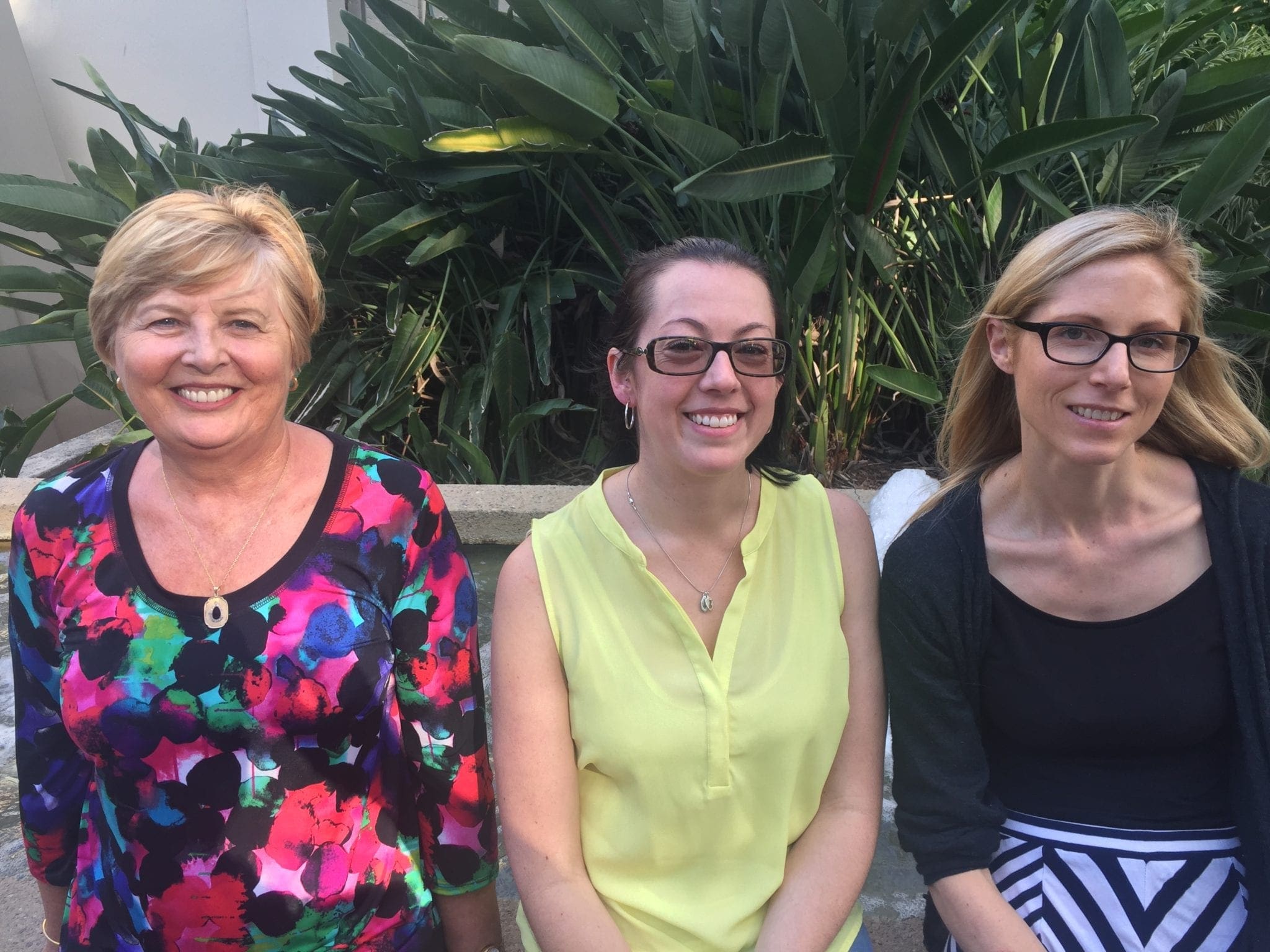
L to R: Suzanne Medway, Tamielle Brunt and Kate Dutton-Regester
Queensland Platypus Alliance
The Queensland Alliance for Platypus has been formed off the back of the success of the Victorian Alliance for Platypus Safe Yabby Traps. The Victorian success in banning enclosed yabby traps across the state has been a push for other states to step up and do the same.
These traps are an animal welfare issue for air-breathing animals, as well as a significant conservation issue for platypuses. Regulations in Queensland are confusing, and we are still seeing horrible deaths of platypuses and rakali in these nets even after the change of regulations in 2015.
A complete ban on the sale, use and possession of these nets will take out the confusion and alternative, wildlife-friendly nets can be used.
Seed money donation
The Australian Wildlife Society recently made a seeding donation to help establish and fund this new alliance.
With the support of organisations including AWS, the alliance is urging the Queensland Government to follow Victoria’s lead and change regulations and for retailers to voluntarily pull them from their shelves and promote alternative, wildlife-safe nets.
The alliance is writing to the Minister of Agriculture, Hon. Mark Furner, to voice its concerns, as well as contacting retailers to urge them to acknowledge the issue and remove the nets.
How can you help? Sign and share the change.org campaign at https://chn.ge/2K2y1j0 and help to educate people about the issue.
Engage with those who make policy
Contact your local or state politicians, and very politely ask them to support a change in regulations which ban the sale, ownership and use of enclosed yabby traps, and explain why. The minister responsible for both fisheries regulations in Queensland is the Honorable Mark Furner MP, email: agricultural@ministerial.qld.gov.au
Spread the word
Many people are simply unaware of the regulations (i.e. not to be used in Queensland public waterways) or about the risks that these nets pose (i.e. they drown air-breathing animals), so please pass this information on. If you find an enclosed yabby trap being used illegally, immediately report this to the relevant authorities. In Queensland, report to Fishwatch − 1800 017 116.
Talk to the retailers
If you go into a fishing/outdoor store, ask if they sell enclosed yabby traps such as opera house nets, and if the answer is yes, explain the issue to them and then ask them if there is a good reason they won’t stop selling them. To find out who sells them, just Google the words “opera house net buy” and you’ll get a good idea.
Buy wildlife-friendly nets such as open top or hoop nets − they catch just as many yabbies!
2017 News
Australian Wildlife Inaugural Ball
On Saturday 17 June the Society held its inaugural ball in the Western Leagues Club, Campelltown. It was an outstandingly successful evening, with some 250 guests enjoying the festivities. A special thank you to all our sponsors who contributed to the fund raising for the evening, and especially to Tim Faulkner of Devil Ark for being our eminent guest speaker. Before telling an enthusiastic audience about Devil Ark, Tim spoke about the threat of extinction to many species of Australia’s precious wildlife.
AWS Inaugural Ball June 23, 2017
Winner of the major raffle of a Toyota Ascent Sports Car – Xena Millmore. L to R: Trevor Evans, Xena Millmore, Steve Wisbey and Suzanne Medway.
AWS Inaugural Ball June 23, 2017
Cheque presentation. L to R: Ken Mason, Noel Cislowski, Clive Williams, Suzanne Medway, Robyn Weigel, John Weigel, Trevor Evans and Wayne Greenwood.
AWS Inaugural Ball June 23, 2017
Suzanne Medway AM, President of the Society, presented Tim Faulkner with the first sponsorship donation to Devil Ark.
AWS Inaugural Ball June 23, 2017
Dr Janette Keir accepting second prize in the raffle – a $3,000 travel voucher – on behalf of her sister, Dr Robyn Coman.
AWS Inaugural Ball June 23, 2017
Colleen Keys, Margaret McGurgan nursing Peppa, the Tasmanian devil, and Suzanne Medway

Australian Wildlife Society - University of New South Wales Wildlife Ecology Research Scholarship
We are delighted to announce the introduction of the Australian Wildlife Society Wildlife Ecology Research Scholarship that is open to University of New South Wales postgraduate research students who are undertaking a research project that is of direct relevance to the conservation of Australian native wildlife (flora or fauna). The scholarship totals $5,000, and will be awarded to one candidate, who will receive one payment of $2,500 each semester. The scholarship is provided to support operational costs associated with the successful candidate’s research project, such as:
- Travel associated with the research project
- Fieldwork expenses
- Specialist software
- Small items of equipment (i.e. less than $5,000)
Instructions for applicants of the Wildlife Ecology Research Scholarship
Are you a full-time PhD candidate or Masters Research Student?
Does your project have direct relevance to the conservation of Australian native fauna or flora?
You may be eligible to submit an application for the newly established Australian Wildlife Society Research Scholarship to help you complete your degree.
Scholarship details: Scholarship valued at $5,000 for 1 year
How to apply: Click here and follow links to scholarships and prizes
Applications Close: 31 May
2016 News
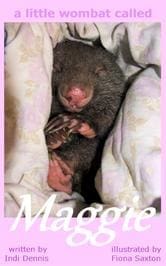
Meet Maggie the wombat
Hi, my name is Indi Dennis.
I am a regional adviser for the Australian Wildlife Society.
Several years ago my sister, Fiona, and I combined our creativity to create my new eBook "A Little Wombat Called Maggie". Maggie is an orphaned bare-nosed wombat joey who was rescued, raised and released by Farmer Joe and his wife Mrs Joe.
Essentially an educational kid's book, but great for anybody who might rescue a wombat as it has do's and don'ts of wombat care woven throughout the story. Fiona has beautifully illustrated Maggie, bringing the book to life!
My book is now available to download on kobo.com for just $10.00, however so many people have asked me to provide a hard copy of the book.
Kobo sales can be found here - KOBO STORE
All proceeds of "Maggie" will go toward my own wildlife work, rehabilitating native animals and also teaching native animal care to others. So, today I am calling out for your help. I can't afford to have the book printed so am hoping to get support. Remember, funds go to continuing my wildlife work.
Please check out my wildlife website - www.fourthcrossingwildlife.com
2015 News
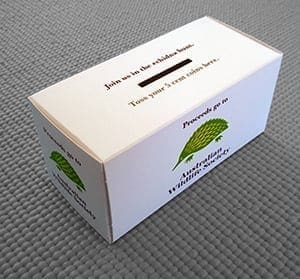
Join the echidna hunt
Did you know that the echidna is the symbol of our Society and that the echidna is featured on the 5 cent coin?
Following the successful launch of our 5 cent collection boxes last year, businesses and families are now collecting for us. Those of you who have not yet joined the echidna hunt are invited to do so.
If you are interested in collecting 5 cent coins to participate in this fundraising process, please contact us and we will mail a collection box to you. Use them at home or at your place of work, invite friends and colleagues to take one and invite your friendly local businesses to join in. By this means small individual efforts can lead to a grand achievement. The proceeds will be used for the Society’s programs, such as the university grants.
Once the collection box has been filled, just take it along to your nearest Commonwealth Bank. All the deposit details are printed on the bottom of the box.
Once the coins have been banked, let us know your details and how much has been banked and we will send you a tax deductible receipt.
Email us at info@aws.org.au for your collection box.
To raise the funds Margaret Deas completed 102 squats on her 102nd birthday
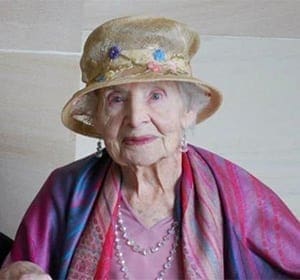
Margaret Deas is the oldest member of the Australian Wildlife Society. She turned 102 years young on 2 February 2015 and her goal is to raise funds to support Australia's precious native wildlife. She aims to encourage the younger generation to support and love Australian wildlife like she does. Margaret is donating funds raised to the Australian Wildlife Society. MORE »
To raise the funds she aims to complete 102 squats on her 102nd birthday.
She completed the challenge on the 2nd February 2015. Watch out for the upcoming story on the news. On completion we will be posting a video of the challenge on social media. Click here to view.
All funds raised will be contributing to one of Australian Wildlife Society's conservation projects. Click here to support Margaret Deas.
Donations over $2 are tax deductible.
2014 News

When our Director, Clive Williams, learned that William Ryan, publican at the Harold Park Hotel in Sydney, was collecting 5 cent coins in his business, Clive approached him to consider saving them for our Society. William was taken by the link between the echidna on the coin and the echidna we have as our Society’s emblem and readily agreed. Not only that, he arranged for Clive to speak to other hotels and businesses in his area. As a result we now have several businesses collecting coins on our behalf.
We have provided signs and collection boxes for those that required them. The Society has now decided to invite all of you, our members and friends, to participate in this fundraising process. We have purchased collection boxes which we will mail to those of you who request them. Use them at home or at your place of work, invite friends and colleagues to take one and invite your friendly local businesses to join in. By this means small individual efforts can lead to a grand achievement. The proceeds will be used for the Society’s programs such as the university grants.
Once the collection box has been filled, just take it along to your nearest Commonwealth Bank. All the deposit details are printed on the bottom of the box. Once the coins have been banked, let us know your details and how much has been banked and we will send to you a tax deductible receipt.
Email us at info@wpsa.org.au for your collection box.
2013 News
President appointed Member of the Order of Australia
We are delighted to announce that our President, Suzanne L Medway, has been appointed a Member of the Order of Australia (AM) in recognition of her significant service to wildlife conservation work and her dedication to the work of the Society over many years.
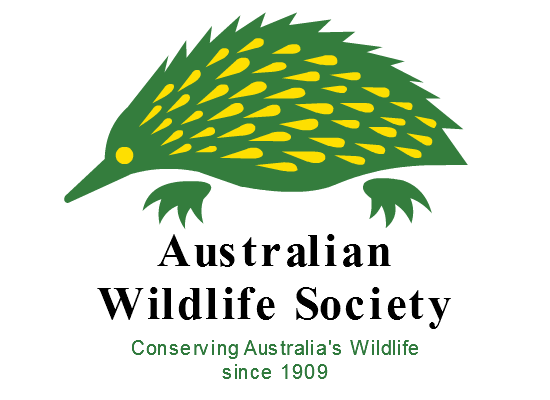
Wildlife Preservation Society of Australia rebranded Australian Wildlife Society
After careful research the Board has decided to adopt and register a new brand name for the Wildlife Preservation Society of Australia Limited.
Our new brand name is Australian Wildlife Society and will be used to position the Society as the leading Wildlife Organisation in Australia. We will attract new members to support the important wildlife conservation work of the Society which was established in 1909. Our national magazine has been called Australian Wildlife since the first edition was published in 1934.
We believe the new brand name has more engagement with the younger generation of Australians and we trust you will find it more appealing for wildlife conservation.
Wildlife Ecology Science Research Scholarship
Are you a full-time PhD candidate or Masters Research Student?
Does your project have direct relevance to the conservation of Australian native fauna or flora?
You may be eligible to submit an application for the newly established Australian Wildlife Society Research Scholarship to help you complete your degree.
Scholarship details: Scholarship valued at $5,000.00 for 1 year
How to apply: Click here and follow links to scholarships and prizes
Applications close: 28 February
All seven species of sea turtles are listed as threatened or endangered, yet in many areas little or no regulations exist to control the take of these ancient seafarers
The Wildlife Preservation Society of Australia has joined with a coalition of wildlife conservation organisations that are all calling for the end to hunting and killing by anyone of vulnerable or endangered Australian wildlife.
The coalition is lobbying the present federal government to alter the Native Title Act of 1993 because the twenty year old Native Title Act allows the unrestricted hunting and killing of about fifty species of Australian native wildlife.
Some are listed locally and internationally as endangered or vulnerable to extinction.
Traditional hunting, fishing and foraging practices currently conducted in Australia under Aboriginal traditions and Islander customs target over 50 native wildlife species both terrestrial and marine. These include bustards, crocodiles, dugongs, echidnas, emus, fish, flying foxes, frogs, goannas, lizards, macro pods, magpie geese, mutton birds, possums, shellfish, and snakes, as well as fresh and saltwater turtles.
All the above have no limits or monitoring of numbers taken.
We therefore call for an urgent change to the Native Title Act 1993, so that any endangered or vulnerable animal or marine life is excluded from hunting and killing by any means, for any reason.
We are joined in this campaign by:
- Animals Australia
- Australian Anti Shark Finning Alliance
- Australian Wildlife Protection Council
- Australians for Animals
- Bat Conservation & Rescue Qld
- Bob Irwin Wildlife & Conservation
- Cairns Turtle Rehabilitation Centre
- Cee4life
- Dugongandturtles.com
- Durong Dingo Sanctuary
- Earthrace Conservation
- Fourth Crossing Wildlife
- International Anti Poaching Federation
- Koala Hospital Port Macquarie
- Koala Preservation Society NSW Inc
- KoalaTracker
- RSPCA Queensland
- Sea Shepherd Australia
- Southern Ash Wildlife Shelter
- Wildlife Protection Association of Australia
- Wombat Awareness
For more information including links to a full list of native animals that are endangered or vulnerable can be foundhere »
» REQUIRES ADOBE ACROBAT READER TO VIEW. YOU CAN DOWNLOAD FREE VERSION HERE.
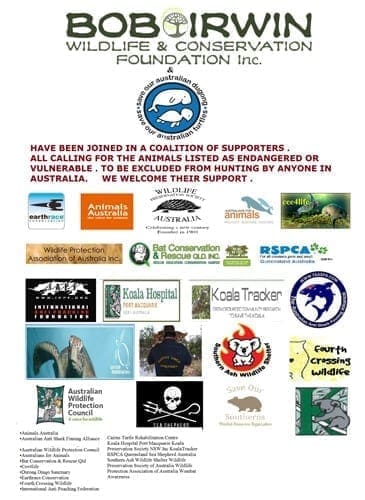
The Hon Tony Burke MP: Tony.Burke.MP@aph.gov.au
Minister for Climate Action, Environment and Heritage
Greg Hunt MP: Greg.Hunt.MP@aph.gov.au
Shadow Minister for Climate Action, Environment and Heritage
We ask you to unite on this and protect all our wildlife in one hit.
Birth of a musk duck
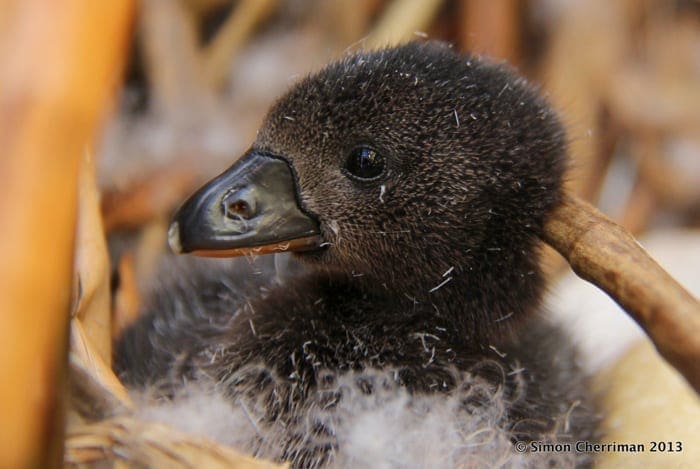
Our Regional Advisor for Western Australia, Simon Cherriman, was blessed with good luck when he went to check on a musk duck nest and found the eggs hatching.
He recorded some footage of the first chick pipping out of its egg, then left a miniature video camera recording to monitor what happened. When he returned two hours later, he was thrilled to find he had captured the whole event on film!
You can see in the picture that this ducking, only hours out if its egg, still has a clearly visible egg tooth at the end of its bill. This is a unique feature of all birds and is needed to crack through the shell; the egg tooth is shed a few days after the young emerge.
The short film 'A Hatching Success' can be viewed below:
2012 News
National President Honoured
Suzanne Medway received a 2012 NSW Seniors Week Achievement Award in the category Environment, Science, Agriculture. Her family and nominator accompanied Suzanne to the award presentation and cheered her on as she accepted the award from Graham Ross, the NSW Seniors Week Ambassador for this category.
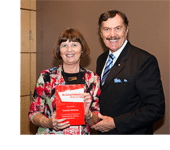
2010 News
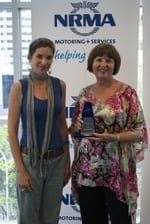
Suzanne Medway, President of the Australian Wildlife Society wins 2010 NRMA Helping People Awards
Every year across NSW and ACT, hardworking volunteers lend their helping hands to assist charities in their community. The NRMA Helping People Awards recognise the tireless contribution these people make.
Suzanne Medway has been awarded the 2010 Environmental Volunteer Award for her contribution to preserving Australia's wildlife.
Suzanne was born in Kogarah, Sydney, and educated at Kingsgrove High School and St George TAFE. She holds an Associate Diploma in Business (Office Administration) and is a Justice of the Peace for New South Wales.
She has had considerable experience at middle and senior management positions in commercial business including Seagram Limited, A & A Insurance, and served as Company Secretary for Australian Defence Industries (a multi-million dollar government defence company) prior to retiring. She has travelled widely and is familiar with most aspects of Australian wildlife conservation. Suzanne has had prior board experience serving as a director on the boards of the Business Enterprise Development Agency in Mascot and the Business Enterprise Centre in Southern Sydney.
She also served as Secretary and then Vice-President of the Central Gold Coast Chamber of Commerce and is a board member of the Brighton Le Sands Chamber of Commerce.
Suzanne has been a member of the Australian Wildlife Society since 1988 and was elected as Secretary/Executive Director in 2002. Since that time Suzanne has modernised the office administration, created and maintained the website, increased the membership base and raised the standard of the Australian Wildlife magazine to a very professional level, along with the new wildlife email Newsletter. Suzanne has also edited three books for the Society – Conserving Australia’s Wildlife (The History of the Australian Wildlife Society; Conservation Victories and Battles Yet to Win; 100 Years of Saving Australia’s Wildlife (The History of the Australian Wildlife Society 1909-2009).
Her experience and commitment over the past twenty years earned her Honorary Life Membership of the Society in 2008. Suzanne’s in-depth knowledge and experience prepared her well for her new role and she was elected President of the Australian Wildlife Society in March 2010.
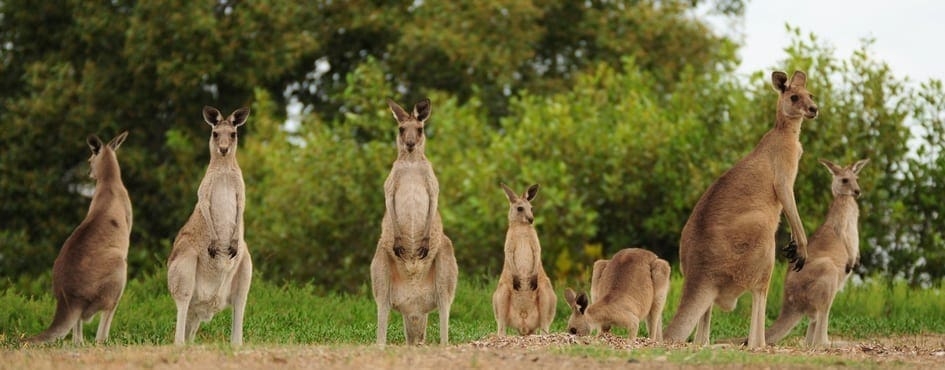
Call for Australians to voice their opinion in the national kangaroo survey
The kangaroo may be an Australian icon which unites the country in sporting battle, however when it comes to managing its population there appears to be as many views as there are roos and this is making their effective management difficult.
A unique study has been launched to survey Australian views of their most famous national animal with the results used to help shape future management plans for kangaroos.
PhD candidate, Pip Chalk from the University of Western Sydney's School of Natural Sciences has created the online kangaroo survey as part of a study into the 'human dimensions' of roos.
Unlike many official reviews of kangaroo management plans which mostly attract interest from those with the strongest views and closest connection to kangaroo management, this internet-based kangaroo survey is designed to capture the widest diversity of Australian views and voices.
"The relationship between the Australian people and the kangaroo has traditionally been complex and is an on-going challenge for agencies charged with managing wildlife, ecosystems and agricultural land," says Ms Chalk.
She says better capturing of community views and greater communication between stakeholders could take the heat out of the kangaroo debate.
"Kangaroos polarise opinions and this makes them very difficult to successfully manage. "
"A kangaroo bounding across the Australian landscape can inspire awe, but for people who are adversely affected by its adaptability and prolific breeding it can represent a threat to the local environment. For some, the roo is a natural resource to be harvested and under the law it's a native Australian animal that is protected. "
In the kangaroo survey, participants are asked how the kangaroo makes them feel, what the animal means to the nation, their views on protection, culling and harvesting roos as a resource for food and other products.
The survey even includes a question about the television series that has become as iconic as the animal itself, 'Skippy the Bush Kangaroo'.
"Despite the place of the kangaroo in the Australian folklore and contemporary society, there is surprisingly little research into the attitudes and perceptions of Australians towards the animal. However, there is a growing international trend to collect data on community views of wild animals and use this to defuse tension between interest groups and help shape management plans which are more effective for the community and environment as a whole. "
To participate in the survey visit: www.kangaroosurvey.com
Election of Exectutive Directors - 2010
The Australian Wildlife Society is pleased to announce that Suzanne Medway has been elected as the 18th President of the Australian Wildlife Society at a meeting of the Board of Directors of the Society on 7 April 2010. Suzanne has been a member of the Society since 1988 and was awarded Honorary Life Membership in 2009 for her outstanding services to the Society. Suzanne was elected as the Honorary Secretary of the Society in 2002.
History of the Australian Wildlife Society released
We now have a new book on the history of the Australian Wildlife Society available.
2009 News
100th Annual General Meeting - 2009
The historic 100th Annual General Meeting of the Australian Wildlife Society Limited was held on Wednesday 25 February 2009 in Sydney. The Hon Carmell Tebbutt MP, Minister for Environment and Climate Change, was the Guest of Honour and unveiled a commemorative plaque to mark this special occasion.
Centenary Celebrations
The Society’s Centenary year started with a Sydney Lord Mayor’s Reception, which was a great success. Life Members and long term members of the Society enjoyed a morning tea in the Lord Mayor of Sydney's reception rooms to mark the start of the Society's Centenary celebrations.
A Centenary Luncheon to celebrate 100 years of conservation work by the Australian Wildlife Society was held in Sydney on Friday 22 May 2009 in the presence of Her Excellency, Professor Marie Bashir AC CVO, Governor of New South Wales.
Over one hundred members and friends joined our celebrations in the beautiful Cello’s Restaurant. Her Excellency gave an impassioned speech and unveiled a Centenary commemorative plaque.
For our Victorian members, a Civic Reception, hosted by the Lord Mayor of Melbourne, Robert Doyle, was held on Monday 25 May. His representative for the evening was Dr Cathie Oke, who has a special interest in environmental issues.
On Thursday 2 July a civic reception was held in Darwin, hosted by the Lord Mayor of Darwin, Graeme Sawyer. The Lord Mayor is also head of the Cane Toad Control Council.
Councillor Peter Matic, representing the Lord Mayor of Brisbane, hosted a reception for our Queensland members and supporters in the Brisbane City Hall on Wednesday 22 July.
2008 News
Centenary Membership
It is with great pleasure we invite new members to join the Society to mark our Centenary in 2009 by joining up during 2008. A special new Centenary Membership Certificate was launched on 5 January 2008 to mark our Centenary in 2009 and those new members wishing to receive a special Centenary Membership Certificate suitable for framing can do so by joining throughout 2008 and 2009 and paying a fee of $100. All funds collected through this method will go towards our wildlife preservation projects across Australia.
Existing and long term members are also invited to take out this new membership as well or to use it to introduce new members or family and relatives to the conservation work of the Society. Our aim is to expand our national membership by 2009, when we will be marking our centenary of conservation work across the nation.
2007 News
Society mourns the death of Dr Vincent Serventy AM BSc BEd DSc
Patrick W Medway AM, President of the Australian Wildlife Society, expressed the great sorrow of both Council and Members on the death of their beloved President of Honour, Dr Vincent Noel Serventy AM, on Saturday 8 September 2007. He passed away in his sleep in a nursing home at Woy Woy, aged 91 years.
“He will be sadly missed by several generations of Australians who had the pleasure of meeting him, working with him or reading his many conservation publications. He was truly regarded by many of us as the ‘Father of Conservation in Australia’ and his wit and wisdom will be sadly missed,” Patrick Medway stated. MORE »
2006 News
A word about the bilby from the Australian Wildlife Society
Have you seen a bilby?
This shy little marsupial has a grey and white silky coat, long sensitive ears and pink pointed nose. With huge rabbit ears and soft grey fur it's easy to see the resemblance to rabbits, but that's where it ends. In earlier times, the guardians of the land knew that the bilby could be found all over Australia, but nowadays they can only be seen in certain remote places.
How is the Wildlife Preservation Society helping, and how can you help?
Members of the Australian Wildlife Society have been working since the Society’s foundation in May 1909 to preserve and protect Australia’s wildlife in all its forms.
The Wildlife Preservation Society is proposing to support a community driven bilby conservation program in the Northern Territory that will focus on the establishment of wild breeding populations of bilbies. The program will be run out of Yuendumu (which is approximately 150 kilometres north-west of Alice Springs) through the traditional guardians of that country in conjunction with the Central Land Council.
We invite you, a visitor to our website, to also help and support these programs with us to “Save the Bilby” by making a donation to the conservation work of the Society.
Centenary of the Australian Wildlife Society
The Wildlife Preservation Society was formed in 1909 and is dedicated to the conservation of Australia’s unique wildlife in all its forms. With this proud history behind us it now behooves us to plan for the future of our Society, its membership and the continued protection of our precious Australian wildlife.
Since its formation in 1909 the Society has maintained an important independent outlook and not been beholden to any government. To the contrary, the Society has been a fierce critic of poor performance by government officials and has lobbied hard to ensure that all agencies at all levels discharge their legal and moral responsibilities to ensure that our Australian wildlife is properly protected under the law. With a sound independent constitution, the Society has survived against hard times and in good times to the extent that with continuing good sound management and good leadership it will continue to flourish and make a real and ongoing contribution to protecting Australian wildlife in all its forms well into the future of Australia.
The Council of the Society is working towards a year of celebrations in 2009 to celebrate 100 years of wildlife conservation is Australia, commencing with a Centenary Luncheon, to be held in March 2009.
Keep an eye of this section of the website for further announcements about the Centenary celebrations.
National President Honoured
The National President of the Society, Patrick W Medway JP, was honoured in the 2003 Australia Day Honours. He has been made a Member in the General Division of the Order of Australia (AM) for his service to Australian wildlife conservation and the environment through environmental education and a range of organisations and committees concerned with the preservation of Australian wildlife and nature particularly for his outstanding leadership work for the Wildlife Society Preservation Society of Australia.
